Upcoming Destinations: Pacific Coast Mexico, El Salvador, Costa Rica and Panama

EXPERIENCE Boat Life!
Join us for a Catamaran Sailing Experience!
If you‘re asking yourself these questions…
What if I living on a sailboat was for you?
What if I sailed around the world?
What if I wanted an alternative lifestyle?
What if Experience Boat Life could answer your What Ifs today?
About Boat Life
Our passion.
Hello! We are Lela and Steve Schober. Currently, we live aboard a 2013 Lagoon 450f sailing catamaran. Our life seems like a dream, since it was only two years ago when we embarked upon the journey of a lifetime. By whittling down a thirty year plan to one year, we made the decision that life should not wait!
We didn’t let our lack of experience or time on a sailboat stop us. We embraced the “What ifs” and quickly developed a passion for sailing and the live aboard lifestyle. There's nothing quite like the feeling of being out on the water, sails up and engines off. We want to share that feeling and help you discover if this is the lifestyle for you!
Our Mission
Our mission is to immerse potential cruisers into the day to day life aboard a sailing yacht. This is not a charter. This is not boat sales. This is customizable sailing education so you can see if living on the water is for you. When we purchased our boat, we did not have to opportunity to sail or access to the cruising community. We want to provide future cruisers that opportunity.
We believe in taking a holistic approach to sailing, which means focusing not just on the technical aspects of sailing, but also on the mental and emotional aspects. Sailing can be a great way to reduce stress, connect with nature, and find inner peace. We aim to help you achieve these benefits through our sailing experiences.
We have always embraced our life as a team. In our past life we both worked as educators in the same school district and were able to positively impact the lives of our students and community members. One aspect of our lives that went missing as sailors was the ability to give back to a community. We feel that we can regain this role by offering people considering a sailing lifestyle the opportunity to set sail with us. If you are ready to answer your “What Ifs” about live aboard sailing contact us, you never know this could be the day your life changes forever.
Are you ready to answer your What Ifs about sailing?
If you have questions about the opportunities available in our fully customizable educational experiences, send us a message to set up a free consultation. We will get back to you as soon as possible.
Get in Touch!
This site is protected by reCAPTCHA and the Google Privacy Policy and Terms of Service apply.
Explore the endless possibilities of life aboard!
Connect with us, join our email list.
Be the first to hear about our upcoming locations and availability.
Copyright © 2024 Boat Life - All Rights Reserved.
Powered by GoDaddy
This website uses cookies.
We use cookies to analyze website traffic and optimize your website experience. By accepting our use of cookies, your data will be aggregated with all other user data.
Yachting World
- Digital Edition

How to live aboard a yacht for years at a time
- Helen Fretter
- April 24, 2023
What if one or two years of adventure just isn’t enough? Meet the cruisers who’ve been on board for a decade or more, and find out how to make long-haul cruising work for you

“I probably wouldn’t even recognise the person that I was when I first started,” admits Brian Trautman, skipper of the Amel Super Maramu Delos (and eponymous YouTube channel ). In 2009 Trautman cast off his life in corporate America, hustling to make his own tech business a success, and set off on what he thought would be an 18-month-long cruising adventure. Fourteen years later he’s still sailing the world on Delos , now with his wife and young daughter. But if you have no idea where the future will take you, how can you plan to keep your cruising options open?
We spoke to cruisers who have spent between eight and 40-plus years cruising and living aboard. Some set out with a rough deadline, others had no stopping point in mind, but the common theme is that all were able to keep their plans flexible and had made the life changes necessary to stay afloat.
“When Jill and I moved aboard our 1984 Grand Soleil 39 Yahtzee in Seattle in 2012, we had no time frame,” explains Andy Cross. “It was, and still is, open ended with the caveat that if the lifestyle isn’t working for one of us we’d reassess and make changes. We always intended for the boat to be our home, not just for cruising, and it wasn’t a ‘one, two or three years and we’re done’ plan.
“We both had jobs, but we weren’t tied down to the trappings of a house and cars, so it was relatively straightforward moving aboard, beginning to learn the boat, and starting a family. Our goal was to take it slow, not sail to a schedule too often, and hopefully share the dream with our children. I’m happy to say, we’re still doing that over 10 years later.”

Brian Trautman’s 14-year sailing adventure aboard SV Delos has grown to include a family and a livelihood
Trautman initially thought his cruising adventure would be for less than two years, having sold all his possessions and taken out a mortgage to pay for the boat.
“When I left, the time frame was 18 months. The reason is when I ran my budget and my monthly expenditures, I only had enough money for 18 months. So my plan was to just go, get somewhere cool – my intention was to try and make it to New Zealand – and then figure something else out.
“I didn’t know if I was going to stop and work when I got there, or if I was going to leave the boat and fly home. Or if I was going to sell the boat and go back to work. All I knew was that I was going to go now and figure out the rest at some later point.
“I ended up stretching that 18-month budget to about two and a half years getting from Seattle to Australia. When I stopped in Australia, we hauled Delos out of the water for about a year. I actually did remote consulting while living in Melbourne to make money for the next cruising season because after having had that taste, I knew there was no way I could stop then.”
Like Trautman, Ginger and Peter Niemann dipped back into ‘real life’ after their first major adventure – a four-year, 50,000-mile circumnavigation west-about from Seattle aboard their 47ft sloop Marcy , including rounding both the Cape of Good Hope and Cape Horn .

The SV Devos family onboard
“When we moved aboard we had the idea to live aboard ‘as long as it was fun’, to quote Lin and Larry Pardey,” explains Peter. “It was certainly fun for a circumnavigation , but when we returned to home port four years after departure we were out of cruising funds. We rejoined the working world while living aboard.
“I assumed that was the end of our life afloat, and asked Ginger if we should put the boat up for sale upon our autumn return or wait until spring when the market might be better? ‘Heck no, we are just getting good at this!’ she answered, ‘But maybe we should get a boat you can stand up in!’ And so we lived aboard, swapped boats and worked until the cruising budget was restored a couple of years later, and set off again.”
Ages and stages
Long-term cruising looks different at different life stages. The Cross family always planned to sail through their boys’ childhoods, but are flexible as to how long they spend afloat at any one time.
“Every year is different. Some years, we’ve been on Yahtzee almost exclusively, other years we’ve taken off a few months at a time. This has worked well for us because we’ve planned the time away around northern winters or hurricane seasons in the south – times when we might not be cruising much anyway.
“We want our boys to know and be a part of their grandparents, aunts and uncles, cousins, and friends’ lives, which has meant taking breaks off the boat to spend time with everyone. Then, we return to Yahtzee excited, rejuvenated and ready to continue the adventure. Our ability to balance life ashore and cruising is one of the main reasons I think we’re still happy with the lifestyle of living on a boat.”
In the 14 years since he first sailed away with Delos , Trautman’s life has gone through huge changes. “I’ve found the love of my life, gotten married, sailed with my family, sailed with tons of friends, we’ve had a child on board,” he reflects.

SV Devos under sail
“When I first started cruising, I was absolutely in the frame of mind that I would spend 100% of my time on the boat. And as time has gone on, I’ve actually seen the value in taking time off the boat, because you don’t really understand how good something is until you take yourself away from it. So when we start to get a little edgy or a little like, ‘Oh man it’s another beach, but I don’t want to go to the beach today!’ then we know that it’s time to take a break.
“So at least once a year now, we’ll put the boat in a marina or yard, and we go back and visit our family for a few months. It’s even more important now that we have Sierra, because she’s three and a half, and I want her to know her Swedish heritage.
“But obviously, we fund our lifestyle through sailing and making YouTube videos. So if we’re not sailing and making videos, then we’re not making money.”
Some cruisers report that as they get older they find themselves spending more time ashore. After a second demanding circumnavigation, the Niemanns are shifting their sailing style. “We are just now entering a new phase of cruising plans,” says Peter, “We aren’t getting any younger, and recognise that at some point in time the stresses of voyaging will be more than we can easily handle. So for now we plan to enjoy exploring a smaller area in more detail.”
“The major life change was: cruising,” says Janneke Kuysters, who has been cruising with her husband Wietze on their steel-hulled Bruce Roberts design Anna Caroline for eight years. “After that, we haven’t had any major changes in our lives, apart from growing older and the repercussions of that re. strength and agility. In our minds we’re still 25, but the bones say different!”

Andy and Jill Cross try not to sail to a schedule but still spend a lot of time aboard Yahtzee 12 years after first setting out on their adventure
Both the Niemanns and Janneke and Wietze admit, however, that they don’t necessarily find being ashore more restful. “We have always needed to get back to the boat to regroup. Afloat is our comfort zone,” says Peter Niemann.
“We would typically fly to the Netherlands every two years for about three weeks, but the boat is our home, so that is where we feel happy and comfortable,” says Janneke.
For Janneke and Wietze, time ashore is instead spent exploring new countries. “For instance: we left the boat in Valdivia, Chile, for five months to go backpacking all over South America. In Australia, New Zealand and South Africa we have rented or bought a campervan to travel inland for weeks or months on end.”
Power of knowledge
‘To cruise is to learn,’ wrote Lin Pardey in The Self Sufficient Sailor , and with experience comes confidence. Many cruisers who have sustained their adventures for decades began their adventures relatively cautiously, building the skills that would then enable them to take on longer passages or explore more remote areas.
“When we were in our mid-30s, we sailed the Atlantic circuit with our 31-footer. This was a test year, meant to find out what it was all about and to gather information,” recalls Janneke. They then bought Anna Caroline “with all the knowledge we had gathered in mind”, and began an eight year circumnavigation – first sailing around Scotland, Ireland, Portugal and Spain before completing a transatlantic, then heading south to Brazil, Uruguay, Argentina, Antarctica and Patagonian Chile. They rounded Cape Horn, visited remote areas of the Pacific including Robinson Crusoe Island, Easter Island and French Polynesia, then headed north to Alaska and British Columbia.

The Cross family moored up
Cruisers often report that ocean crossings become progressively easier, and both faster and with less damage sustained, over the years. Much of that is down to the added knowledge they’ve gained, which feeds into making better decisions when it comes to sail selection, interpreting weather forecasts and predicting sea state, and knowing how their boat – and each other – fares in different conditions.
Also key is confidence in your own ability to handle any problems or fix any breakages when cruising more remote areas or for extended periods. Lin and Larry Pardey famously inspired many cruisers to cast off the lines with their advice to ‘Go small, go simple, go now’.
“I honestly feel that setting off cruising was a lot easier when we went because there was much less equipment that you added to your boat. So they were simpler machines, easier to take care of,” Lin Pardey says.
“I think that more people are put off cruising by the sheer hassle of fixing and having other people fix your boat, feeling like the budget is just being blown by mechanics and electricians.
“But it isn’t just keeping your boat simpler that matters, it’s being able to say, ‘Okay, I really don’t need that, so we’re not going to worry about fixing it right now’. It’s the ability to just do without it, if you can’t fix it. That’s a really important aspect of enjoying what you’re doing. I’ve seen people dream of sailing to the Tuamotus, but they get to the Marquesas with something broken and realise the only place they can fix it is Tahiti, so they just skip right through and miss the whole Tuamotus.

Ginger and Peter Niemann’s first circumnavigation was a four year trip aboard their 47ft sloop Marcy
“For example, the watermaker: if you make sure you have enough water tankage and learn to be quite happy with just limited water for a period, you can fix it later.”
Over years of living aboard, most cruisers we spoke to have made substantial upgrades or modifications to their boats to enable them to take on more adventurous cruising. “We try not to anthropomorphise, but we really have the feeling that ‘we take care of her, and she takes care of us,” says Peter Niemann.
“Our boats evolve continuously: equipment is upgraded, worn items replaced, dodgers added. Specialised Arctic (ice poles, redundant heaters) or tropical/desert (awnings, fans) items are acquired, stowed and put into service as needed. The essential major change we made to both our boats was the addition of cockpit shelter.”
“Pretty much every system has been upgraded over time. We have new instruments, a new chartplotter , a lot of solar and wind. One of the huge improvements was the lithium batteries because that allowed us to get rid of propane. And so we can really extend our range because it’s a lot easier to get diesel fuel in any part of the world,” explains Brian Trautman.
“We’ve also really upped our game with the dinghy. Our dinghy now is aluminium, it’s a little bit heavier, but we love it. It has a big engine, so it’s our SUV, our family car, and we need that.”

The Niemanns heading ashore
Pace yourself
When you have no fixed deadline, how do you plan? Most cruisers we spoke to sketch out ‘big picture’ plans determined by the seasons, but leave themselves the freedom to vary their route along the way.
“We typically plan about one season in advance, but we don’t plan in detail,” explains Trautman. “So right now, we’re planning our South Pacific season. And all we know is that we’re going to try and get to French Polynesia or the Marquesas from Mexico. We’re going to arrive sometime during April and then we have the next six or seven months to figure out what we’re going to do.
If it means we’re going to stay in French Polynesia for the cyclone season, or end up sailing west towards New Zealand for the cyclone season, we just don’t know.
“We just know we’re travelling generally westward best we can, and that’s often worked out for us. We pay attention to the big picture things: the hurricane season, cyclone season, when the good weather is, and we kind of make broad strokes to travel in that general direction.”
“Seasonally, we’ve set our plans to cruise more miles during summers in northern climates and then stopping or slowing down during the colder months of winter. It’s the exact opposite now in the tropics,” explains Andy Cross.
“Here we have hurricane seasons to contend with in the summer and fall, and insurance parameters dictate where the boat can be to continue coverage during named storms.”

The Cross family making great cruising memories
Maintaining momentum is a tricky balance, and will be different for everyone. “What made it work for us is we went without serious plans and kept ourselves highly flexible, we went cruising to just really enjoy sailing,” explains Lin Pardey. “But the thing that really kept us from getting tired of it or frustrated by it was taking advantage whenever we met somebody who said ‘Our family is on this little island, you should go visit them.’ So instead of heading south with other cruisers, we’d turn and head to some island or other, and ended up with wonderful friends who introduced us to other friends. So it was that real unscheduled-ness that kept letting us have new adventures and go in different directions.”
Lin and Larry Pardey broke up their cruising routine, which saw them voyaging for some 47 years, with periods spent working and also treating themselves to short ‘holidays’ on land.
“What people don’t quite expect is that if you set off on a voyage around the world, the seasons push you on and it can leave you feeling tired,” says Lin.
“I’ve watched people sail from England to New Zealand over a year and a half period, because that works nicely with the seasons. But when they get here, they’re just tired of moving on. The fact that we had to work meant we didn’t feel we always had to keep moving on. Every year we’d stop for at least three or four months, to let us catch up with ourselves.”
Equally, long-distance cruising can be exhausting, and without a broad-brush plan it can be tempting to linger, cautions Janneke. “It takes (a lot of) effort to keep yourself and your boat going. You are in a strange environment all the time, change is a constant in this lifestyle. It’s easy to arrive somewhere and make it your home. Especially when you have an open-ended plan, it can be attractive to stay somewhere a little longer.
“But that has an impact on everything that follows: you can manoeuvre yourself in a situation where you have to stay somewhere much longer than expected, because of the weather. Beaten paths are there for a reason, and often this reason is the weather. If you decide to leave the beaten path, you need to be independent in making your own plans and time schedule.”
And, sometimes, it’s about knowing when to stop. “When it came to planning our voyage, we sat with a lot of people that had returned from a long trip. We found that there is a tipping point after about 8-10 years. When people stay out for more than that, it becomes less of a voyage and more of a way of life. We are project-minded people, so we needed the voyage to have a beginning and an end. So we left with a plan to stay out somewhere between six and nine years. It worked out to eight years.”
Go slow, stay loose
So how do you know which pace is right for you? “My advice would be go slow and keep it loose,” says Trautman. “Write your plans in the sand at low tide, and be okay with changing them.
“And just take time. You’re not out there to check items off of a list, in my opinion. There are some places where you’ll be okay with leaving after a couple of days, and there are some places you’ll really want a few more weeks just to enjoy. That could be a factor of the place, or it could also be a factor of your frame of mind after moving for so long. That’s all part of the lifestyle.”
If you enjoyed this….
Yachting World is the world’s leading magazine for bluewater cruisers and offshore sailors. Every month we have inspirational adventures and practical features to help you realise your sailing dreams. Build your knowledge with a subscription delivered to your door. See our latest offers and save at least 30% off the cover price.

The global authority in superyachting
- NEWSLETTERS
- Yachts Home
- The Superyacht Directory
- Yacht Reports
- Brokerage News
- The largest yachts in the world
- The Register
- Yacht Advice
- Yacht Design
- 12m to 24m yachts
- Monaco Yacht Show
- Builder Directory
- Designer Directory
- Interior Design Directory
- Naval Architect Directory
- Yachts for sale home
- Motor yachts
- Sailing yachts
- Explorer yachts
- Classic yachts
- Sale Broker Directory
- Charter Home
- Yachts for Charter
- Charter Destinations
- Charter Broker Directory
- Destinations Home
- Mediterranean
- South Pacific
- Rest of the World
- Boat Life Home
Owners' Experiences
- Conservation and Philanthropy
- Interiors Suppliers
- Owners' Club
- Captains' Club
- BOAT Showcase
- Boat Presents
- Events Home
- World Superyacht Awards
- Superyacht Design Festival
- Design and Innovation Awards
- Young Designer of the Year Award
- Artistry and Craft Awards
- Explorer Yachts Summit
- Ocean Talks
- The Ocean Awards
- BOAT Connect
- Between the bays
- Golf Invitational
- BOATPro Home
- Superyacht Insight
- Global Order Book
- Premium Content
- Product Features
- Testimonials
- Pricing Plan
- Tenders & Equipment
We'll take you on board some of the world's finest superyachts as we sneak inside their luxury vessels and chat to the superyacht owners. We'll keep you informed on who's who in the yachting world as you share in their experiences both portside and at sea, and take heed of their advice .
Owners' experiences
Motor yacht owners, sailing yacht owners, owners' tips, long reads from boat international, people & parties, from our partners, sponsored listings.
Life on a Sailboat: Everything You Need to Know About Living on a Sailboat Full-Time
Living on a sailboat full-time is often romanticized as a life of endless sunsets, gentle waves, and freedom on the open sea. Many dream of casting off the lines and setting sail for a horizon of adventure and tranquility. However, the reality of life aboard a sailboat can be as challenging as it is rewarding, as frustrating as it is relaxing, and, more often than not, as mundane as it is exciting.
This blog post aims to peel back the curtain on the picturesque scenes to reveal what daily life is really like when you call a sailboat home. We will dive into the motivations, preparations, joys, and challenges of living on a sailboat full-time, providing a realistic glimpse into a lifestyle that is far from ordinary.
Our Live-Aboard Life
Our dream of living on a sailboat was a distant one for many years. But as we watched plans and dreams fall by the wayside in the wake of COVID, we made the decision to make our dream a reality. Once the borders opened up, we made a beeline for the Mediterranean and have since spent each summer living aboard our little 29-foot sailboat Whisper. Without any experience sailing or living on a sailboat, we have taught ourselves to sail and manage life on the boat along the way.
Before we took up sail life, we had been living “van life,” and we’ve come to realize there are lots of similarities but quite a few differences between the two . However, on the whole, learning to live van life first put us in good stead to take on life on a sailboat. Unlike most people, we up-sized when we moved onto a boat.
Despite the upgrade in living quarters, the learning curve and the adjustment to living on the sea were no less challenging. Nevertheless, the shift was not as scary as we thought it might be, and the reality of living on a sailboat full-time quickly became our new normal.
Initially, our plan was to buy a boat and spend one season aboard sailing the Mediterranean before selling the boat and settling down. Instead, it’s safe to say we have fallen in love with life on a sailboat. Now, as we enter our third season, we aren’t sure when we will be ready to furl the sails for good…
Get a Taste of Life on a SailBoat
We document some of the realities of living on a sailboat full-time on our YouTube Channel in our The Vanabond Sails series.
Deciding to Live on a Sailboat
The journey to becoming a full-time live aboard often starts with the desire for change.
Some people are transitioning from one stage of life to the next as careers wind up or children move out. Some yearn for adventure and excitement, while others seek a simpler way of life. Many are drawn to the promise of freedom, the allure of the sea, and the appeal of living more closely with nature. However, the decision to live on a sailboat full-time is not one to be taken lightly. It requires thoughtful consideration and planning.
For us, it was a long-held dream to sail and live aboard a sailboat. It was also a natural progression, having spent several years living and traveling by van . We were ready for a new challenge.
It began with a conversation, then a plan, and then trawling classifieds for second-hand boat sales. Before long, the decision was set in stone, and we were on our way to Croatia to buy a boat , learn to sail it, and move aboard.
Choosing the Right Sailboat
The type of sailboat you choose is critical and depends on your budget, sailing skills, and the kind of sailing you plan to do (coastal cruising, bluewater voyaging, etc.).
Will you prefer the size and stability of a catamaran, or will you prioritize the sailing experience of a monohull? Are you looking for something small that’s easily controlled and maneuvered by a limited (and potentially inexperienced) crew, or do you require the space of a larger vessel? Are you interested in the clean lines and comforts of modern boat designs, or do you prefer the style of older boats? There are a thousand decisions to be made when choosing a boat, and your own aspirations for boat life and, of course, your budget will be critical when it comes to making this decision.
Spend as much time researching boats that are available in your price range, ask questions of sailors you know or on sailing forums, and, if possible, spend time aboard different types of sailboats to get a clearer picture of what life is really like on board before making a purchase.
Check out our full article on buying boat .
Emotional and Practical Considerations for Sail Life
Living on a sailboat means embracing minimalism and being comfortable with the idea of having less space and possessions.
You’ll need to consider the impact of such a lifestyle on relationships with family and friends, as it can mean spending long periods away from loved ones.
The decision also involves considering how to manage work or income while living at sea , which might include remote work, seasonal jobs, or living off savings.
There are plenty of options for those planning on working remotely while sailing. With the rise of remote work , there has never been more opportunity to work and sail.
All of these considerations represent potential challenges to adjusting to life at sea, but they are certainly not insurmountable. You just need to be honest with yourself and decide if your love of the open water and the freedom of living aboard a sailboat will be greater than the inconveniences.
Preparations and Adjustments
Transitioning to life on a sailboat involves a series of preparations and adjustments, both practical and psychological, to ensure a smooth and sustainable living experience.
Training and Skills
If you are thinking about taking up sailing, you should, of course, invest time in learning to sail, navigate, and understand weather patterns. While this may seem like a daunting task, it’s not an insurmountable one. Time on the water is the most important thing, so it’s time to sign up for sailing courses, start planning trips with sailing friends, join a local sailing club, or seek out opportunities to crew for other sailors.
Learning basic boat maintenance and repair is essential to manage the myriad challenges that come with life at sea.
Safety courses, such as first aid, sea survival, and radio operation, are also crucial for handling emergencies.
These skills are important for safe and comfortable sailing and are often legally required. Make sure you are aware of the licensing and registration requirements for sailors in the region you are preparing to sail.
In our case, I had experience sailing small dinghies as a child and thus some understanding of the fundamentals, while Kelli had zero experience. My existing marine license issued in Australia was recognized in Croatia, where we bought our boat. I only needed to acquire a VHF radio license to become adequately certified for inshore sailing in the Mediterranean.
We paid some local sailors to come aboard and teach us both the fundamentals of our new boat (lots of docking and anchoring practice).
Downsizing and Adapting to Limited Space and Resources
As mentioned, moving onto a boat was actually upsizing for us. With a second cabin, a flushing toilet, and a large indoor table, our relatively small 29-foot monohull seemed luxurious compared to the vans we had been living in until this point.
However, for most, moving onto a sailboat often means significant downsizing, and space becomes a premium commodity. The process of downsizing for sail life involves prioritizing essential items and learning to live without the comforts of a traditional home.
Space isn’t the only limitation on a boat. Reliance on water tanks (if you don’t have a watermaker) and solar, wind, or generator electricity often means a downshift in access to creature comforts we take for granted in a house on the grid.
Creativity in organizing and making the most of limited space and resources becomes a daily practice, requiring innovative storage solutions and multi-functional furniture. Most modern sailboats are well-designed with endless space-saving measures and designs. Nevertheless, an adjustment will likely be necessary.
Financial Planning
Financial considerations are paramount, as the cost of living on a sailboat can vary widely depending on factors like marina fees, maintenance costs, and lifestyle choices.
Setting a realistic budget that includes regular maintenance, unexpected repairs, and living expenses is essential for sustaining life at sea.
Depending on your personal aspirations for boat life, this lifestyle can be as affordable or as expensive as you want to be. For us, as a couple in our thirties still in the building and saving part of our lives and careers, we are able to live on a boat in the Mediterranean affordably and comfortably for far less than we (estimate) we would spend living a more stationary lifestyle.
Check out our full article on the Costs of Living on Sail Boat Full-Time
Overall, adjusting to the confines and challenges of sailboat living demands not only physical preparation but also mental resilience and adaptability. The transition from land to sea is a profound shift, requiring a willingness to embrace simplicity, flexibility, and a sense of adventure.
Daily Life Aboard
While there is no typical day aboard, and experiences will differ wildly from person to person and day to day, we can describe what many of our days do look like.
As we work from the boat, our weeks are generally divided into work days, Monday to Friday morning and weekends. The truth is that the novelty does wear off, and many days, especially during the working week, become just as mundane as any other lifestyle. However it never stays mundane for long, one exhilarating sail, a dolphin sighting, a picture perfect anchorage or even surviving an impromptu weather event and the thrill of living on a sailboat quickly returns.
A typical workday for us living on a sailboat often starts with the sunrise (or a little bit before if we have a lot on). Ideally, we are well rested after a still night without rolling swell or, worse, strong wind, but that isn’t always assured at sea. Mornings involve checking the weather first and foremost, all plans revolve around the direction and strength of the wind and waves.
If the weather is calm, we usually try to work in the mornings when we are fresh and focused.
We travel slowly, often spending a few days in a quiet, well-protected anchorage, on a town quay, or in a marina before moving on a short distance along the coast. On sailing days, we often sail in the afternoon when the winds are a bit stronger in the Mediterranean. On days we are staying put, the afternoon might be spent exploring a new town, getting provisions, swimming, or finding a beach to lie on and read a book. In the evening, we will cook dinner onboard and get some more work done or watch some TV.
Weekends look different, and we will take advantage of not needing to be close to reliable network services, completing longer passages along the coast, or visiting islands.
Daily Differences in Sail Life
Living spaces on a sailboat are compact and multifunctional, necessitating an organized and tidy approach to prevent clutter and ensure safety. Cooking in a small galley kitchen presents its challenges, from securing pots and pans on a constantly moving boat to managing limited ingredients and storage.
Meals often need to be simple yet nutritious, requiring creativity and planning. Our approach is to cook simple, one-pot, vegetarian meals like dal or vegetable curry two or three times during the workweek and eat leftovers for lunch and dinner. On the weekend, we like to get more creative with our meals, seeking out local produce or fresh seafood and taking our time to prepare something special.
As mentioned, resource management is a critical aspect of daily sailboat life, especially when it comes to conserving water, fuel, and electricity. Efficient use of these resources is vital, whether it involves careful water usage, monitoring power consumption, or planning the next opportunity to resupply. For us, an electricity supply is mainly dependent on the sun when we are not under motor or plugged into shore power. Extended periods of cloud can alter our plans. Similarly, if we are not careful with water, more frequent visits to refill are required, which can be limiting.
Personal hygiene and privacy take on a new meaning in the confined space of a sailboat. Showers may be quick and infrequent. In our case, we generally rinse off after a swim to bathe and take proper showers during marina stops. Personal space is limited on a sailboat and managing personal relationships can have extra challenges.
Sleeping on the boat can take some getting used to, especially when on anchor. Even on a calm day, the constant rocking of the water can be disruptive at first, and novice sailors may find they get seasick, although these symptoms usually go away after a few days. When it’s windy, or there is some swell, the noise, movement, and the ever-present worry that the boat may pull off its anchor with the movement can make it very difficult to get a good night’s sleep.
Unforecast storms, gear failure, or some other emergency can occasionally create scary and challenging scenarios, especially if disaster strikes late at night. These situations are part of the adventure but can certainly be stressful.
Despite the challenges, daily life on a sailboat is interspersed with moments of profound beauty and peace. Whether watching dolphins play in the bow wave, enjoying a sunset over the ocean, or stargazing on a clear night, these experiences often make the hardships worthwhile, offering a sense of freedom and connection to nature that is hard to find elsewhere.
The Pros and Cons of Living on a Sailboat Full-Time
Pros: the joys of sailboat living.
Living on a sailboat brings a unique set of joys and rewards that can make the challenges seem insignificant.
+ One of the most significant benefits is the sense of freedom and adventure. Sailboat dwellers have the luxury of exploring new destinations, anchoring in secluded bays, and experiencing different cultures in a way that most people never will. The ability to call a variety of picturesque locations home, even if only temporarily, is a remarkable aspect of this lifestyle. Even compared to other forms of nomadic lifestyle, waking up in your own private bay or cove is hard to re-create.
+ The connection with nature is unparalleled in sailboat living. Being surrounded by the vastness of the ocean, witnessing marine life up close, and experiencing the rhythms of the sea create a deep sense of harmony and peace. The simplicity of life on a boat can lead to a greater appreciation for the small things, like the beauty of a sunset, the changing colors of the sea, or the silence of a night watch under the stars.
+ Community and camaraderie are also central to the sailboat lifestyle. The sailing community is known for its close-knit, supportive nature, with fellow sailors often ready to lend a hand, share advice, or offer companionship. This sense of community extends across harbors and anchorages around the world, creating a global network of friends and contacts.
+ The personal growth and self-reliance developed through sailboat living are profound. Navigating the challenges and unpredictability of the sea fosters resilience, problem-solving skills, and a strong sense of self-confidence. The lifestyle encourages continuous learning, from mastering sailing and navigational skills to understanding weather patterns and marine ecosystems.
The Cons: The Challenges and Hardships of Liveaboard Life
While the joys of living on a sailboat are plentiful, the lifestyle also comes with its fair share of challenges and hardships. These difficulties test the resilience and adaptability of those who choose this way of life.
– One of the most significant challenges is dealing with bad weather. Storms, high winds, and rough seas can be terrifying and dangerous, requiring skill, experience (which you can only get by …experiencing it), and a calm demeanor to navigate safely (perhaps the trickiest thing to achieve). The stress from poor weather can be mentally draining, disrupt work, and put a strain on relationships.
– The learning curve required to become a confident and comfortable sailor is not small and can take many seasons while mastering sailing can take a lifetime.
– The constant exposure to the elements also means that maintenance is a never-ending task, with saltwater and sun causing wear and tear that must be regularly addressed to keep the boat functional and safe. Especially on an older boat like ours, fixing and maintaining gear and rigging is an endless cycle. Most systems and hardware on the boat are essential, and when they fail, there is often no one around to help. Constantly sorting out jammed anchors, engine or electrical issues can quickly become tiresome and (if you are trying to work) quite disruptive. It can also be quite stressful when critical systems fail.
– Isolation is another aspect of sailboat living that can be challenging. Long periods at sea or anchored in remote locations can lead to feelings of loneliness and disconnection from land-based communities. The confined space of a sailboat can strain relationships, making it essential for the crew, be it a couple, a family, or friends, to communicate effectively and give each other personal space.
– The financial aspect of sailboat living can also be a hardship. Unexpected repairs and maintenance can quickly drain savings, and the cost of mooring, fuel, and supplies can add up. Sailors must be adept at budgeting and often need to be resourceful in finding ways to sustain their lifestyle, which might include picking up temporary jobs or remote work.
– The physical demands of managing a sailboat should not be underestimated. It requires strength, stamina, and a willingness to tackle everything from sail repairs to engine troubleshooting. The learning curve can be steep, and the responsibility of keeping the boat and its occupants safe is a constant pressure.
Despite these challenges, many sailboat dwellers find that the hardships are part of what makes the lifestyle rewarding. Overcoming difficulties and learning to live in harmony with the sea can provide a profound sense of achievement and satisfaction.
Final Thoughts About Life on a Sailboat
Living on a sailboat full-time is a journey that encompasses the full spectrum of human experience, blending moments of sheer joy and beauty with times of challenge and adversity. It’s a lifestyle that demands resilience, adaptability, and a willingness to embrace the unknown. While the romantic allure of sailing the high seas is undeniable, the realities of daily life on a sailboat are grounded in practical challenges and the necessity of continual learning and personal growth.
The decision to live on a sailboat should not be made lightly, as it involves significant changes in lifestyle, mindset, and social dynamics. However, for those who choose to embark on this adventure, it offers unparalleled opportunities for freedom, exploration, and connection with nature. The hardships encountered along the way are not just obstacles but also catalysts for growth, leading to a deeper understanding of oneself and the world.
If you have a question about living on a sailboat full-time, let us know in the comments below or shoot us an email anytime!
Fair winds and following seas!
In 2016, I had been dumped by my girlfriend, fired from my job, and the lease on my house was running out. Facing moving back in with my parents, 26, jobless and alone I decided to listen to the message the universe was trying to send me. I took off on my first solo backpacking trip, with a one-way ticket to Bangkok and a well-thumbed Lonely Planet guide. From there I wandered Southeast and Central Asia, traveled the Great Steppe, and made my way across Russia and throughout Europe.
In Estonia I met Kelli, who, despite having a less frantic travel style, shared my my restless spirit and passion for exploration. Together, we embarked on a new journey, van life. Over four years we travelled across three different continents with three different vans.
In 2022, as the world began to re-open post COVID we took an opportunity to realise a long held dream, to live aboard a sailboat. Since then we have spent two summers in the Mediterranean, sailing and living aboard our little sail boat Whisper. When we aren't sailing we continue to live our nomadic lifestyle, guided by a philosophy of slow travel and self directed adventure be it by van or backpacking.
We find excitement through our journey into the unknown, stillness and content in the beauty of the places we discover and we find ourselves in the vastness of our world.
Hopefully, we can help you find what you're looking for too. Get lost with us and find your own path.
Leave a Reply Cancel reply
Your email address will not be published. Required fields are marked *

Digital Art on Superyachts

Creating sea change in the superyacht industry

Matchmaking yachts with good causes
The Superyacht Life Foundation champions the positive people, places and projects surrounding the superyachting good life.
Latest stories.

Meet the superyacht owner who designs yacht interiors for a living
The founder of Studio Indigo, Mike Fisher, on designing differently – and his unusual perspective as both designer and yacht owner.

Electric flying foilers
With speed, long range and unprecedented fuel efficiency, will electric hydrofoiling tenders become the new favourite among superyacht owners?

Fuel cell technology for a more sustainable future
Massimo Perotti on the motivation and innovation behind Sanlorenzo’s new 50Steel yacht.

From trawler to explorer
Meet the hands-on owner who decided to do things differently and converted a North Sea fishing trawler into an explorer yacht.
#humansofyachting

The co-founder of Super Yachting South Africa on why crew training is so close to his heart.

The yacht captain who doubles as a musician on life at sea and the joy of serenading his guests.

Tech entrepreneur and former chief engineer, Aaron Fidler, swapped crew life for superyacht ownership with his striking boat – AK Royalty.

The Master Furniture Maker has turned her hand to the superyacht industry, building sustainable pieces using wood offcuts. Here, she tells her story.

Behind every superyacht lies a story. The Superyacht Life Foundation is on a mission to share these stories, offering a fresh take on the positive people, places and projects that surround the superyachting good life. This is superyachting that shares your values.
Do you work in the superyacht industry? Yes No I would like to receive updates from Superyacht Life
Don’t miss out
Sign up to our newsletter and get our latest stories delivered monthly to your inbox.

Get Onboard
Superyacht Training

Do you Want to Work on a Yacht? The truth about Yacht Crew Life
We know a thing or two after having spent over 10 years living the luxury yacht life . It sounds glamorous, epic and like so much fun and totally not like a “real” job at all. I mean you get to travel the world and rub shoulders with the rich and sometimes even the famous. But pretty postcards, endless parties and bikinis it is not. It’s hard work crewing a luxury yacht. And it’s not for everyone.
Here’s the truth about yacht crew life.
It can be all the fun, sunshine, exploration and travel – but that is not the job. Yachting is an industry of extreme highs and extreme lows. Not all yachts are the same. You may strike it incredibly lucky and land yourself the utopian yacht, crew and billionaires who care. But in reality, you’re more likely to be living off Red Bull and doing 36 hour shifts, too tired to do anything but stare at the shore from your porthole window. No day aboard a yacht is the same. Workload and the type of work you’ll be doing changes depending on the season, whether you have guests on board, have any maintenance issues and also how new you are to the crew (rank & position too). A superyacht requires never ending upkeep. The yacht needs to be kept in immaculate condition, as do the crew, and the crew always need to be prepared for any situation.
Working on a superyacht is very hard work; you have to be at the beck and call of guests who have some quite particular requests that are almost impossible to fulfill. Whatever the guests require it is your job to make sure they get it. With a smile. The money is great though, but also varies based on position, qualifications, yacht size, where the yacht is located and if it’s private or charter. In general, a slightly higher salary is offered if the yacht is private with the hope that, if you work on a charter, you will make up your salary with tips. Once you have completed a particular charter you might just get a day or a night to explore the splendid ports of call with a nice big gratuity in your pocket. These kinds of opportunities are extraordinary and for that moment, any trials you may have encountered with the world’s wealthiest whilst facing unruly seas, unpredictable weather and even more unpredictable and unruly guests, diminishes.
All in all what happens to so many people in this industry may happen to you. Despite the challenges, you join for a season and fall in love with the lifestyle. Yacht life might not be for everyone, but if the bug bites you, it bites hard! Yachtie for life ! If you are thinking about getting into the yachting industry, download our eBook and find out all the insider tips of surviving , and preparing for yacht crew life.
Needing more?
Error: Contact form not found.
RYA/MCA Online
1. what are the basic requirements you need to be eligible to work in the yachting industry, 2. what is the stcw and why do i need it, 3. what is the eng1 medical certificate, 4. what land based experience will help me find a super yacht job, 5. what are the different departments onboard, 6. what crew training is required for me to work as a junior deckhand.
- Yachtmaster/Coastal Skipper Theory
- Yachtmaster/Coastal Practical
- Specialist Super Yacht Training Course (Deck Hand Training Course)
- RYA Power Boat Level II
- RYA Personal Watercraft Course
- RYA Competent Crew Certificate
- RYA Day Skipper Theory and Practical Certificates
- VHF Radio Operator’s License
7. What crew training is required for me to work as a junior stewardess?
- Stewardess Course
- Proficiency in Designated Security Duties (PDSD)
- MCA Food Safety Level 2
- RYA Powerboat Level 2
8. How do I book my training courses?
9. how do i get my first job on a yacht, 10. are these courses worth it, or am i just wasting my money, 11. will i get hired for my first job from south africa, 12. what is daywork, 13. what are the best locations to get a yacht job, 14. how much can a motor yacht stewardess or deckhand earn, 15. what are the negatives of working on a yacht, 16. what are the positives of working on a yacht, 17. is working on a super yacht for everyone, 18. what is the minimum age to work on a yacht, 19. is accommodation provided when i am completing my yacht training in cape town.

Living on a Boat Full Time: What to Expect as a Liveaboard Cruiser

As an Amazon Associate, we earn from qualifying purchases. We also earn from other affiliate websites. See our full disclaimer .
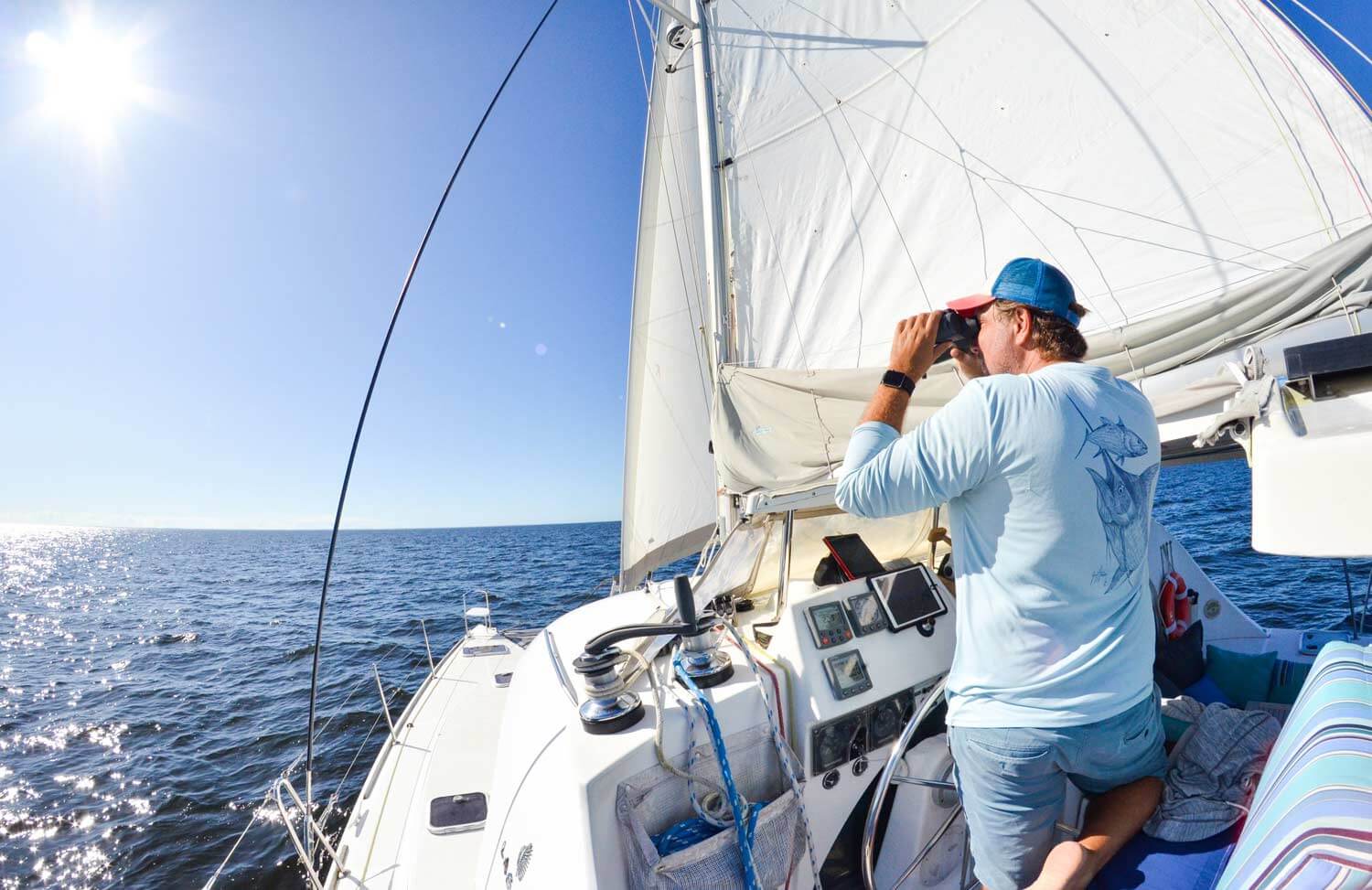
12 Things I Wish I Knew Before Moving Aboard
Before moving onboard, there were a lot of things I thought I knew about living on a boat full-time. Despite my research, I was only scratching the surface of what it’s like to live this lifestyle.
From the weather’s impacts to route planning and provisioning – traveling on the water is different.
After two years of living on a boat full-time, here are a few things I wish I had known before moving aboard.
1. There will always be things to fix.
You hear this all the time when talking to anyone about life on a boat. No matter what type of boat you have, it will need constant upkeep. When one thing gets fixed, three more will break.
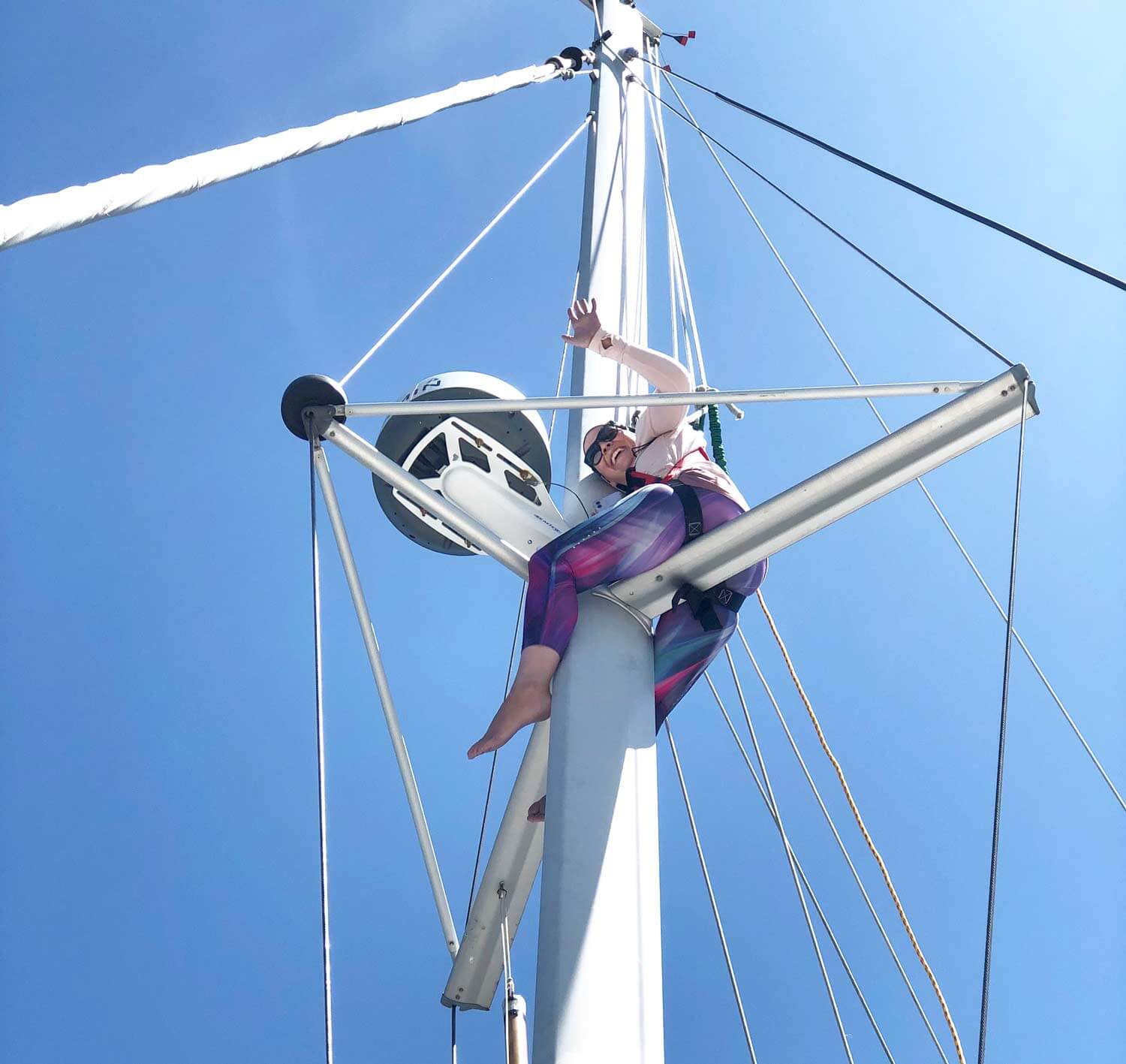
Like many first-time boat owners, we heard this over and over. Of course, it doesn’t hit home until you see the survey that details every last inch of issues. Or when you start living aboard a boat and experience first-hand the deterioration in a marine environment.
The good news is you can become a master of prioritizing your boat project to-do list.
- Consider essential things versus cosmetic projects.
- Look at safety versus nice-to-have updates.
- Weight the time it takes to fix something versus the maintenance costs of it hiring out to a contractor or boat yard.
You can learn to improvise and create workarounds when you need to, and most boat owners ultimately become handy out of necessity. Over time you’ll recognize the importance of having a safe, operational vessel.
Oh, and when you finally fix the broken igniter on the oven after two years, it will be that much more rewarding.
Some of the best advice you’ll receive is this – if you try and fix it all, you will never leave the boat dock.
So, find the strength to accept the five-page to-do list and get out there and enjoy your boat. That’s what all boat owners are out there trying to do!
READ NEXT: Check out our list of what you need in your sailboat tool kit .
2. living on a boat is like camping..
Even on a bigger boat with more than the average amenities – once you are out of the marina, living aboard is a lot like camping.
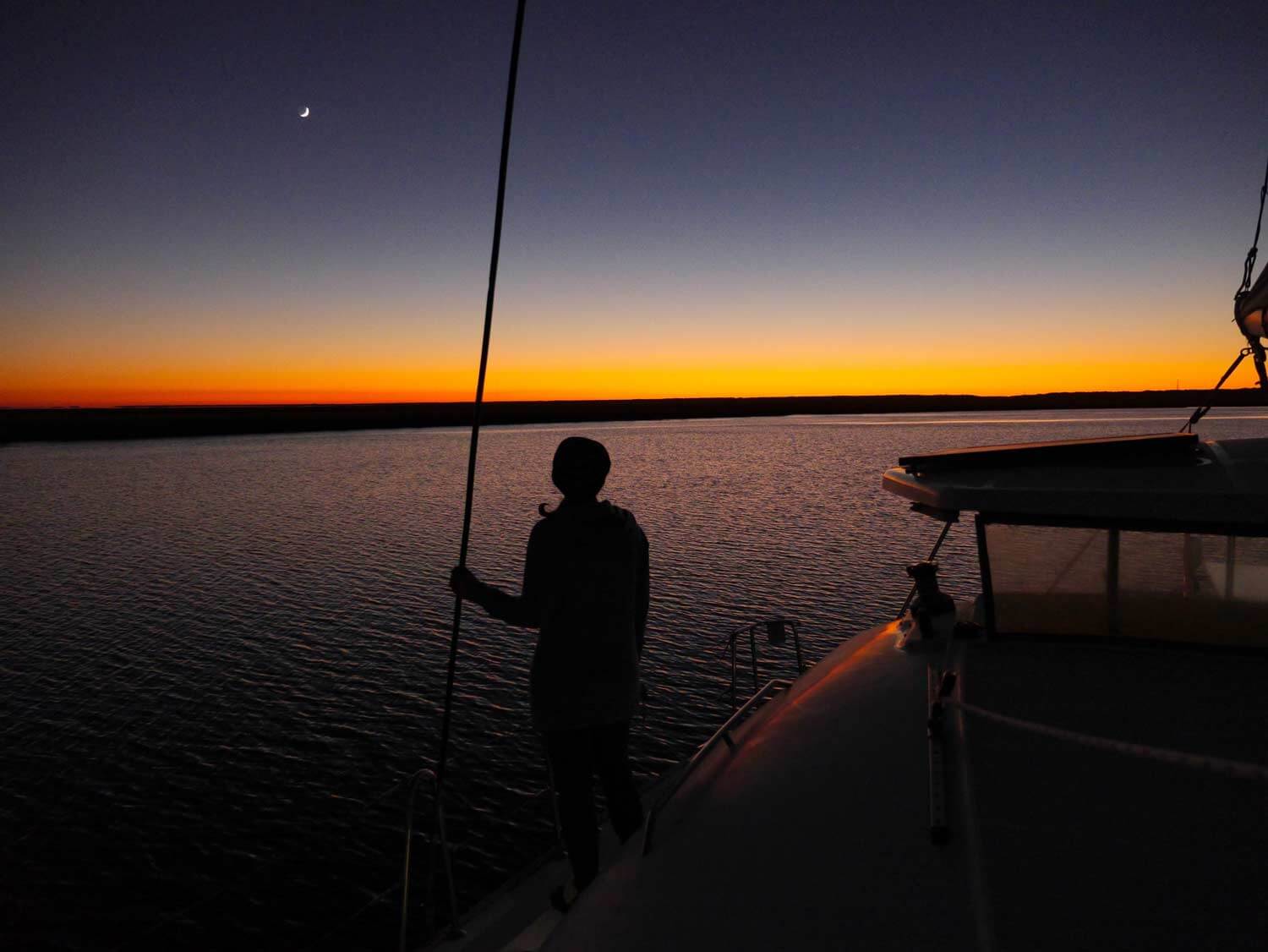
You are at the mercy of the weather when underway or on anchor. You have limited resources, no air conditioning, and access to grocery stores or other supplies is usually out of reach. On the flip side, you have the ability to visit remote islands and other exotic places and immerse yourself in the beauty around you.
In the woods and on the water, you think about things like navigation, water supply, and provisions.
Both activities give you a sense of independence and teach you about survival in nature. You can get by without the most modern conveniences and with a minimalist approach to living (although you will probably want some creature comforts).
Do you enjoy the logistics and planning, as well as the communing with nature that camping offers? You might also like the challenges and rewards of living on a boat.
3. You need to be diligent with cleaning.
Living in a marine environment requires a substantial commitment to cleaning.
Before living aboard, I remember thinking – cleaning will be a breeze in such a small living space.
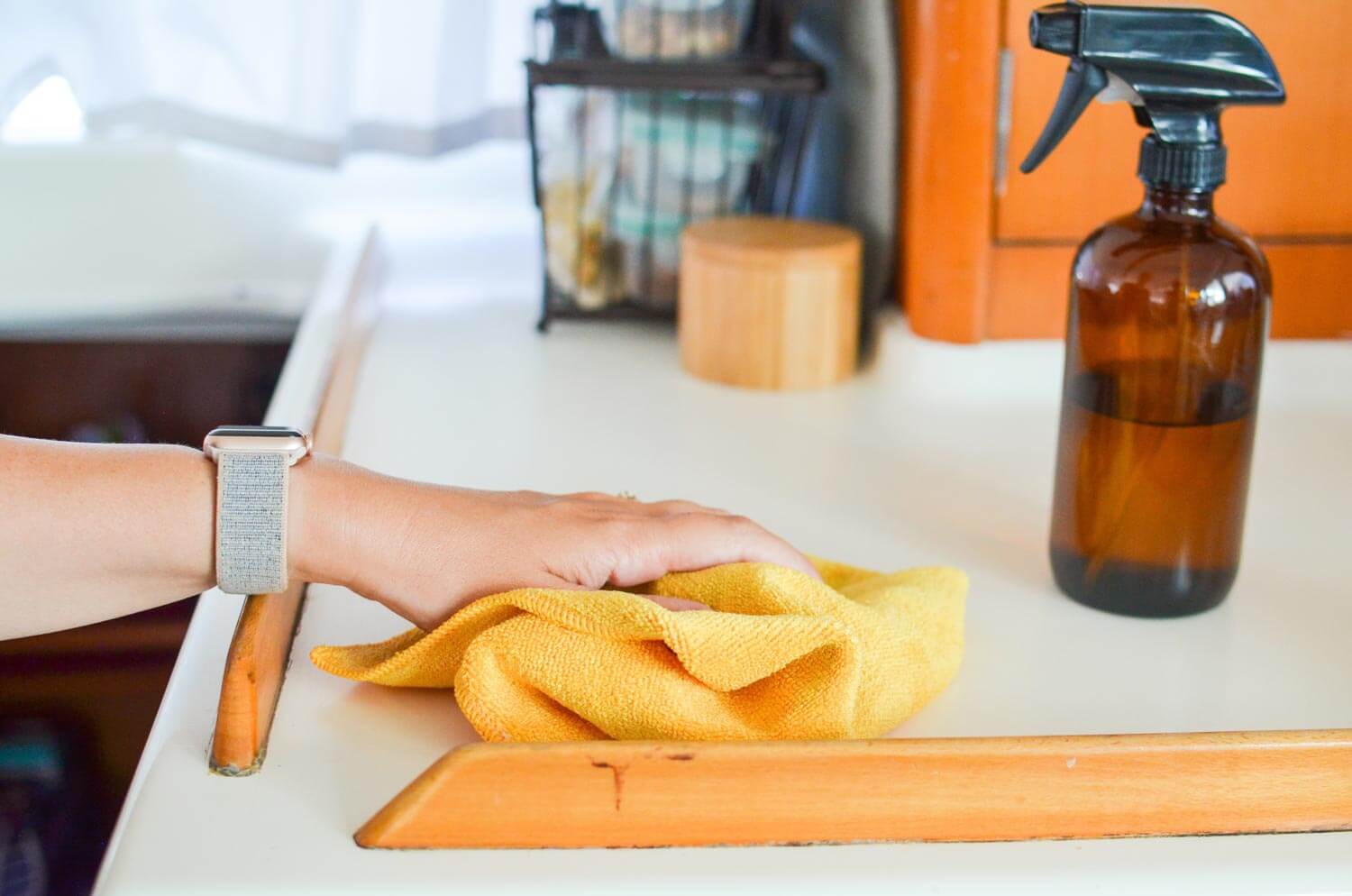
Well, not really. Yes, it’s smaller, so tidying is quicker. But putting things in their place can sometimes be a challenge. Storing items with the marine environment in mind requires extra steps. Sometimes getting into storage areas is also inconvenient.
The key to keeping your boat tidy is storing the most often used items in places that are accessible.
Where cleaning is concerned, the marine environment creates obstacles different from land living.
Mold grows fast – even faster when the temperature drops and condensation is an issue.
Dirt comes in from every hatch and door that’s open. If you’re on a catamaran, dirt enters through a dozen hatches and a large cockpit door that’s usually open.
There’s also a load of areas that need special attention to keep clean.
- the boat bottom
- ground tackle
- outside of the boat and the gel coat
- fresh water tanks and black tanks
- stainless steel
These areas are continuously affected by everything from corrosion to marine bottom growth. They need specific cleaning products and techniques to keep them in ship shape.
Besides your own research, ask around for helpful tips from fellow boaters. This will save you extra work and help you avoid surprises in the future.
4. It takes time to learn the boating world.
Learning to sail, maintain a boat, and live on a boat is not something you learn in a week or even a few months.
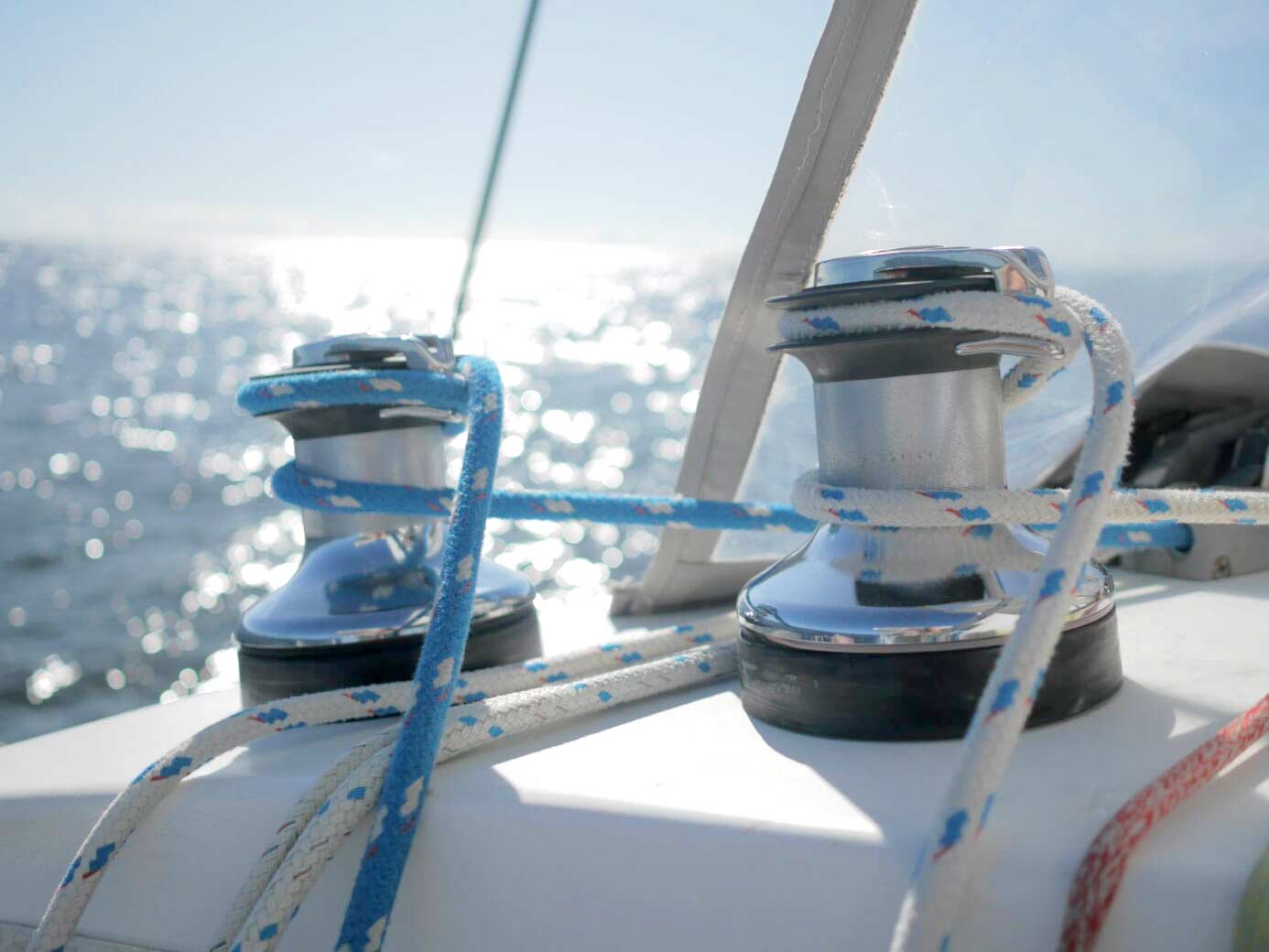
Some cruisers say it takes around three years to find your groove within the liveaboard lifestyle.
When you move aboard your first boat, you are pretty much learning a new way to live. Especially if you are jumping in with little previous boating experience.
All the boating things take time to master. Besides learning how to operate your boat, you have to learn how to live on it. Including but not limited to the below.
- navigating and route planning
- anchoring and docking
- radio communication
- regular maintenance (diesel engines, plumbing, electrical, etc.)
- resource management (water, power, fuel)
- provisioning
In each of these areas, there are things we are still working on. It takes time to develop skills. And in some cases, it takes a lot of experience in many different locations.
Learning these new skills is both challenging and exciting. It can also be a little scary. You are pushing yourself out of your comfort zone at every turn.
When you make a mistake, consider it one of many future valuable cruising lessons.
When you succeed, celebrate! Even the smallest victories are worthy of a sundowner toast when you live on the water.
5. You don’t need a big wardrobe onboard.
When I was planning to live aboard, a big project was downsizing my wardrobe. I prepared to cut my wardrobe down to about 20% while being meticulous in choosing what to bring on the boat.
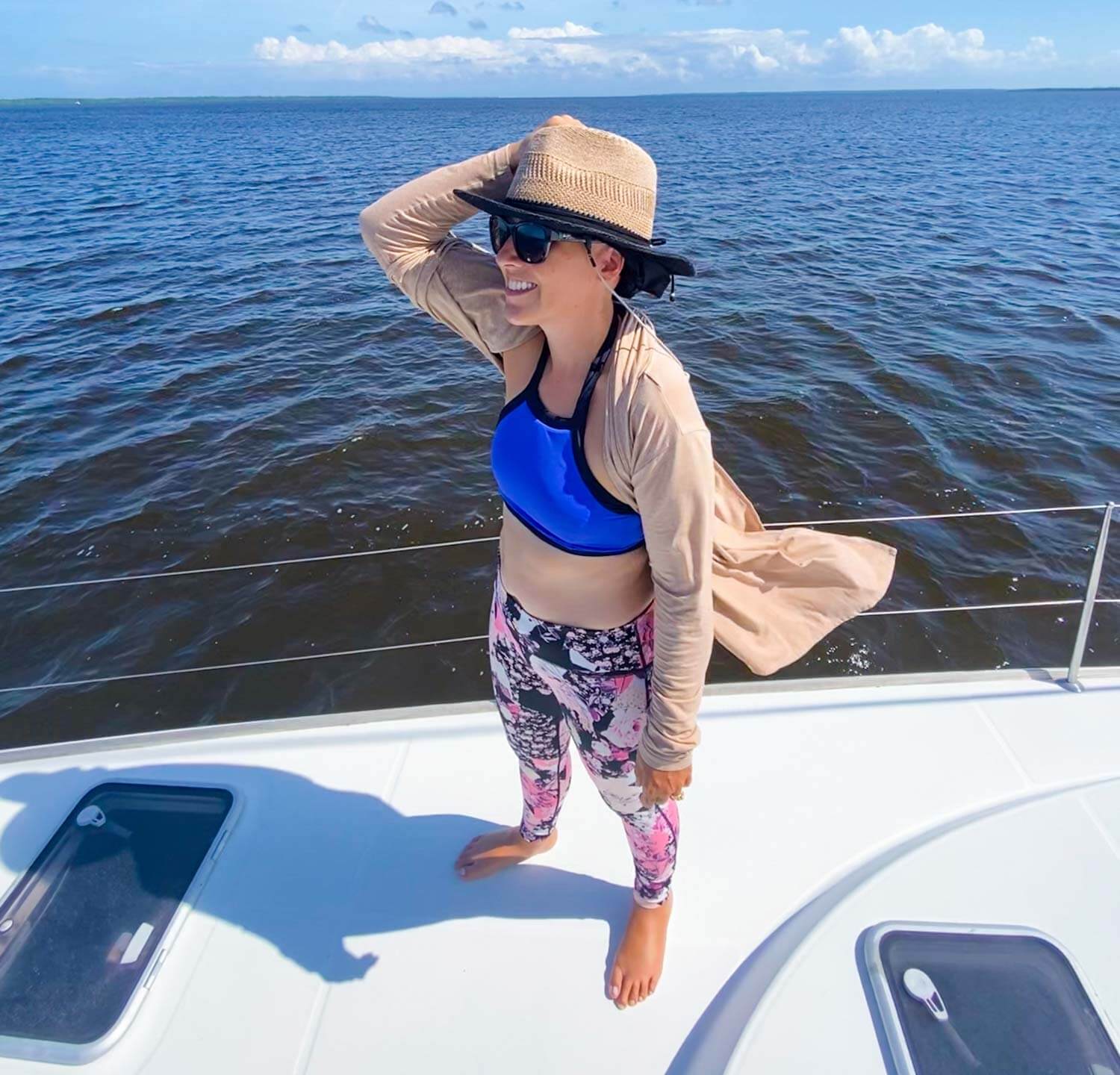
I got rid of tons of clothes and only brought a small fraction of my previous wardrobe aboard. But I didn’t need even half of it.
Seriously, you don’t need many clothes on a boat. You just need the right clothes.
Determine a few types of comfortable items appropriate for the climate you intend to live or cruise – then you’re set. Once you find your “boat uniform,” you’ll wear it every day.
Sure, you’ll want things for the occasional night out or shore excursion. But a couple of mix and match pieces will do. And very casual is usually sufficient for the average cruiser. I find I have way too many dressier items (which aren’t even that dressy.)
Here are a few clothing items that I kept that I shouldn’t have:
- casual clothing (shorts and tops) that are 100% cotton
- more than one dress or other formal clothing
- any leather
- more than one pair of jeans
- more than 4 or 5 swimsuits (find a few you love and ditch the rest)
- bulky sweatshirts
- more than 1 or 2 quality sun hats
With any good minimalist wardrobe, layering is essential. Identify items that are flexible enough to wear alone or under other things.
The capsule wardrobe concept is also a good idea on a boat. Research strategies behind these wardrobes and apply them to your closet on the water.
READ NEXT: Find more info in our guide for how to downsize your wardrobe and our post on what to wear sailing.
6. start living like you’re on a boat before life aboard..
As a liveaboard, certain habits will make life in your floating home easier.
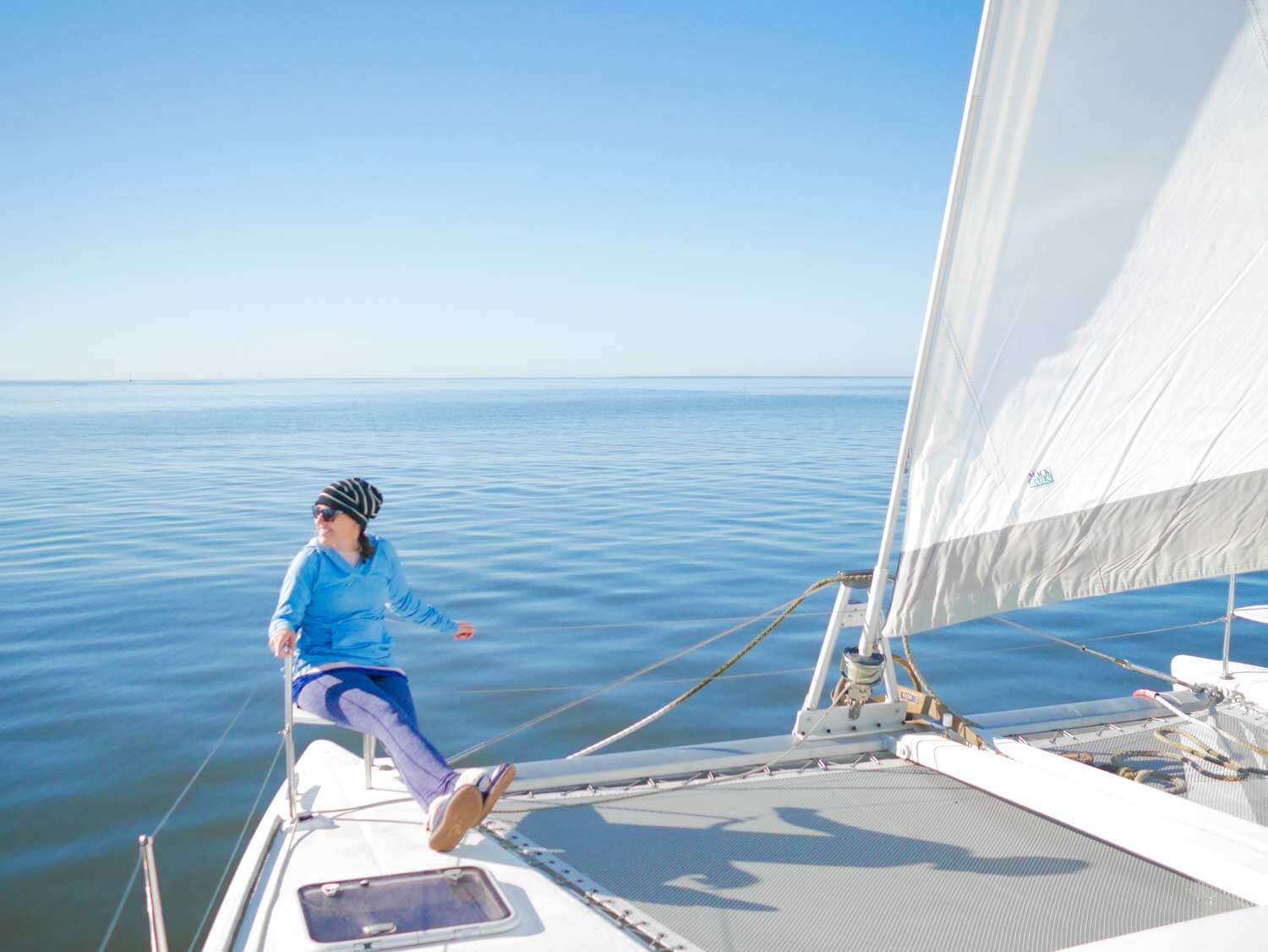
Developing routines to save water and practice sustainability are easier to tackle while you’re still enjoying land life.
Learning to cook things from scratch and testing new personal care regimes will save you time and stress.
Here are some things I wish I had started doing while still land-based.
- making pizza dough, bread, and bagels
- making yogurt
- making vegetable broth
- learning to fillet a fish
- provisioning (experimenting with dried and canned foods)
- adjusting personal care regimes (hair and make-up products, menstrual products, etc.)
- washing dishes with less water
- showering with less water
- minimizing laundry
- minimizing trash
Once you start cruising, you’ll have your hands’ full learning all the new boat things.
The more “boat life” habits you can instill before moving aboard, the more manageable your new lifestyle will be.
7. You’ll cook differently in the boat galley.
Before boat living, I would follow recipes to the exact ingredient. I wasn’t much for deviating from the formula. Then I moved on a boat where you rarely have precisely what the recipe calls for.

When you start cooking on a boat, you will begin to find replacements or substitutes out of necessity. Maybe you don’t have room for fresh bell pepper in the fridge, so you opt to keep roasted bell pepper in a jar. Or you learn that having dehydrated milk is more efficient for cooking.
The canned goods aisle will become an area you explore the most on your journey to master the boat galley.
I never purchased canned mushrooms in my land-living days. Now, I keep a stockpile. Also, canned potatoes, anyone?
The more you cook, the more experimental you’ll become. When you travel to new places, you can find items at the local farmers’ market and give them a try too.
You’ll also discover that certain types of food are more comfortable to cook on a boat. I never cooked much Asian food on land but started experimenting with stir fry, curries, and homemade ramen onboard. Carrots and onions keep well, and you can throw just about anything in a stir fry.
We enjoyed the process of learning what works for cooking onboard. It’s also fun to start mastering things from scratch, such as homemade bread, pizza dough, yogurt, and broth.
READ NEXT: You might also want to check out our list of 7 easy and versatile meals on a boat or our 5 ideas for a delicious breakfast on a boat .
8. you will want to throw your partner overboard..
When cruising with a partner, most of us have reached a point where you drive each other nuts.
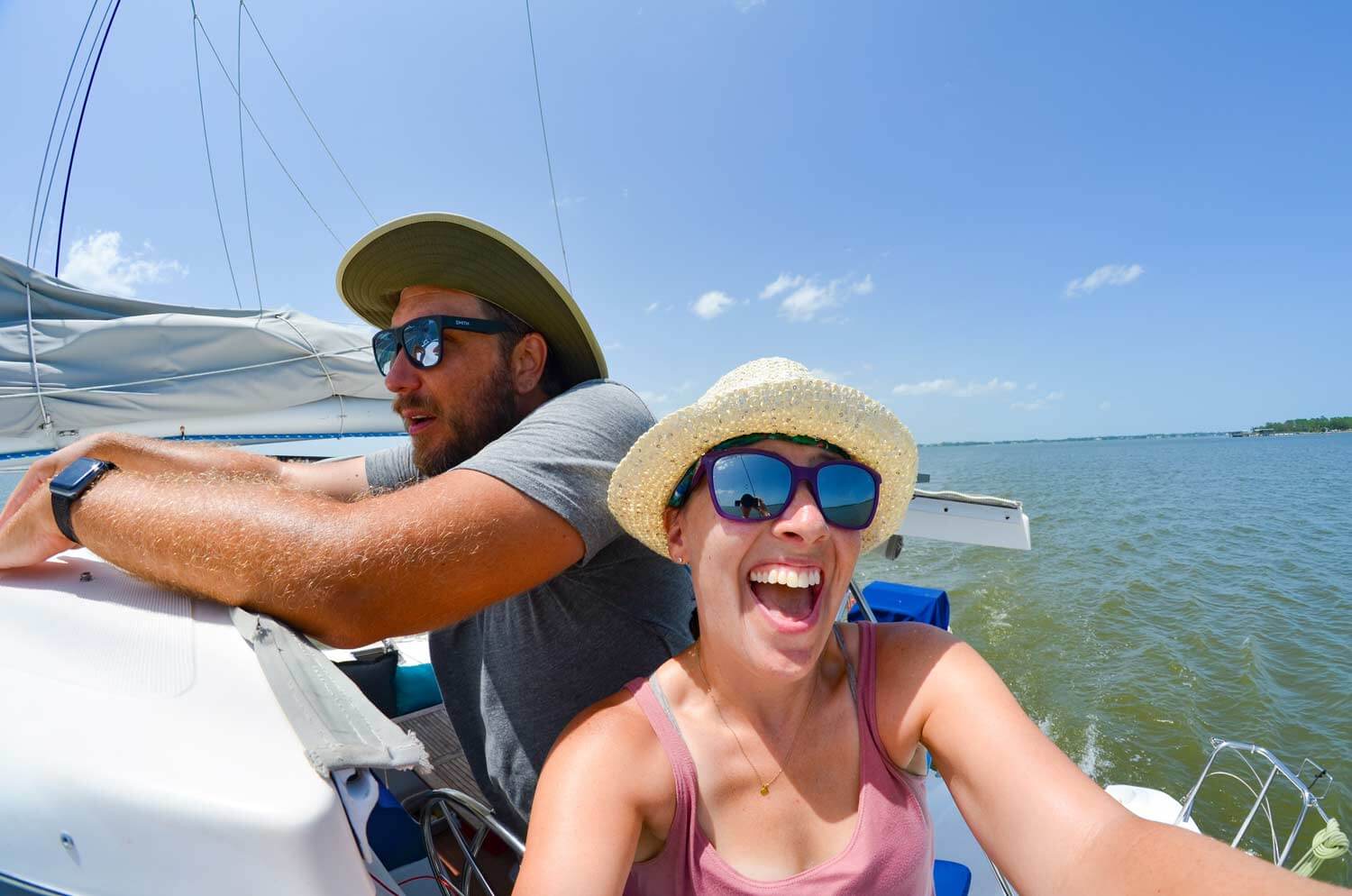
The truth is living on a boat can be very stressful at times. And all the stressors tend to rear their heads at once. Add that to the fact you’re in a tiny, challenging living space, and tempers get short.
When we start to get at each other’s throats, we try to acknowledge it early and adjust. Sometimes just saying we are on edge and talking it through will help. Other times we need a break off the boat to find our composure and regain our patience.
Having a schedule adds to the pressure. The more you can cruise at your comfortable pace, the more likely you will not murder your partner!
The living situation on a boat will test your relationship. Take the time to talk about the triggers and maybe buy a set of “marriage savers” for anchoring and docking.
9. You need to be flexible.
A well-known sailing adage is, plans are written in the sand at low tide.
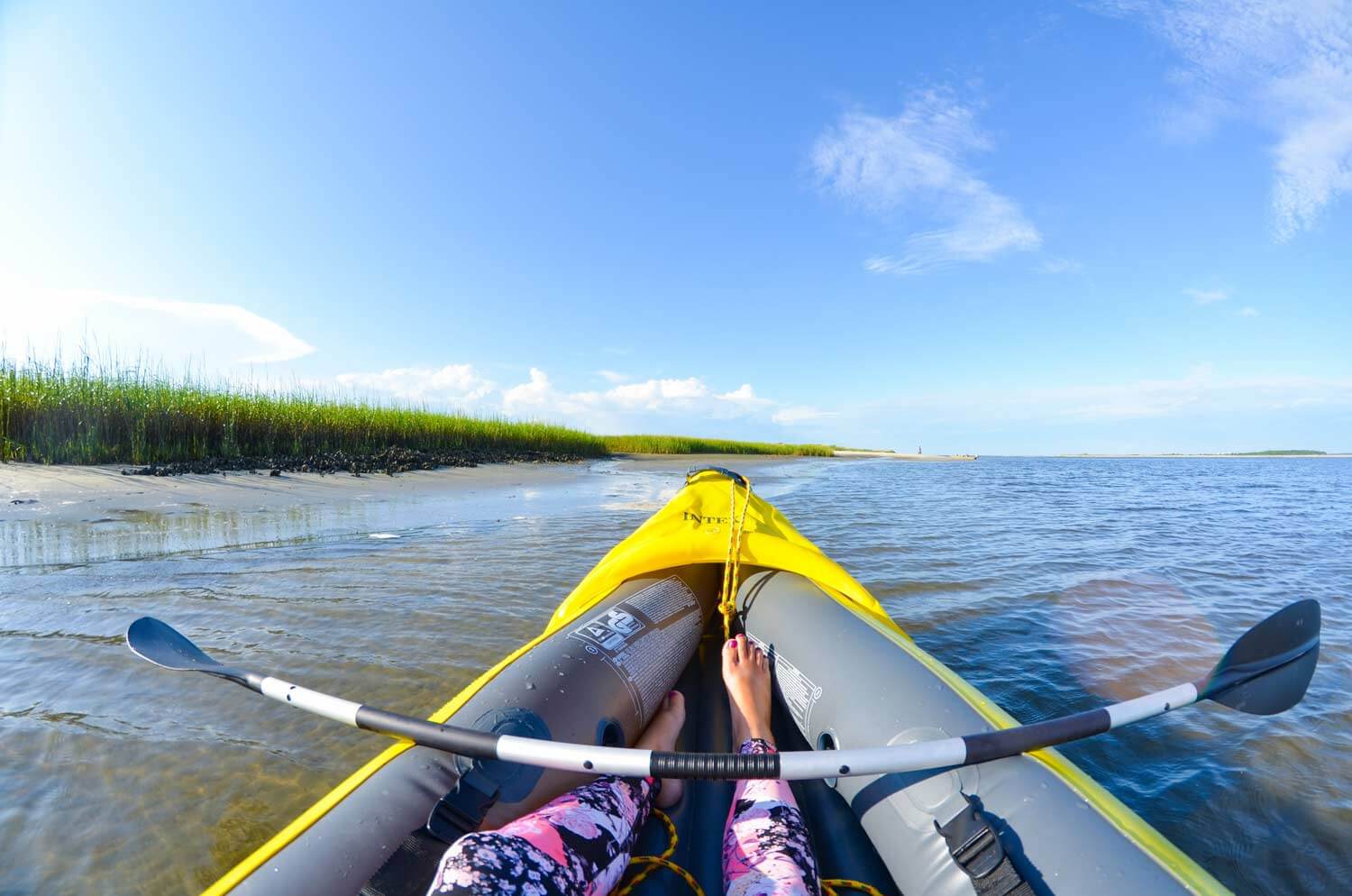
If you don’t do well with last-minute changes, you might not love this lifestyle.
Your plans will frequently change living on the water. Then they’ll change again and switch back. Sometimes we’ll change our route two or three times on the morning of departure.
Everything fluctuates based on weather, routing issues, boat issues, and plain bad luck. You may need to avoid a storm, pick up a spare part, or dock in a liveaboard marina for the season to take care of a health issue.
Traveling on the water, you’ll get more familiar with the idea of having a plan A, B, C, and sometimes even D.
Having many options is a way of planning while acknowledging you are in a fluid situation on a boat.
As you gain more experience, it will become more natural to accept changes. You might even find you’re immediately onto the next step when you hit an obstacle in your current plan.
A positive spin to this aspect of the lifestyle is you often end up in unexpected places. And sometimes, that’s not a bad thing. If you can roll with the punches, you’ll find appreciation in even the most unlikely plans.
10. Full-time cruising is a full-time job.
When you start cruising, friends and family might ask what you do all day. You’ll find this amusing. Because when you’re actively cruising, moving the boat regularly to new locations, THAT is what you are doing.
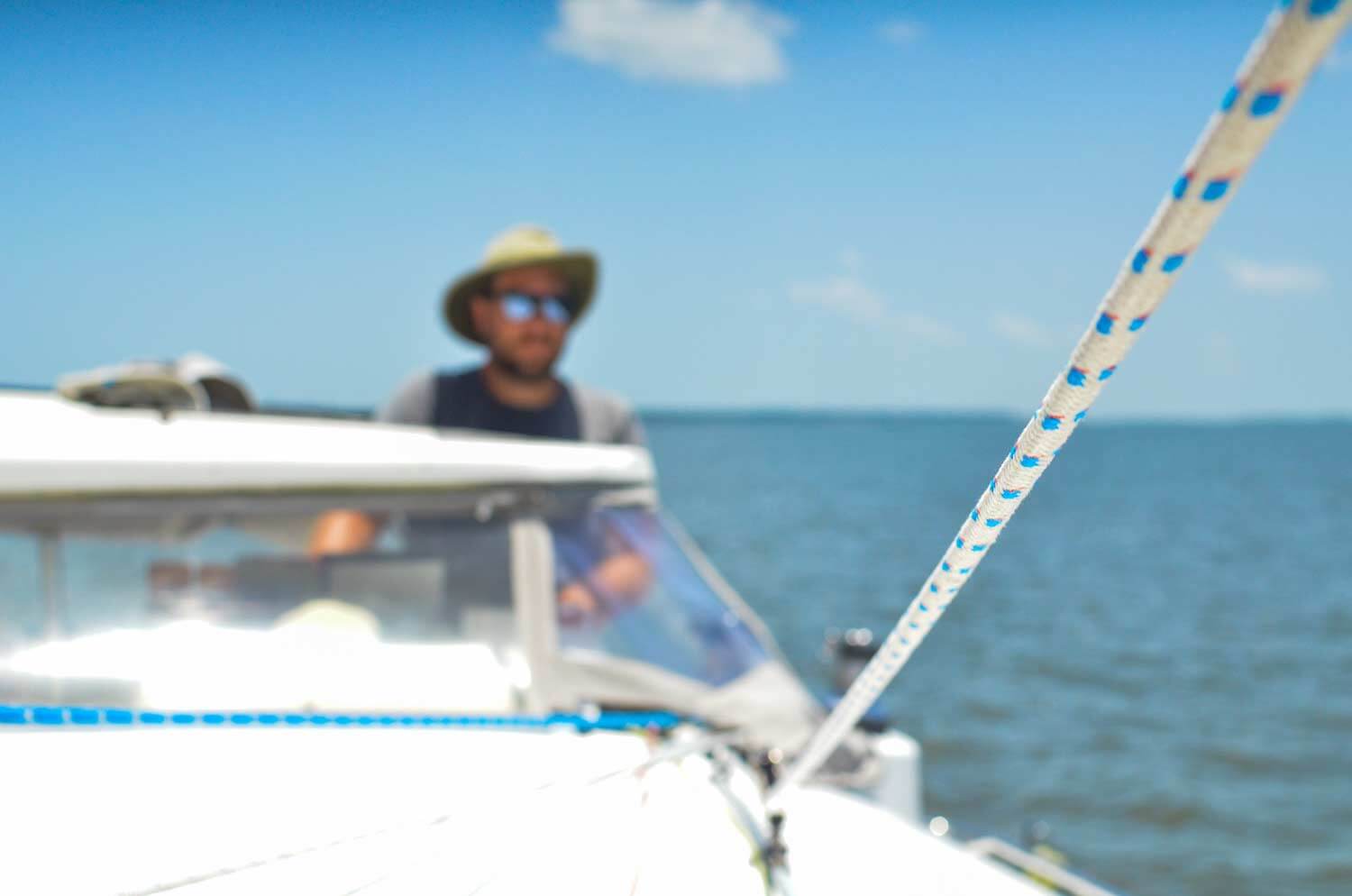
Cruising on a boat is a full-time job and hard work. It includes route planning, watching the weather, performing maintenance, provisioning, managing resources, and more. Not to mention taking your shift at the helm. You are never without things to do, especially if you are living primarily on the anchor or a mooring ball.
You’ll often find you have to tell yourself to put boat chores on hold and enjoy the benefits of the lifestyle.
Although cruising is a lot of work, the good news is you are the boss. So when you find yourself worn out or short-tempered, consider giving yourself a break.
Slow down, and throw the timeline out the window. The best thing about this lifestyle is about the journey as much as the destination.
11. The cost of living can be high.
Even on a small boat, cruising and boat expenses can get out of control quickly if you don’t stick to a budget.
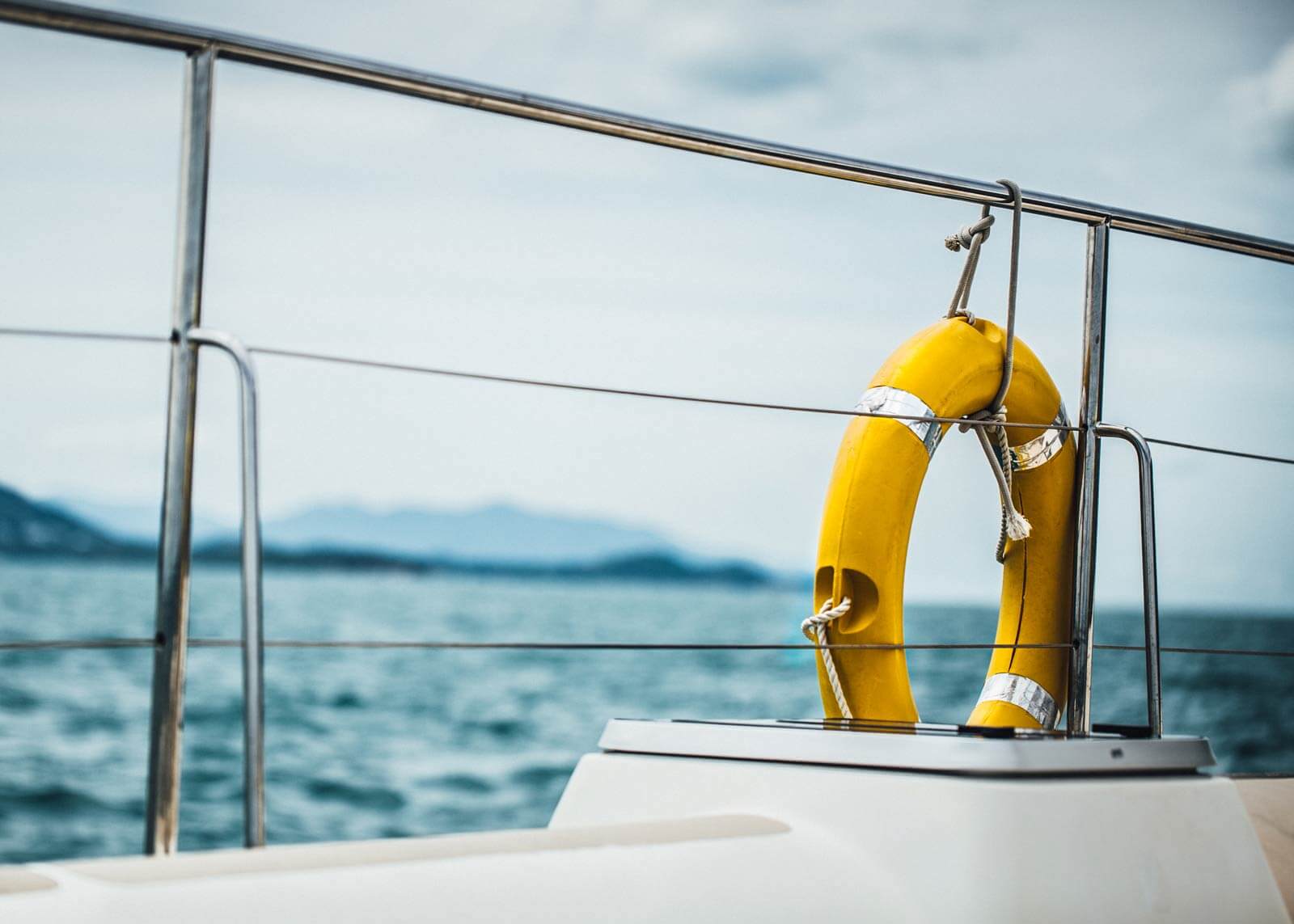
Boatyards and maintenance costs, liveaboard slip fees, boat insurance, and more will empty your bank account or boat cruising kitty. If you work from your boat, you may also need to spring for high-speed internet access so you can work from remote locations (Starlink has recently become more popular in the boating community).
Depending on where you’re cruising, food costs and other everyday items can also be very expensive.
If you’re thinking about living on a boat, do your research on the location you’ll be cruising in, whether it’s the east coast of the United States or the south pacific, and find the average costs of liveaboard marinas and boat insurance to cruise in that area.
Also, be aware that the insurance premium may cost more in certain areas, especially during the official hurricane or cyclone season (if the insurance policy even allows you to stay in the area).
READ NEXT: Read our full guide on the cost of living on a sailboat .
12. living aboard can be uncomfortable..
Whether you’re out in open water or anchored near a bay, bad weather will find you.
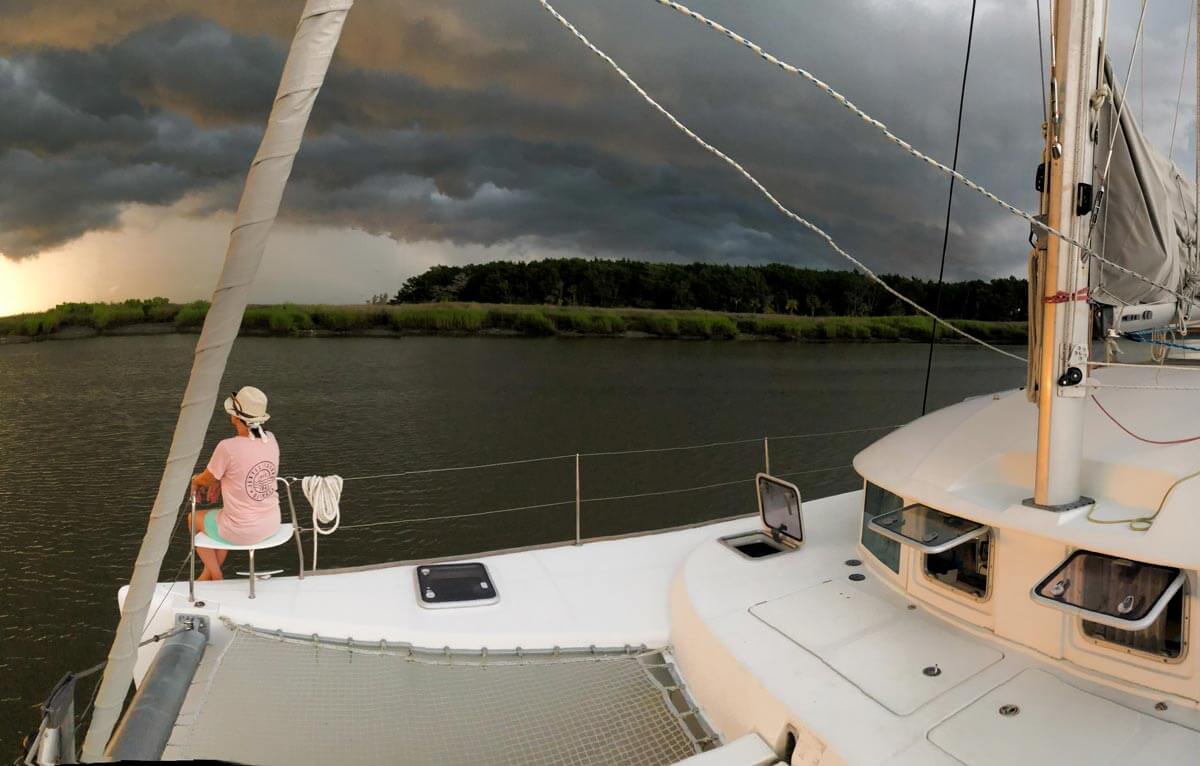
High winds can bring rough seas, and this can make being on a boat very uncomfortable, both physically and mentally. However, the more boating or sailing experience you gain, the more confident you’ll be in these situations.
The reality is you can only plan so well for weather on liveaboard boats, and a lot of the time, you just need to be prepared for what mother nature throws at you. Most boaters will err on the side of caution when it comes to route planning for incoming storms and choosing to lay out more than less anchor chain!
Living on a Boat Full-Time: Is it Worth it?
If you are transitioning from a modern way of life, living on a boat will shake up your lifestyle. It’s an adventure that is entirely different from living on land.
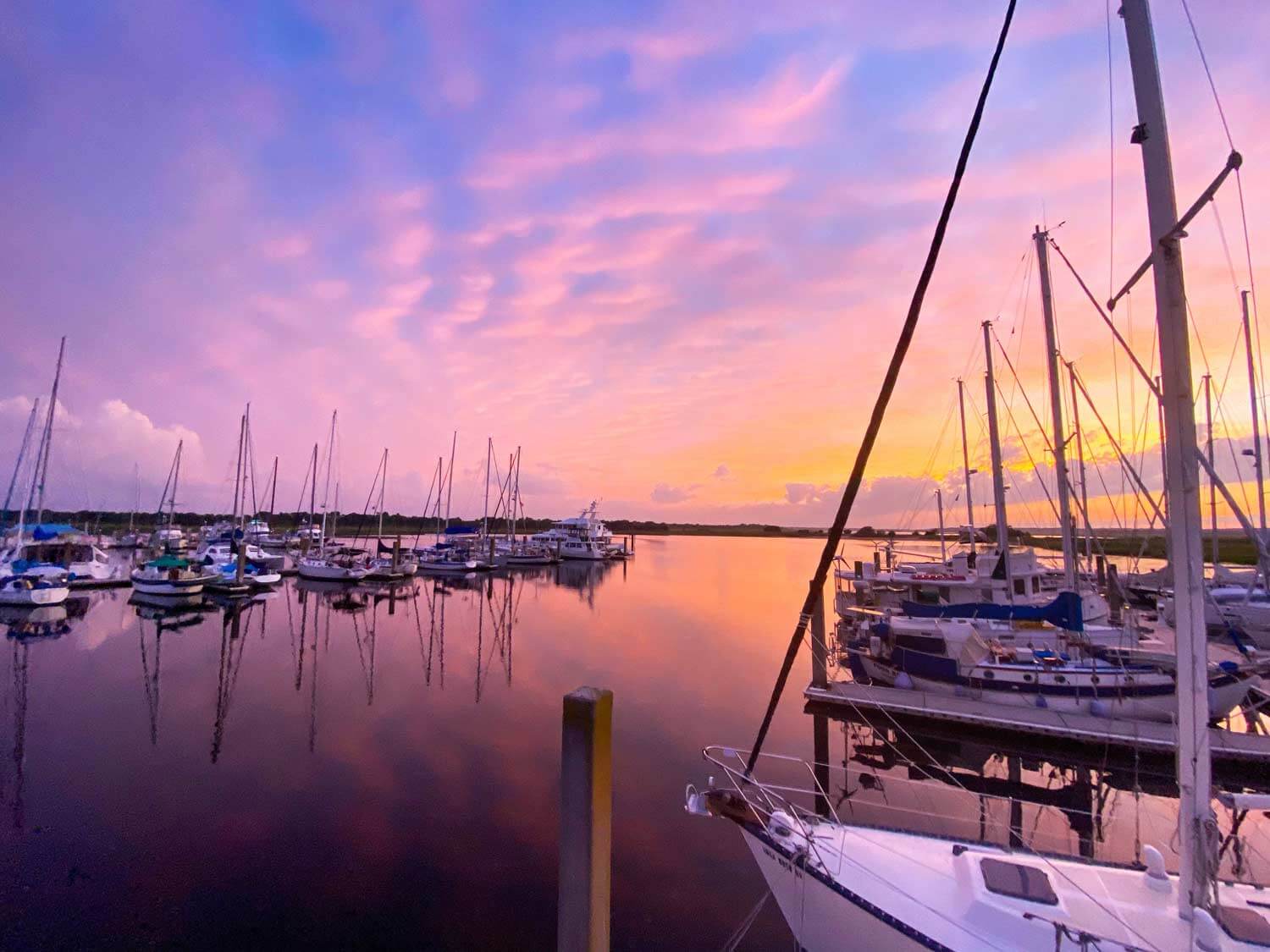
My vision of what it would be like living on a boat and actually living on a boat are a far cry from each other. But nothing is ever as you imagine it.
If you’re up for the challenges, living on the water can be a unique and fulfilling lifestyle. From the skills you acquire to the places you visit and the people you meet – there’s no doubt cruising on a boat is a once-in-a-lifetime experience.
Want to learn more about cruising full-time on a boat?
For more on finding the right boat, the cost of cruising, and learning how to live on the water, view our complete guide.
Like this post? Save it on Pinterest for later.
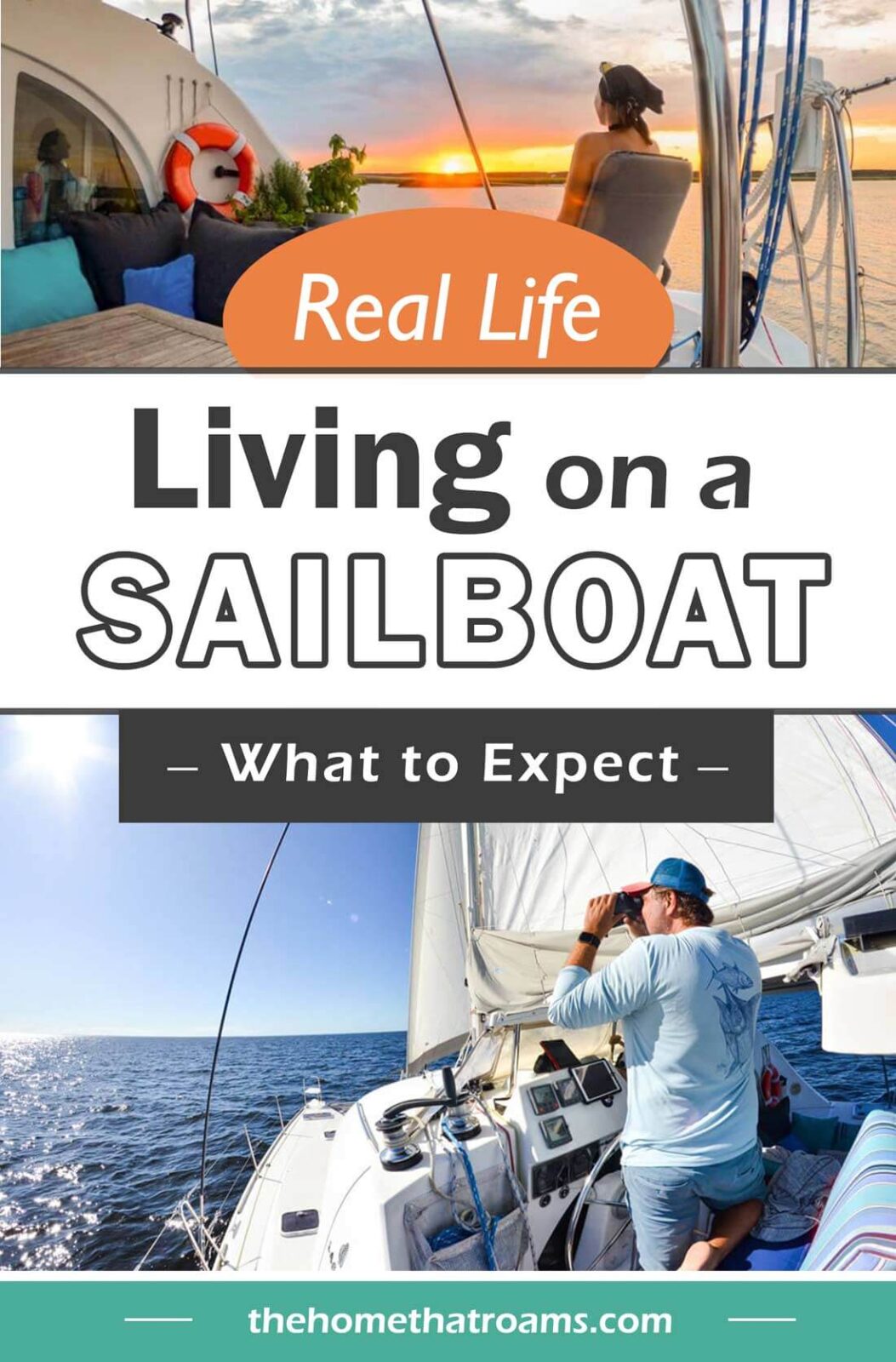
Or view our web stories.
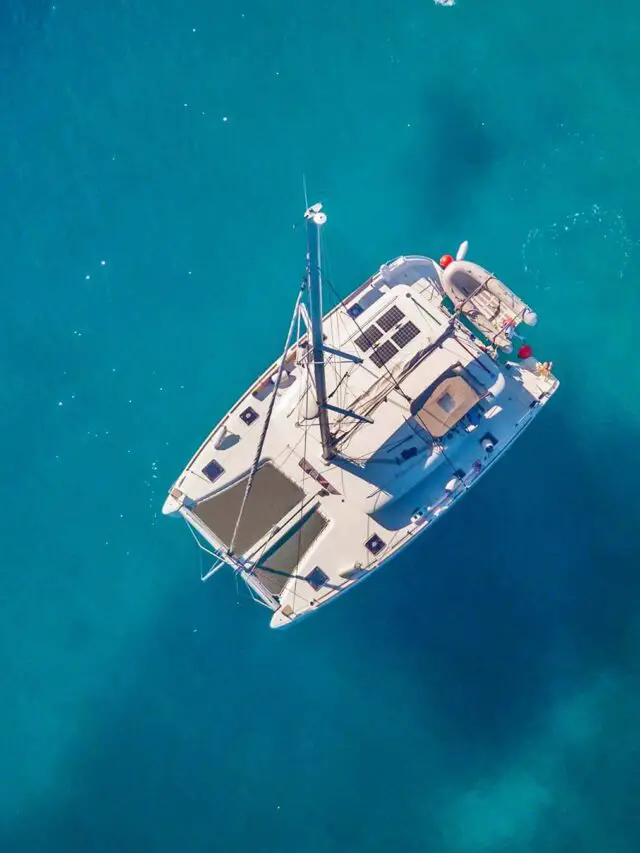
Morgan, the founder of The Home That Roams, has been living nomadically for over five years. She began her journey traveling across the U.S. in a motorhome and cruising on a liveaboard sailing catamaran. Currently, she lives full-time in a travel trailer, sharing resources on RV living and boat life to help others downsize their lives and thrive in an alternative lifestyle.
Leave a Reply Cancel reply
Your email address will not be published. Required fields are marked *
Sign Me Up!
Learn how to live on a boat.
Get weekly tips on how to start traveling full-time on a boat.
View our privacy policy .
Privacy Overview
| Cookie | Duration | Description |
|---|---|---|
| cookielawinfo-checkbox-analytics | 11 months | This cookie is set by GDPR Cookie Consent plugin. The cookie is used to store the user consent for the cookies in the category "Analytics". |
| cookielawinfo-checkbox-functional | 11 months | The cookie is set by GDPR cookie consent to record the user consent for the cookies in the category "Functional". |
| cookielawinfo-checkbox-necessary | 11 months | This cookie is set by GDPR Cookie Consent plugin. The cookies is used to store the user consent for the cookies in the category "Necessary". |
| cookielawinfo-checkbox-others | 11 months | This cookie is set by GDPR Cookie Consent plugin. The cookie is used to store the user consent for the cookies in the category "Other. |
| cookielawinfo-checkbox-performance | 11 months | This cookie is set by GDPR Cookie Consent plugin. The cookie is used to store the user consent for the cookies in the category "Performance". |
| viewed_cookie_policy | 11 months | The cookie is set by the GDPR Cookie Consent plugin and is used to store whether or not user has consented to the use of cookies. It does not store any personal data. |


Living on a Yacht: Weighing the Pros and Cons of a Luxury Lifestyle
Explore the dream – and the realities – of Living on a Yacht, offering insights into the freedom and challenges it entails. From financial considerations and space optimization to the impacts of weather and community aspects, it provides a balanced view to help readers make an informed decision about this unique lifestyle.
Imagine the gentle sway of waves, the endless horizon of the sea, and the allure of waking up to a different view every morning. This isn’t a holiday brochure; it’s the possibility of your new life on a yacht. It’s a dream for many, but what does it truly entail? In this exploration, we delve into the reality of yacht living. It’s not all sunsets and sea breezes. Like any home, a yacht has its charms and challenges.
For those in their prime years, considering a shift from a traditional home to a yacht is more than just a change of address. It’s a lifestyle overhaul. We’re not just talking about a snug living space or the need to be a Jack-of-all-trades at sea. It’s about embracing a unique blend of freedom and responsibility.

Our journey through this blog post is not just about painting a rosy picture. It’s about providing a realistic lens through which you can view this significant life decision. We’ll explore how this choice fits into your life puzzle, whether you’re an adventurous soul seeking the thrill of the open seas or a contemplative mind looking for serenity away from the land’s hustle.
As you read through, remember, every big decision comes with its highs and lows–like the tides. Yacht living is no exception. So, let’s set sail on this exploratory voyage to uncover what lies beneath the surface of living on a yacht.
The Allure of Yacht Living
The concept of yacht living taps into a deep-seated desire for freedom, an intimate connection with nature, and a sense of belonging within a unique community. Living on a boat isn’t just about the physical space you inhabit; it’s about the lifestyle and experiences that come with it. From the flexibility to cruise to new locations on a whim to the close-knit marina communities, yacht life offers a distinct way of living that is both challenging and rewarding.The
The Freedom and Flexibility of Location of Luxury Yacht Living
One of the most enticing aspects of living aboard a yacht is the sheer freedom it offers. Imagine having the ability to change your scenery whenever you wish. Whether it’s anchoring in a secluded bay or docking at a vibrant marina, your home is as mobile as you desire. This flexibility allows for a life unbound by the traditional constraints of geographical location.
Sailing from one destination to another, you’re not just moving your home; you’re embracing a lifestyle that allows for spontaneous adventures and experiences. The freedom to explore coastal towns, hidden coves, and open seas is unparalleled. This nomadic way of life provides a sense of liberation and adventure that is hard to find in traditional living arrangements.
Proximity to Nature and Unique Living Experiences
Living on a yacht brings you closer to nature in a way that few other lifestyles can. The rhythm of the waves, the panoramic ocean views, and the ability to witness marine life up close become a part of your daily life. This connection to the natural world is not just visually stunning but also offers a sense of peace and tranquility.
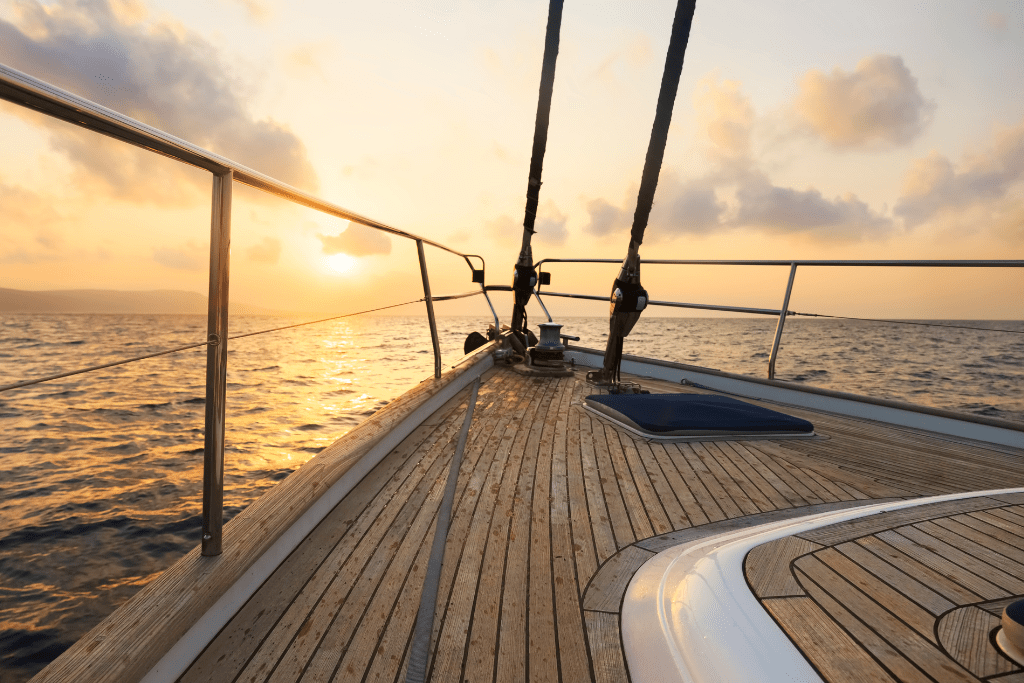
The unique living experiences that come with yacht life are endless. From waking up to the gentle lapping of waves against the hull to enjoying sunsets over the water every evening, these experiences enrich life aboard. Each day presents an opportunity to create unforgettable memories, whether it’s swimming in crystal-clear waters, fishing for your dinner, or simply enjoying the serenity of the sea.
Overview of the Sense of Community in Marinas and Sailing Circles
One might think that living on a boat could be isolating, but the reality is quite the opposite. Yacht marinas and sailing communities are often vibrant and welcoming. When you dock or anchor your yacht, you’re not just stopping at a place; you’re becoming part of a community. These communities are characterized by shared experiences, mutual assistance, and a common passion for the sea.
Life in a marina is rich with social interactions. Fellow liveaboards and sailors form a tight-knit community, often gathering for shared meals, group excursions, or simply exchanging stories and advice. This camaraderie is a significant part of the allure of yacht living. The sense of belonging is palpable, as everyone shares a common understanding of the joys and challenges of life at sea.
The community extends beyond the physical confines of the marina. Sailing circles worldwide are connected by a shared love for cruising and exploration. Whether it’s through organized regattas, informal meet-ups, or online forums, these connections foster a sense of global community. Sailors often form lasting friendships, bound by their shared experiences and adventures at sea.

Marinas often host events and activities that further strengthen these bonds. From educational workshops to social gatherings, there is a sense of collective growth and enjoyment. Living at a marina or being part of a sailing community isn’t just about having a place to dock your boat; it’s about being part of a supportive and engaging network that enriches your life aboard.
If you’re considering taking this step into yacht life, you may want to consider a test run. Charter a private yacht and try this lifestyle out for yourself. You may even decide you prefer renting over buying. Rent one model today, and then — when your mood or plans change — change the yacht for rent. You don’t have to commit right away, this isn’t a marriage, it’s a yacht.
Space and Design: Adapting to Yacht Interiors
Transitioning to live on a boat full-time introduces a unique set of challenges and opportunities, particularly when it comes to space and design. Yacht interiors, whether in a luxury yacht or a modest sailboat, require thoughtful planning and clever solutions to make the most of the available space. This section delves into the art of maximizing space, the crucial role of organization, and the myriad ways you can personalize your floating home.
Maximizing Limited Space: Innovative Design Solutions
The key to successful boat life lies in efficiently utilizing the limited space. Every square inch on a boat counts, and making the most of this space is vital for comfortable living. Design solutions often involve multi-functional furniture, such as beds with storage underneath, foldable tables, or convertible seating areas. These innovations allow for a practical living environment without sacrificing comfort or style.
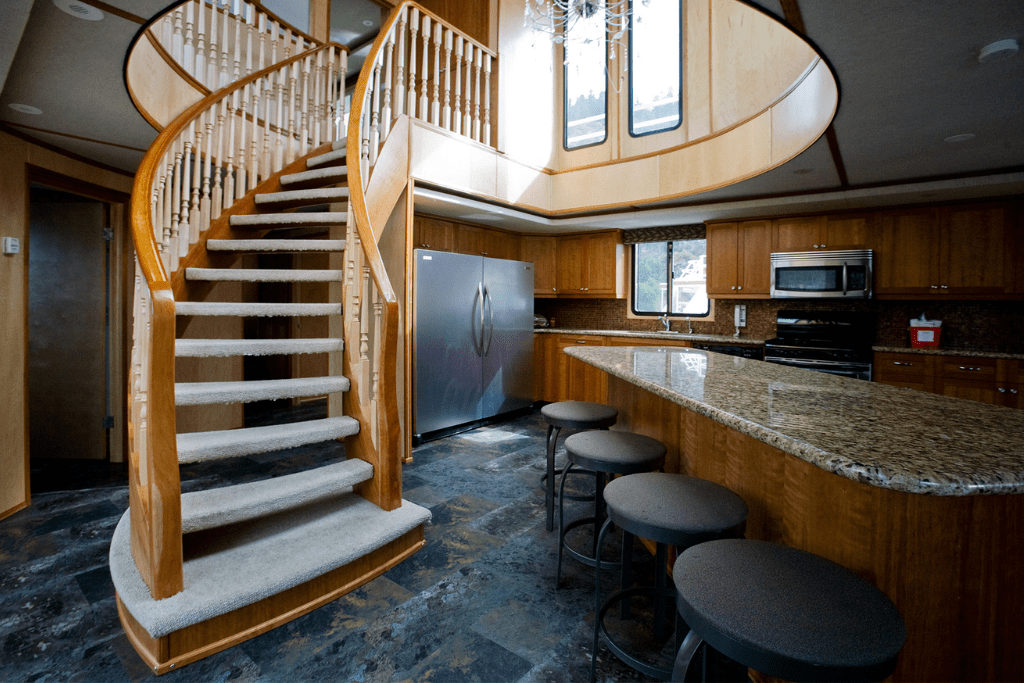
Another aspect is the strategic use of vertical space. Wall-mounted shelves, hanging organizers, and overhead storage can free up valuable floor space. In a sailboat, for example, the interior can be designed with built-in storage in unexpected places like under the stairs or in the hull. This approach ensures that every part of the boat is utilized effectively.
The type of boat also plays a role in how space can be maximized. For instance, catamarans typically offer more living space compared to monohulls, making them a popular choice for those looking to move aboard full-time. Regardless of the boat type, the goal is to create a space that is both functional and comfortable.
The Importance of Efficient Organization When Yachting
Living on a boat full-time demands a high level of organization. The limited space means there’s little room for clutter, making it essential to keep everything in its place. Efficient organization not only makes life on board more comfortable but also ensures safety when the boat is in motion.
Organizational strategies include using containers and baskets to keep items secure, labeling storage areas for easy access, and regularly decluttering to avoid accumulating unnecessary items. This discipline in organization extends to all aspects of boat life, from the kitchen and living areas to personal belongings and maintenance tools.
Boat insurance policies often require certain safety standards to be maintained,
and a well-organized boat is more likely to meet these requirements. Keeping equipment properly stored and accessible can be critical in emergencies. Additionally, an organized interior can help in reducing the overall cost of living on a boat, as it prevents damage and loss of items, which could be costly to replace.
Customization Options for Personalizing Your Space
Turning a yacht into a home involves more than just functional adjustments; it’s about infusing your personality into the space. Customization allows boat dwellers to create an environment that reflects their style and preferences, adding to the enjoyment of luxury yacht living.
Personalizing a yacht interior can range from choosing color schemes and fabrics to selecting artwork and – perhaps – some nautical-themed decorative items . Many boat owners opt for a full tour of customization, tailoring each aspect of the yacht to their liking. This could include custom-built furniture, unique lighting fixtures, or bespoke floorings, such as teak or bamboo.
For those living on a sailboat, customization might mean optimizing the layout for sailing efficiency while also creating a cozy, livable space. This could involve installing custom cabinetry that fits the boat’s contours or adding personal touches like cushions and throws that make the space feel like home.
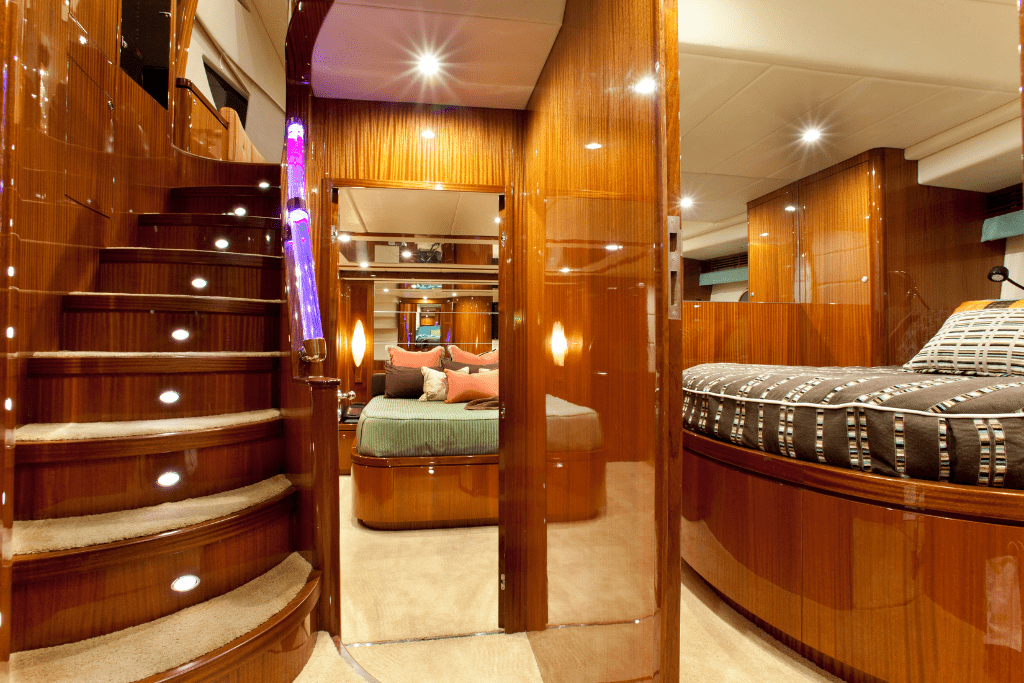
Customization also extends to technological upgrades. Modern yachts can be equipped with advanced navigation systems, entertainment setups, and climate control, enhancing the overall experience of boat life. These modifications not only add comfort but also can increase the boat’s value.
In essence, adapting to yacht interiors is a blend of practicality, organization, and personalization. Whether you’re planning to move aboard a sailboat or a luxury yacht, these elements work in harmony to create a living space that is not just functional but truly feels like home.
Climate Considerations When You Live on a Boat Full-Time
The climatic conditions of the chosen residence place or travel route are not the most obvious factor which must be noted. Being in a city apartment or a private house, we don’t think much about the weather outside the window. If a strong wind blows outside, heavy rain falls or the temperature suddenly drops, we will feel almost nothing.
On a yacht, the weather does not just play an important role, your safety and comfort directly depend on it. Each boat is individual and suitable for certain climatic conditions. It is worth analyzing all the characteristics of the boat in advance and honestly evaluating its capabilities in order to accurately determine whether it is possible to live on a yacht all year round in your chosen water area.
Financial Considerations: The Cost of Yacht Life
Embarking on the journey of yacht life involves more than just adapting to a new way of living; it also requires a clear understanding of the financial implications. While it’s easy to romanticize the idea of sailing around the world or living full-time on a boat, the reality comes with its own set of financial responsibilities. From the initial purchase of the boat to ongoing expenses and the comparison to traditional homeownership, understanding these costs is crucial for anyone considering this lifestyle.
Initial Investment: Purchasing and Outfitting a Yacht
The first step in yacht life is acquiring the right boat. This involves not only finding the best boat that suits your needs but also managing the financial investment it requires. The cost of a new boat can vary widely, depending on factors such as size, brand, and features, some of which we covered above. Choosing to live on a larger boat or a luxury cruiser naturally involves a higher initial investment.
In addition to the purchase price, outfitting a yacht for full-time living is a significant consideration. This may include upgrading boat systems, adding navigation equipment, and customizing the interior to make it livable. Even if you opt for an old, more affordable boat, it could require substantial investment in renovations and upgrades.
Furthermore, acquiring the necessary knowledge and skills for yacht maintenance and sailing is part of the initial investment. This might entail sailing courses, safety training, and learning about the nautical aspects of yacht care.
Ongoing Expenses: Maintenance, Docking Fees, Insurance
Once you own a yacht, the financial commitments continue. Boat maintenance is an ongoing requirement and a crucial part of life aboard. The yacht owners will need knowledge and skills to keep the yacht in good condition. Regular upkeep ensures the safety and longevity of your boat. This includes everything from engine maintenance to hull cleaning and can vary greatly in cost, depending on the age and condition of your boat.
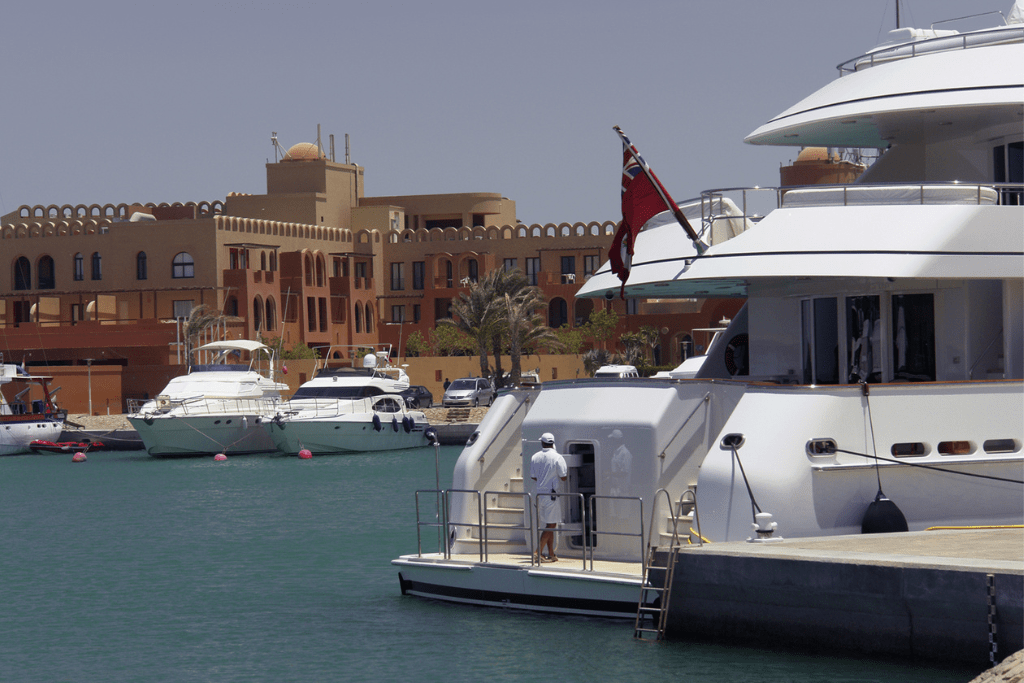
Docking fees are another significant expense, especially if you choose to stay at marinas. The cost can vary based on location and the services offered. Additionally, a dinghy might be necessary for transportation to and from the shore, adding to the expenses.
Insurance is an essential consideration for any boater. Boat insurance policies can be complex and vary greatly in coverage and cost. It’s crucial to have a comprehensive policy that covers potential damages and liabilities, especially when living on a boat full-time.
Comparing the Cost of Living to Traditional Homeownership
When contemplating yacht life, it’s common to wonder if you’ll save money compared to traditional homeownership. The answer depends on various factors, including the type and size of the boat, the chosen lifestyle, and where you plan to dock or anchor.
Annual costs for yacht living can include maintenance, insurance, docking fees, and fuel, which can be comparable to or even exceed the costs of owning a home. However, some expenses, like property taxes and certain utilities, may be lower or non-existent.

It’s also important to consider the value of the experience and lifestyle when comparing costs. Yacht life offers a unique set of experiences and freedoms that traditional homeownership cannot provide. While the financial aspect is crucial, the decision to live on a yacht often goes beyond mere economics.
Living on a boat full-time can also mean a shift in priorities and lifestyle choices. For some, this means downsizing and simplifying life, which can lead to reduced overall living expenses. However, for others, particularly those choosing a luxury yacht or a larger boat, the costs can be comparable to or even exceed those of a high-end terrestrial home.
Challenges and Downsides of Full-Time Living on a Boat
Living on a yacht presents a unique set of challenges and downsides that are important to consider before making the leap into this lifestyle. While the idea of living on a boat may evoke images of endless sunsets and tranquil waters, the reality can be quite different. Factors such as weather dependency, limited access to facilities, and the psychological impacts of isolation and confined spaces play a significant role in day-to-day life on a yacht.
Weather Dependency and Its Impact
One of the most significant challenges of living on a yacht is the constant need to be mindful of the weather. Your entire life becomes closely tied to weather conditions, which can change rapidly and without warning.
- Safety Concerns : Severe weather can pose serious safety risks. Being caught in a storm while at sea can be dangerous, and even when docked, high winds and waves can cause damage to your yacht.
- Lifestyle Adjustments : Daily activities and travel plans often have to be adjusted according to the weather. This can mean being stuck in a location longer than planned or missing out on certain experiences.
- Constant Vigilance : Living on a yacht requires a high level of awareness and knowledge of weather patterns. This can be mentally taxing, as one always needs to be prepared for the possibility of changing plans or taking emergency precautions.
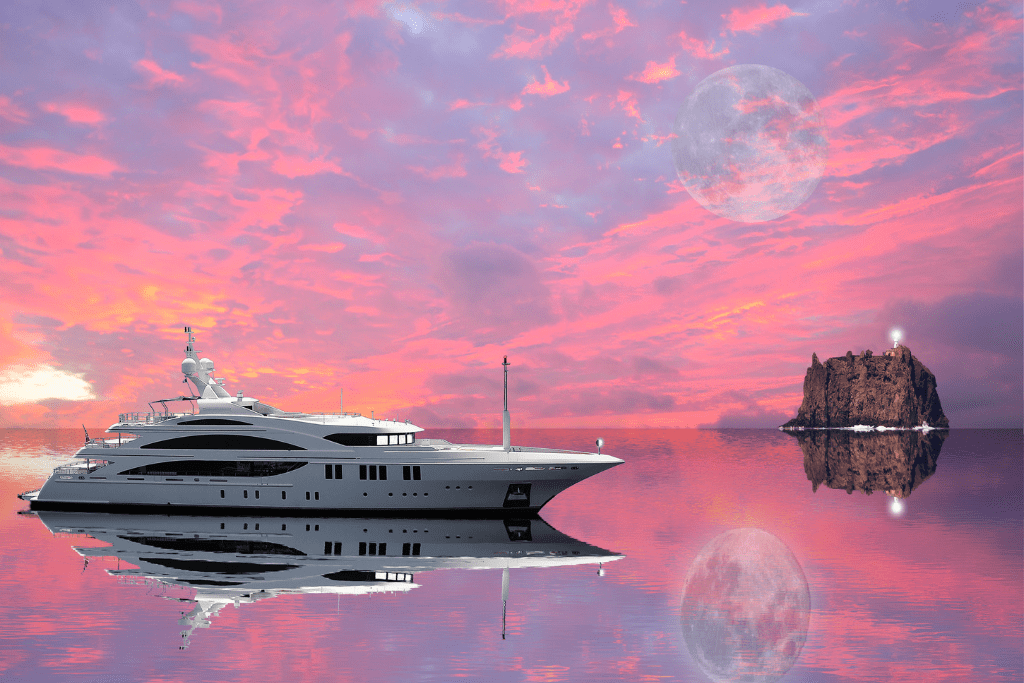
Remember the old saying, “Red sky at night, sailors delight. Red sky in the morning, sailors take warning!”

Limited Access to Certain Facilities and Services When You Live on a Yacht
Another downside of yacht life is the limited access to facilities and services that are often taken for granted on land.
- Healthcare and Emergency Services : In remote areas, access to healthcare and emergency services can be limited or delayed. This can be a concern for those with medical conditions or in case of accidents.
- Utility Services : Services like high-speed internet, electricity, and plumbing work differently on a yacht and may not always be reliable. This can affect both work and daily living.
- Convenience and Shopping : Getting groceries or finding specific supplies can be challenging, especially when anchored away from urban centers. This requires careful planning and often means you can’t have everything you want when you want it.
Dealing with Isolation and Confined Spaces When Living Aboard a Boat
The psychological aspects of living on a yacht are often overlooked, yet they are crucial for a sustainable life at sea.
- Isolation from Society : While some seek solitude, prolonged periods of isolation can affect mental health. Being away from family, friends, and the wider community can lead to feelings of loneliness.
- Small Living Quarters : The confined space of a boat can be challenging, especially for those used to larger living spaces. It requires adjustments in both physical belongings and mental preparedness for close-quarters living.
- Cabin Fever : Spending extended periods on a boat, especially during bad weather when you can’t leave, can lead to a sense of restlessness or cabin fever. This is where the small space and isolation can compound to impact mental well-being.
While living on a yacht can be an incredibly rewarding experience, it’s important to acknowledge and prepare for the challenges and downsides. Understanding the realities of weather dependency, limited access to amenities, and the psychological effects of isolation and confined spaces is crucial for anyone considering making a boat their home. These factors are integral to life at sea and require careful consideration and planning to ensure a fulfilling and sustainable lifestyle on the water.
Summary and Key Takeaways
Living on a yacht is a dream many aspire to, but it’s essential to approach this lifestyle with a well-informed perspective. This article has journeyed through the various facets of yacht living, weighing both its enchanting appeal and the pragmatic realities.
Recap of the Pros and Cons
- Pros : The freedom to explore new horizons, the intimacy with nature, and the unique sense of community in marinas and sailing circles are among the most compelling benefits. The ability to customize your living space and the adventure that comes with a nautical lifestyle are undeniably attractive.
- Cons : However, these benefits are balanced by challenges such as weather dependency, limited access to facilities and services, and the psychological impacts of living in confined spaces. Financial considerations, including the initial investment and ongoing maintenance costs, are significant.
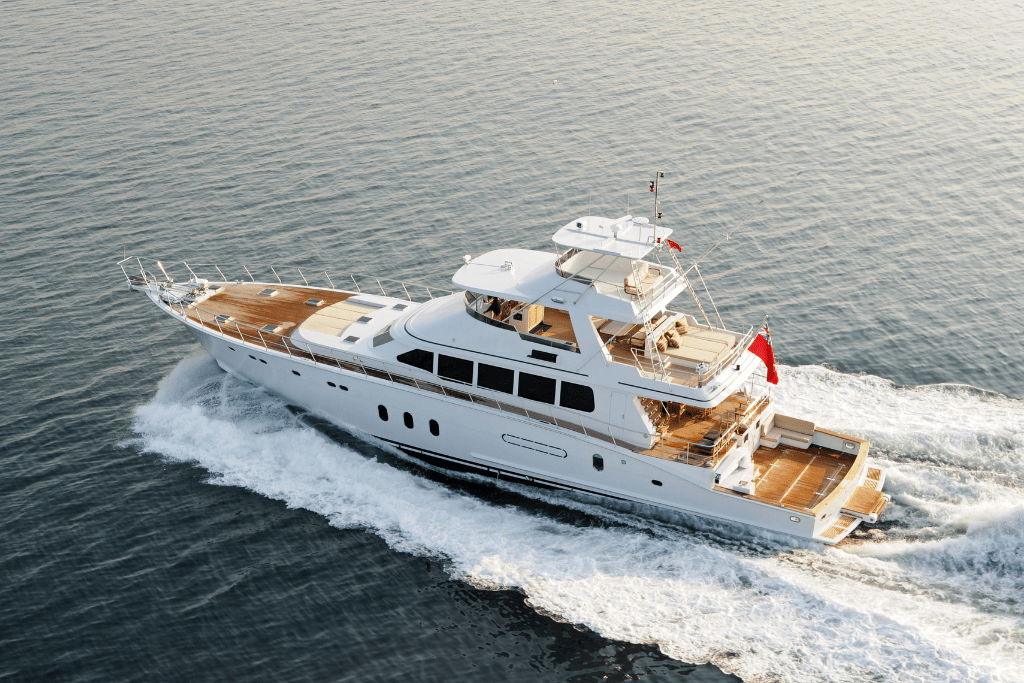
Making a Well-Informed Decision
Deciding to live on a yacht should not be made lightly. It’s a decision that requires thorough consideration of both the financial implications and the lifestyle changes. Prospective yacht dwellers should research extensively, speak with experienced individuals, and realistically assess their readiness for such a commitment.
Final Reflections on Embracing the Yacht Lifestyle
For those who find the allure irresistible, yacht living can be incredibly rewarding. It offers a unique way of life that blends adventure with simplicity, freedom with responsibility. If approached with careful planning and realistic expectations, living on a yacht can provide an enriching and fulfilling experience.
Please note that the information provided in this article is for informational purposes only and should not be considered professional advice. Prospective yacht owners are encouraged to consult with qualified professionals for specific advice related to legal, financial, and practical aspects of living on a yacht.
Leave a Comment Cancel Reply
Your email address will not be published. Required fields are marked *
Please Note: Due to the ongoing impact of Covid-19, orders are taking longer than normal to ship. Please allow 4-6 weeks for delivery on most items. Dismiss
- Meet the Team
- Our Manifesto
- Work with Us
- Budget Travel
- Personal Development
- Work & Travel
- United Kingdom
- More of Europe
- Philippines
- More of Southeast Asia
- More of South America
- More of Central America
- South Korea
- More of Asia
- More of North America
- New Zealand
- Pacific Islands
- More of Oceania
- South Africa
- More of Africa
- More of the Middle East
- Travel Essentials
- Travel Gear
Home » Budget Travel » Boat Life 101: How to Live on a Boat and Travel the World! (2024)
Boat Life 101: How to Live on a Boat and Travel the World! (2024)
Waves lap at the hull of the boat. Your feet are in the glassy water, a glass of rum in your hand, and a glorious sunset in front of you. Of course, the weather is perrrfect .
Just another day in the life of living on a boat.
Surely that’s not all what living on a boat is like though, right? What about the sea monsters ? What about getting shipwrecked and floating for days on end at sea awaiting rescue?
And as if a broke bum can really live on a sailboat. Come on!
Rest assured, greenhorn – I’ve got you.
I went from a baby sailor who almost blew up the boat, to hand steering my way across the Pacific Ocean using the Southern Cross as my bearing. And I did it all with very little cash to my name.
Now I’m here to pass on to you what it’s really like to live on a boat AND how to do it . It’s the how-to-poop, how-to-cook, how-to-sail – and the best places in the world to do it all in. PLUS how exactly you can put a budget on a dream.
Avast! I give you, how to live on a boat and travel the world.

The Broke Backpacker is supported by you . Clicking through our links may earn us a small affiliate commission, and that's what allows us to keep producing free content 🙂 Learn more .
Living on a Boat: What’s it Really Like?
How to live on a boat full time, best places in the world to live on a boat (and when to go) , the cost of living on a sailboat (and how to minimise it) , can you live on a sailboat for free, last tips for living the boat life.
- Buy Us a Coffee!
“Indigo, where’s the F**CKING coffee?”
Yeah, you want to buy a boat. And then you’re going to sail off into the sunset – travelling the world without spending a dime – with twelve babes on one arm and the world’s greatest rum in the other. Oh, it’s going to be so lovely, isn’t it?
Welllllll , I’m not here to burst your bubble, but I am here to give you a wee reality check.
Living on a boat is not for suckers; it’s not for the impatient; it’s not for the stupid. I realise that many people who suck and are stupid, can and do sail. They give the rest of us a headache – don’t be them.
If you forget the coffee, the rest of the boat may very well feed you to the sharks. The only shop for the next 200 nautical miles is now a distant speck on the goddamn horizon, after all.
However, provided there is ample coffee, rum, and good conversation, there is nothing better than living on a boat. No, that is not a cliche.
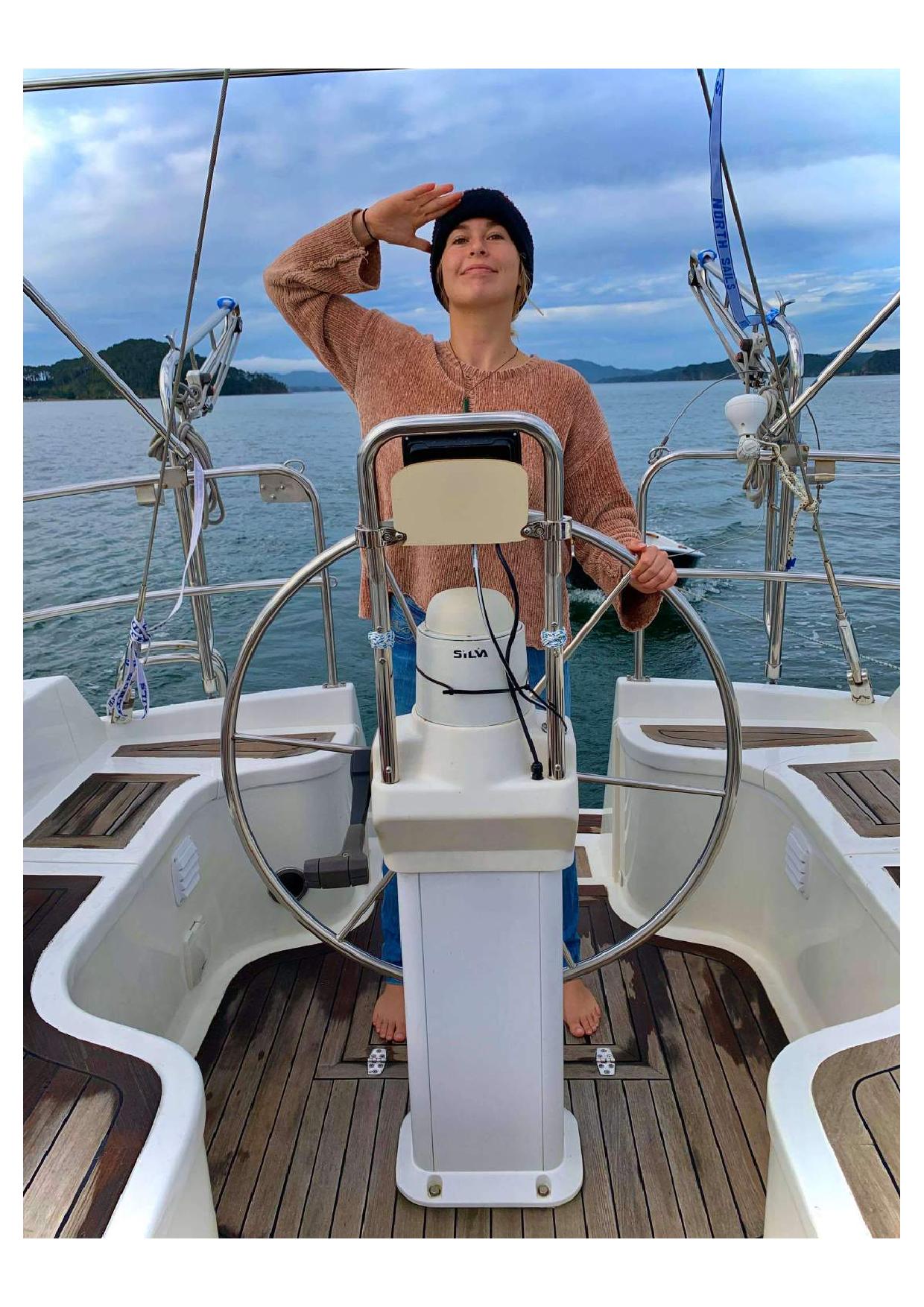
Life on a sailboat is life at its most .
- The duality of boredom and near-death experiences.
- Harnessing the wind and moving soundlessly across the great blue spectacular.
- Fresh sashimi.
- Deep introspection.
- The oscillating moods of the crew that spread like the flu.
- Long stretches of time with no goddamn Instagram.
A boat becomes a very miniature village, and in this, you can touch on a very primal way of living; one that has been passed down to us from many millions of years of evolution.
The simplicity is not always poetic. But it will make you appreciate every damn cup of coffee – and isn’t that what life is all about?

Do You Want to Travel FOREVER??
Pop your email in below to get a FREE copy of ‘How to Travel the World on $10 a Day!’.
So here it is folks! The basic and hyperbole-filled how-to of living on a boat.
It’s just three simple things. (Sort of.) And then, the ocean is your oyster.
Hoist those sails and may the wind be ever in your favour.
Boat Life 101: Pooping

Don’t laugh! Pooping on a boat is your first lesson in how different living on a sailboat is to land life.
You have to think about the consequences of your every action: sustainable travel MATTERS . If it’s a small sailboat, it will likely have a manual pump instead of a flush. You do your business, and then pump, pump, pump.
And that’s not where it ends. You need to think about where exactly your poop is going.
It becomes very clear that all drains lead to the ocean.
Usually, your poops will be going into the boat’s holding tank, but they only hold so much. You need to know the regulations in the national waters of wherever the boat is because you can’t empty the holding tank until you’re far enough away from shore, certain mooring fields, and protected areas… for obvious reasons.
Now, I would argue you haven’t lived until you’ve dealt with a malfunctioning head (marine toilet). Nothing makes you appreciate modern sewerage systems like the sweet smell of shit.
Boat Life 101: Cooking + Provisioning
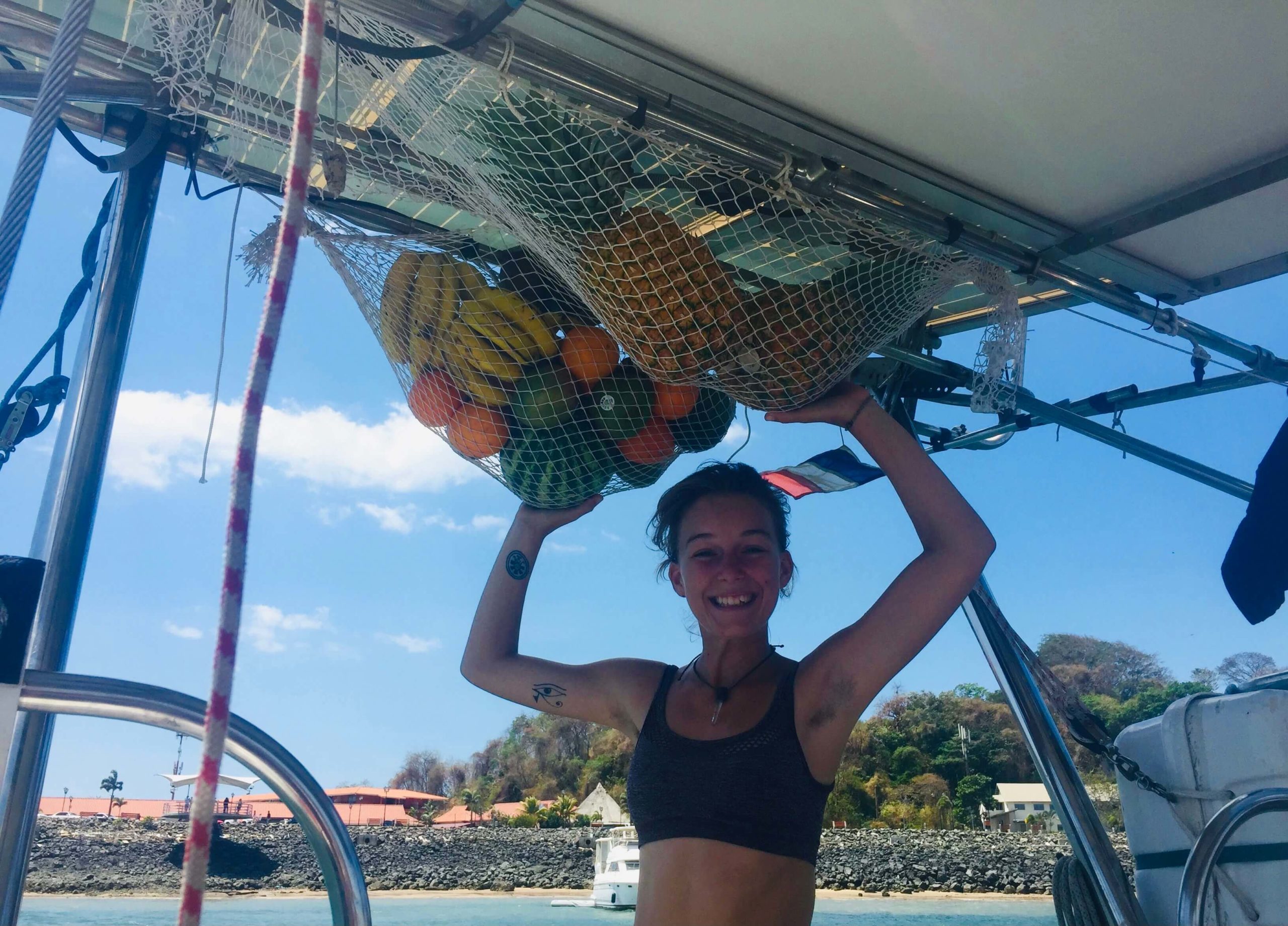
The consequences of your actions continue here. Even if you are sailing in proximity to shops or markets, the basic fact remains that the shops are on land and your boat is on the water.
That means there is no nipping to the servo for some extra milk that you forgot. You have what you have on the boat, and you make do.
So yeah, not bringing enough coffee for the passage? A dumb mistake you only make once.
Living on a sailboat has made me an organised (one might say obsessive, but one would be wrong) motherfucker. I am a HARDCORE list-writer, but you need lists when you live on a sailboat.

WRITE LISTS. And keep them going all the time.
- The food and supplies list.
- The fix-it list for maintenance.
- The visa requirements and beaurcracy list.
- The all-important books to read list .
If you go on an overnight sail and you know there’s food at the next anchorage, then you can get away with forgetting the coffee just this once. If you’re crossing the biggest ocean on Earth, that’s not gonna fly. You need to write a bloody list.
Also, food sometimes needs to be refrigerated. Refrigerators come with limited space and the frustrating tendency to gain sentience halfway through a passage. With sentience comes a severe attitude and willingness to ruin your food.
All I’m saying is, you gotta plan your meals, know how you’re going to store them, and write lists.
Oh, and it sounds obvious, but while sailing, the boat moves.
Yes, the stove on a boat is on a gimbal which means it swings with the motion of the boat and compensates for the movement. But when King Neptune feels the sailors on board have grown too comfortable, the soup says hello to the floor.
Boat Life 101: How do I sail this thing?

If you can take a shit and cook a meal while on a sailboat, you’re 90% done.
Collectively, we humans have been chucking some cloth on a bit of wood to capture the wind since the original discovery of Australia and the Solomon Islands (50 000 – 25 000 years ago).
Over the millennia, the process has become more refined. Now we can sail upwind and tack and all this fancy stuff. But ultimately, with a little patience and a lot of practice, anyone can learn to sail.
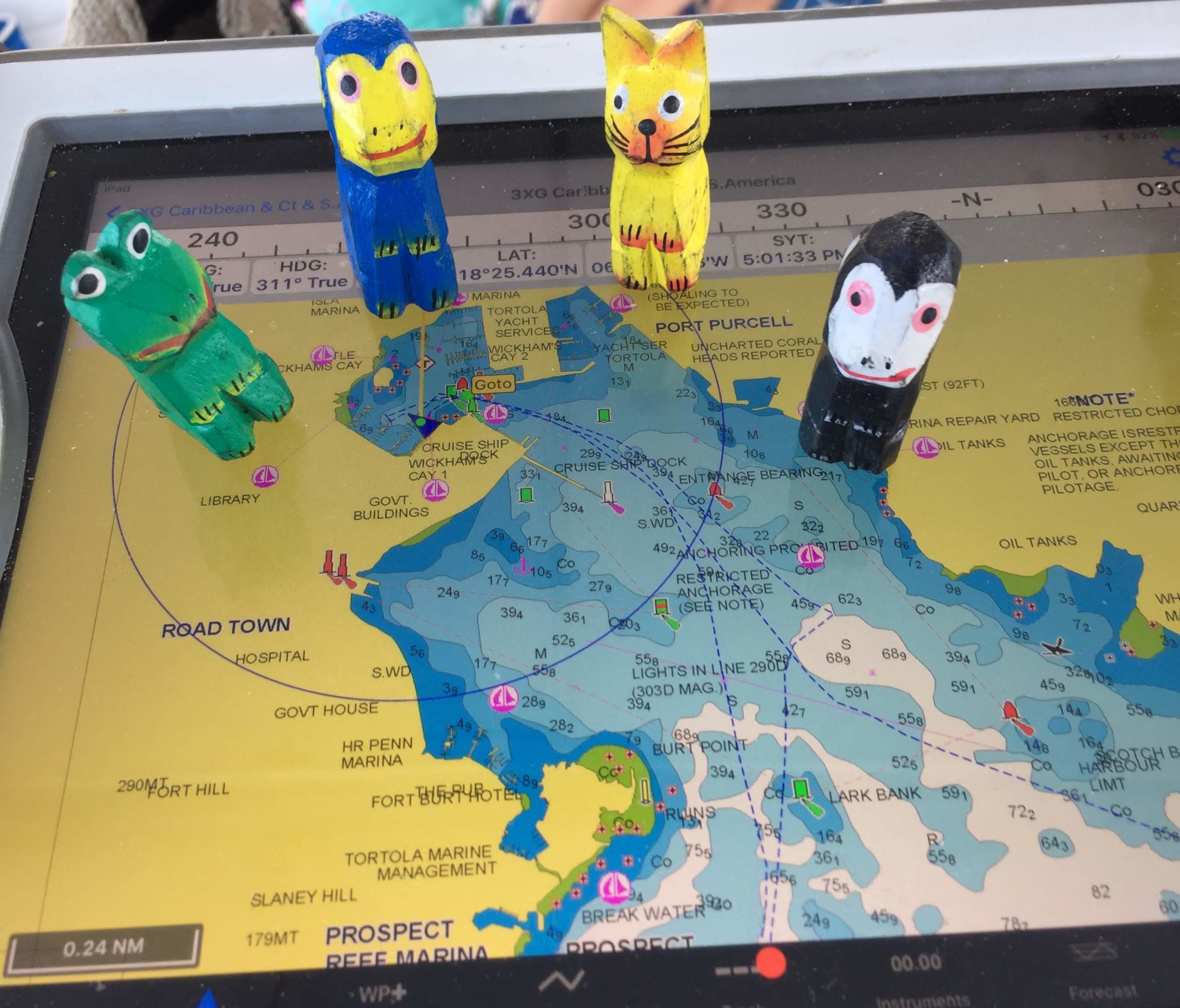
There is a multitude of electronic tools – chart plotters, AIS, GPS, Iridium GO – that help you keep a track of where the hell you are and give you detailed charts about where you want to go.
You can even get the weather sent in a tiny little electronic file via a device like the Iridium GO, even when you’re sailing across the Pacific Ocean . Very handy for avoiding boat-sinking storms!
Putting some sail on a mast and heading off has never sounded so sweet! But if you learn a thing or two about the trade winds , you can make your journey even sweeter.
The trades are these delicious winds that blow reliably from east to west, meaning you can access a reliable source of energy to propel you forward (provided you want to head west).
Trade wind sailing is famous for being fucking chill, with few gnarly storms and not too many becalmed days of boredom. The merchants of the tall ship days and the modern boat bum circumnavigating the globe both love the trade winds. Yes, for the easy sailing, and also for the good rum found at many of the ports along the way.
But when all else fails – say if your mast is struck by lightning and all your electronics are fried – there are still ways to orientate yourself on the big blue. These are methods that have evolved over our collective sailing history:
- Celestial (star) navigation : Using the constellations and a sextant, plus some maths, to figure out the boats latitude and longitude.
- Cloud navigation : Recognising the flat bottomed clouds associated with land to keep you on track back to terra firma.
- Reading the swell : This is just fascinating. This means understanding the persistent swell that move across world oceans and their relation to the star quadrants to estimate where your boat is and where it is going.
Test the Waters BEFORE You Sail – The Liveaboard Experience!
Another way you can get a taste of the boat life before you commit to a lifelong project is to charter a boat! Sailo does just that: Sailo lets you rent the boat life.
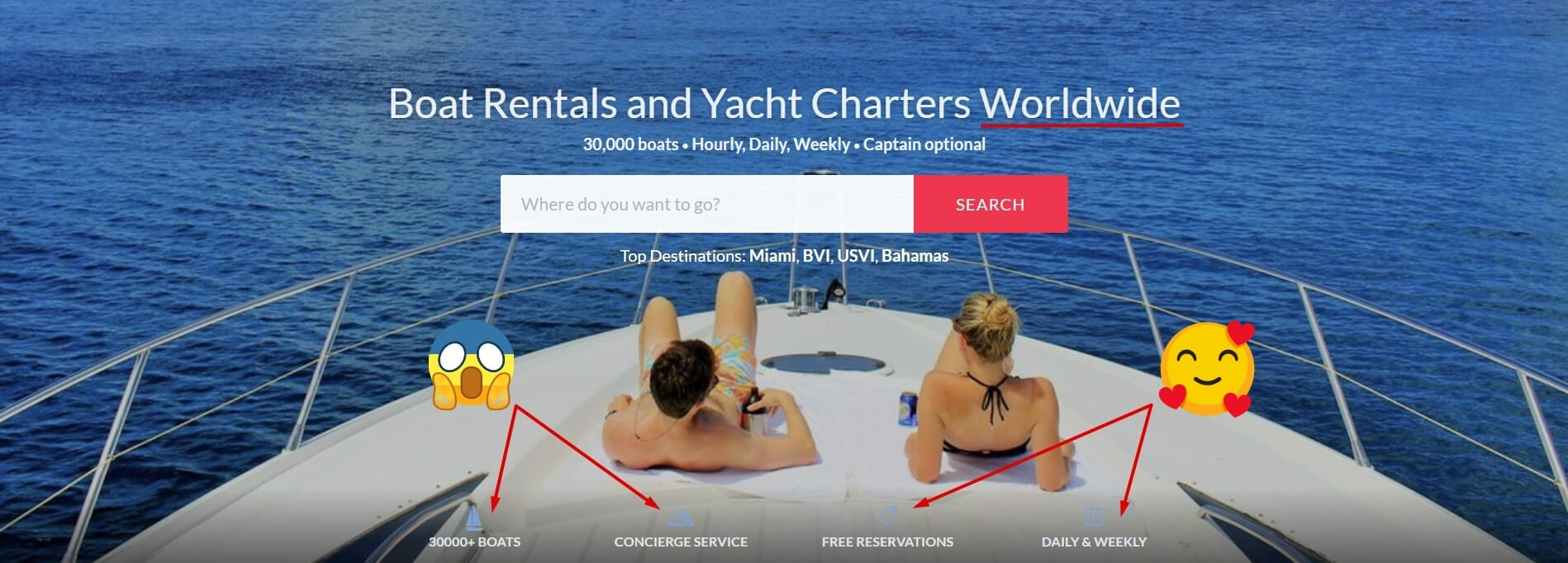
You get a boat, a sampler of the experience of living on a sailboat, and people on deck that actually know what the bloody hell they’re doing! With over 30,000(!) boats to charter from and a fabulous selection of the BEST places to live on a boat around, you’re guaranteed to find something that… floats your boat.
Sure, it’s not the no-frills boatbum style, but ultimately, you can choose to do it bareboat – with no captain and you bring all your own provisions. Or you can choose to have the boat crewed so you can sit back, relax and, learn a thing or two about boat life. (And drink champagne.)
Living on a boat comes with a host of challenges (and juicy rewards) that are made that much easier by picking a good place to do it in.
Access to quality boatyards, provisioning, internet connection – these are all big plusses for those living on a sailboat!
But also, all the stuff that made you want to partake in this mad boat lifestyle in the first place rate highly too. A plethora of remote beaches, magic sunsets, and a friendly cruising community of cool travel buddies (soon to become treasured friends) can make or break a dream destination.
I’ve also considered how easy it is to top up the cruising kitty with funds by rating how easy it is to find work in each place.
Australia + New Zealand

- When to go: November – May (NZ & southern Australia) April – September (northern Australia)
- Best suited liquor: EMU BITTER MAAAATE Whatever the Australians aren’t drinking.
I don’t care that the citizens of both these fine nations will be after me with pitchforks for lumping them in the same pile. Honestly, mate, bro, whatever, come at me. They’re both equally dope places to liveaboard your sailboat.
Yup, gonna say it right now, both these places can be expensive for the boat bum. But they also provide good-paying work opportunities if you can play the visa game right. So they are great places to slow down, pick up a travel job , and stack some cash for future ocean adventures.
You can also take a break from the boat life, and go on an epic backpacking adventure around New Zealand . You won’t know how much you miss the ocean until you take a break from her, trust me.
Also, the sheer diversity that I’ve so callously dumped in one heading is incredible.
Honestly, you can sail down to Stewart Island in the subantarctic waters and then back up to the Eden on Earth in the equatorial Torres Strait .
You could spend a whole, wonderful lifetime sailing between these two continents and still die regretting not having seen everything.
The long and the short of it:
- You can make bank here $$$!
- You can get your boat fixed properly here. Island nations like Australia and New Zealand have a wealth of boat building and fixing experience.
- There are well stocked supermarkets here, so you can stock up on bulk items that prove tricky to find in more remote locations.
- People are cool, remote beaches are cooler. And there is a metric shitton of incredible beaches here.
- There’s also an opportunity for non-boat adventures (like backpacking around Australia ) that will make you appreciate the ocean nomad life even more.
- Diversity! Of landscape and cultures.
- Dude, the first nations of Australia managed to cross over from Papua New Guinea (probably) 60 000 years ago. SIXTY THOUSAND (louder for those in the back). The knowledge on this ancient continent will humble you if you pause to listen.
- And the seafarers that made it to Aotearoa? The Maori are some of the most badass, friendly, wise, creative, HILARIOUS people you will ever have the privilege of meeting.
- $7 bottles of wine. Sorry. But like, yes please.
- There’s epic diving in New Zealand and all over Australia with endless (and scrumptious!) spearfishing opportunities.
- Living on your boat here is easy . Not without its struggles of course, but it’s always easier to struggle close to wifi connection.
The Caribbean

- When to go: The conventional advice says December – May, but you can sail here year-round if you know how to dodge hurricanes.
- Best suited liquor: Rum. Obviously rum. Maybe with a squeeze of lemon and a splash of cola.
If you can dodge the hangouts of the rich and the famous (or work out how to make money off them) sailing the Caribbean and living on a sailboat is very rewarding.
Salsa lessons in the streets of Puerto Rico , rum-soaked nights in the Virgin Islands , goat hunting, spearfishing , azure waters, and white sand beaches all the way down to Bonaire .
Getting into the charter boat game provides a great way to make dat money. During the high season, this is one of the most popular places in the world to charter a boat.
If you are happy to do your own boat repairs, a lot of fishing, and get clever with your travel budget , the cost of living in the Caribbean is not super expensive either. You just gotta know where to go for what.
Cheap coffee and rum can be brought in bulk in the Dominican Republic . There’s a Costco not far away in Puerto Rico , so you can get some bulk toilet paper. Then it’s onwards to a deserted island, a reef, and some endless fun in the sun.
- Cheap boat repairs are available in places like Rio Dulce, Guatemala. So, for those big projects you can save quite a bit of money by getting them done here.
- The rum. I mean, it has truly been perfected here.
- There are oodles of work opportunities in the charter business or in the superyacht world.
- Cheap flights back to the USA means you can feasibly travel between the USA and El Caribe guaranteeing you an endless summer.
- The glorious azure waters and their 27-degree celsius temperatures. Helllloo, nude night diving.
- Warm, deliciously WARM, diving.
- More people at the anchorages = a very social and welcoming community of cruisers. There is a great liveaboard culture that’s hard to replicate elsewhere.
- Easy trade wind sailing.
- Did I mention the rum?
The South Pacific
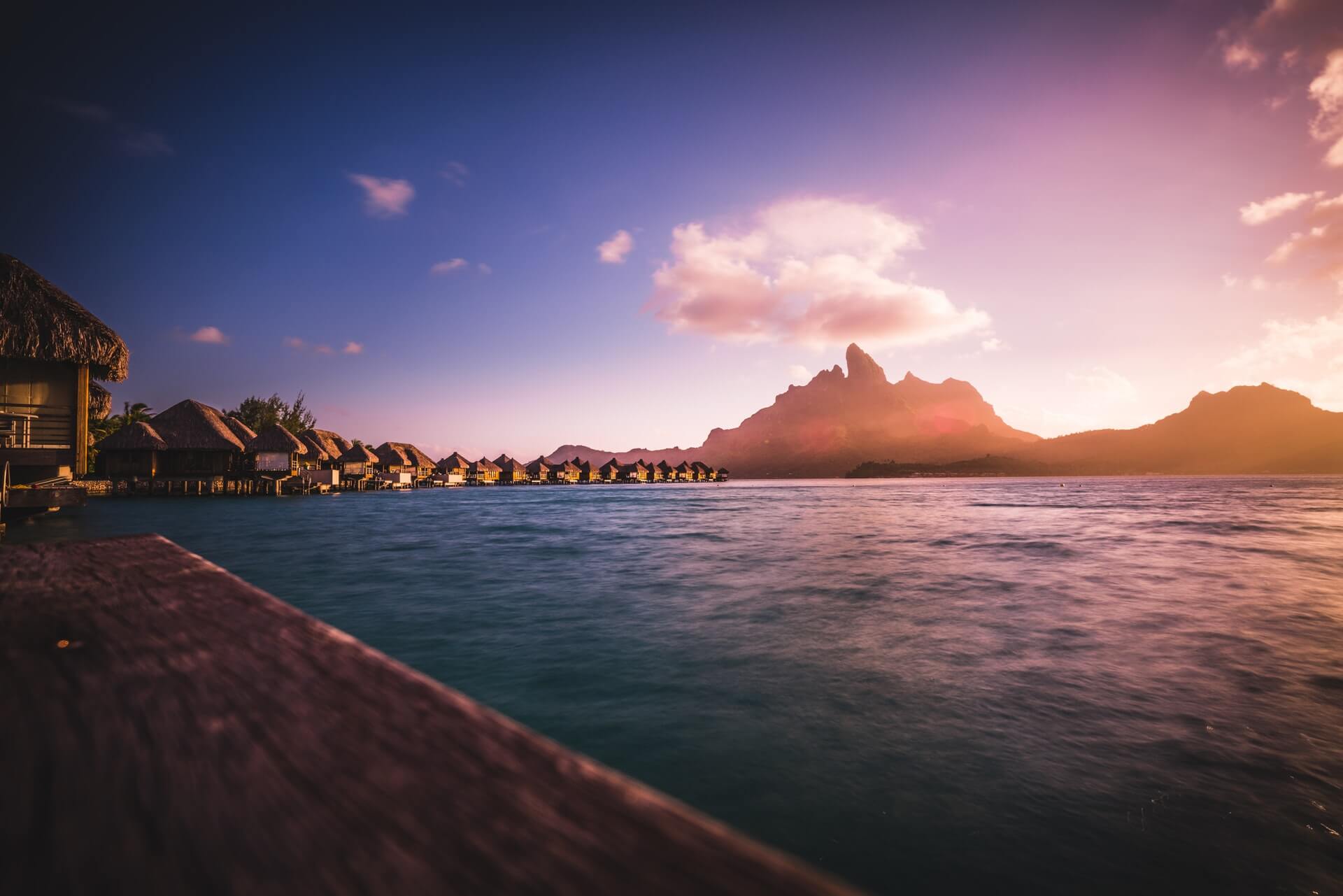
- When to go: May – October (You can arrive in the Marquesas in April with no problems.)
- Best suited liquor: A little vodka, a lotta soda, a squeeze of lime.
I won’t even try to hide my bias. I LOVE the Pacific.
Is it the best place to live on a sailboat for most people? Probably not. Because the distances between your boat and a grocery store are usually mind-boggling. It can be expensive. It can be lonely.
There’s just no way quite like travelling to places like French Polynesia the way you can on a boat. Out in the middle of the ocean life is not always easy, even if it is full of palm trees.
But fuck it, I love the Pacific, so we’re including it.
No, honestly, if you can mitigate the challenge of distance, you are rewarded with the best planet Earth has to offer. Incredible diving, a slow pace of life, some world-class hiking trails (and world-class peaks), lazy sunshiney afternoons. Perfect postcard sunsets. Mmmmm.
A full one-third of the globe is consumed by the Pacific Ocean, and scattered throughout this utter vastness are innumerable tiny little islands. Luckily for the bum of the seas, the trade winds can carry you from the Americas to these little flecks with few problems.
In fact, all the technical sailing here is relatively easy. As long as you don’t get becalmed at the equator thanks to the weirdness of the ITCZ band, it is easy sailing.
But you’re going to need a water maker and have a solid solar panel set up for power. Because between Panama and the Marquesas , there are approximately 3800 nautical miles – more if you go stop in at the Galapagos.
That’s a long way between places to buy coffee. And there’s not much in the way of supermarkets until you get to Tahiti , another 800 nautical miles away.
If you leave IndigoRadio on for long enough, inevitably Kiribati will come up. You can hide from hurricanes here. The South Pacific is defined by island life at an island tempo:
- You can get delicious fish on the end of your gidji real fast here.
- People-less anchorages.
- Dreamy atolls.
- And not a damn supermarket in sight.
Ok, not everyone’s idea of easy sailing, but certainly my idea of the best that living on a boat has to offer.
There is a multitude of lifetimes that could be spent escaping the rat race and kicking back in the Pacific. There is an awesome amount of diversity of landscapes and cultures here too, not to mention a proud seafaring tradition that we aspiring boat bums should shut up and learn from.
A Tip From One Pirate to Another
Okiedokie, you wild little circumnavigator-to-be! There are multiple ways to criss cross the globe. Resources like noonsite.com and Jimmy Cornell’s cruising guides will be invaluable to you in the planning and execution stages of your journey.
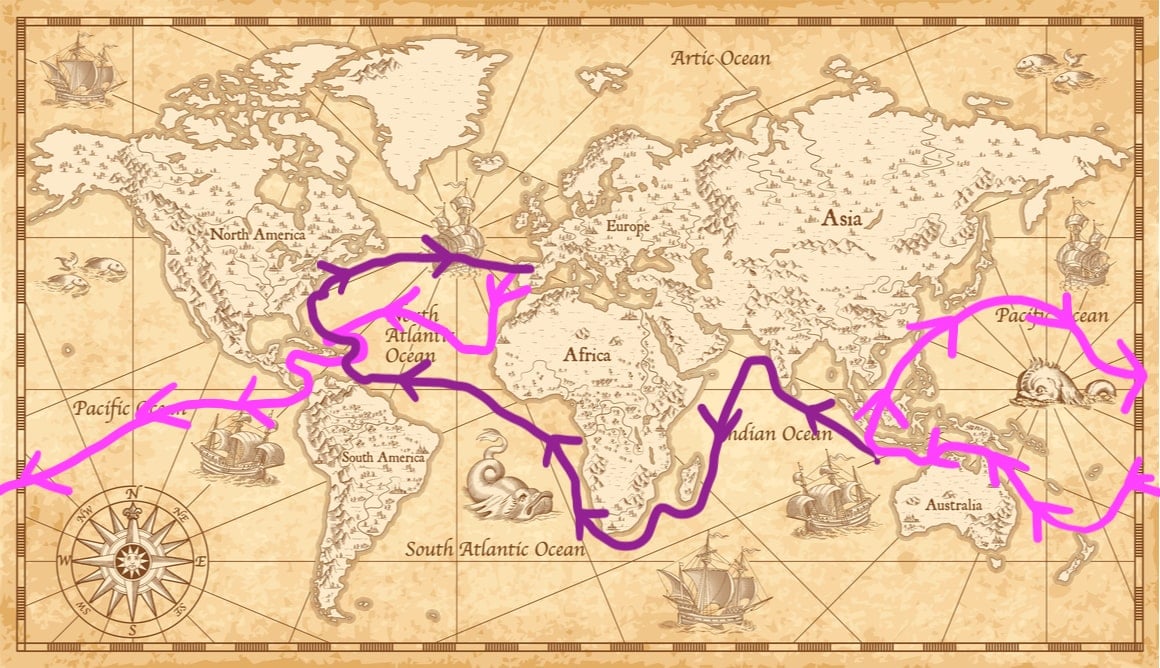
But at a glance : I would suggest starting in Europe and the mediterranean and picking up the trade winds west across the Atlantic in this order:
- Through the Caribbean and through the Panama Canal.
- Onwards across the South Pacific, kissing New Zealand and Australia before either…
- Circling through South East Asia and back across the Northern Pacific…
- OR continuing up past Sri Lanka then…
- Around the Cape of Good Hope before…
- Going back across the Atlantic and the northern coast of the USA and back home!
Use the trade winds to your advantage! Go west until you can go west no longer.

Things go wrong on the road ALL THE TIME. Be prepared for what life throws at you.
Buy an AMK Travel Medical Kit before you head out on your next adventure – don’t be daft!
No sugar coating here. Buying and maintaining a sailboat, no matter how much it resembles a tin can, adds up real fast.
But when the eternal sunshine and the lessons of the great blue spectacular call you – when King Neptune drafts you into his eternal service – it’s time to find a will and a way.
Here are a few tips to help you plan a trip that I’ve picked up from my short time making various vessels my temporary abodes:
- Don’t buy a project boat unless you want a project. It will cost you more to fix everything on a broken boat than it will to buy a boat that’s good to go.
- But, when you do need to repair, DIY. Endless learning, yay! Or, plan your sailing route to include time in places like the Rio Dulce where repairs are cheaper.
- Anchor more often than you stay in marinas. Marinas are devilishly expensive; anchoring is deliciously free.
- Volunteer on someone else’s boat before you get your own. 😉 If done right, this is win-win. You can take share in the labour of running a boat (for example by standing night watch) while learning the finer points of sailing from a master.
- Get seasonal work. There are so many options when it comes to this, from ‘backpacker’ staples like agriculture and hospitality to working on superyachts or as dive instructors.
- Or have residual or passive income if you’re real cool. If you’re on that elusive property ladder or earning money online , why don’t you have a boat? Just head off now and live off your automatic wealth. Be a cool kid.
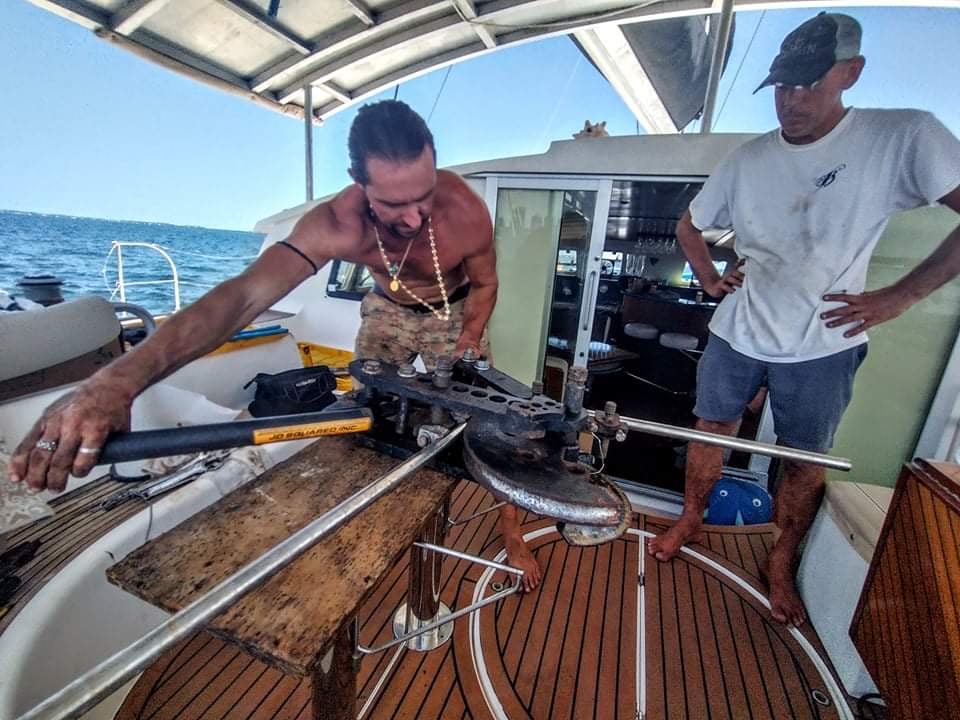
Of course, when a backpacker asks about the cost of living on a sailboat, they really want to know if you can live on a sailboat for free. When a family looking to take a sabbatical asks about the cost of living, they just want to know hard numbers and a budget breakdown.
At the end of the day, you can hoist a heavily patched sail on a jerry-rigged mast and work on the boat yourself, and eat only what you catch or grow. At the other end, you can set sail on a superyacht replete with full-time staff and jetskis.
We anchor in the same sand and watch the same sunset though, so you choose what you need to spend.
I would suggest being honest about your lifestyle. Consider being a little obsessive organised about your annual costs. Because costs are going to vary greatly from boat to boat.
How Much Does it Cost to Live on a Boat? (Pricing Breakdown!)
| Expense | Absolute Bum | Mid-Sized Boat Two | Large Boat with 4 – 5 people | Superyacht |
|---|---|---|---|---|
| Food/Water/Liquor | $200/year (because moonshine) | $120/week. | $300/week | $500/meal |
| Fuel (diesel) | $60/year | $300/year | $600/year | $400/hour |
| Port Fees | $0 – $300/year | $0 – $300/year | 0 – $300/year | $0 – $300+/year |
| Marina Charges | $0 (what is a marina?) | $0 – $250/year | $0 – $1000/year | The numbers start to make me shiver here. As in, $100,000+ annually. |
| Insurance | $0 | $800 – $1000 | $1500 – $2500 | Pfffft, again, something like $250,000+ |
| Power | $0 | $200 | $500 | lol. |
| Other (eg. kids education, souvenirs, rainy day fund) | $0 | $0 – $500 | $0 – $1000 | Limitless, probably. |
Obviously, the variables that go into the cost of running a liveaboard boat are vastly dependent on your style of living and where in the world you are sailing.
Generally speaking, it is cheaper to spend more time at anchor and in countries with a lower cost of living. However, insurance will still be 1% – 2% of the cost of your boat and port fees are port fees. Still gotta pay ’em, whether you’re a broke bum or a gazillionaire.
Sailing and Diving Go Together Like… Sailing and Diving!
A way to combine two of the best things on Earth is to indulge in a liveaboard experience .
This is exactly what it sounds like – you live aboard a boat, usually in some fantastic and tropical destination. You can indulge in some wonderous diving, and pick the brains of the crew about their tips on living aboard a vessel!
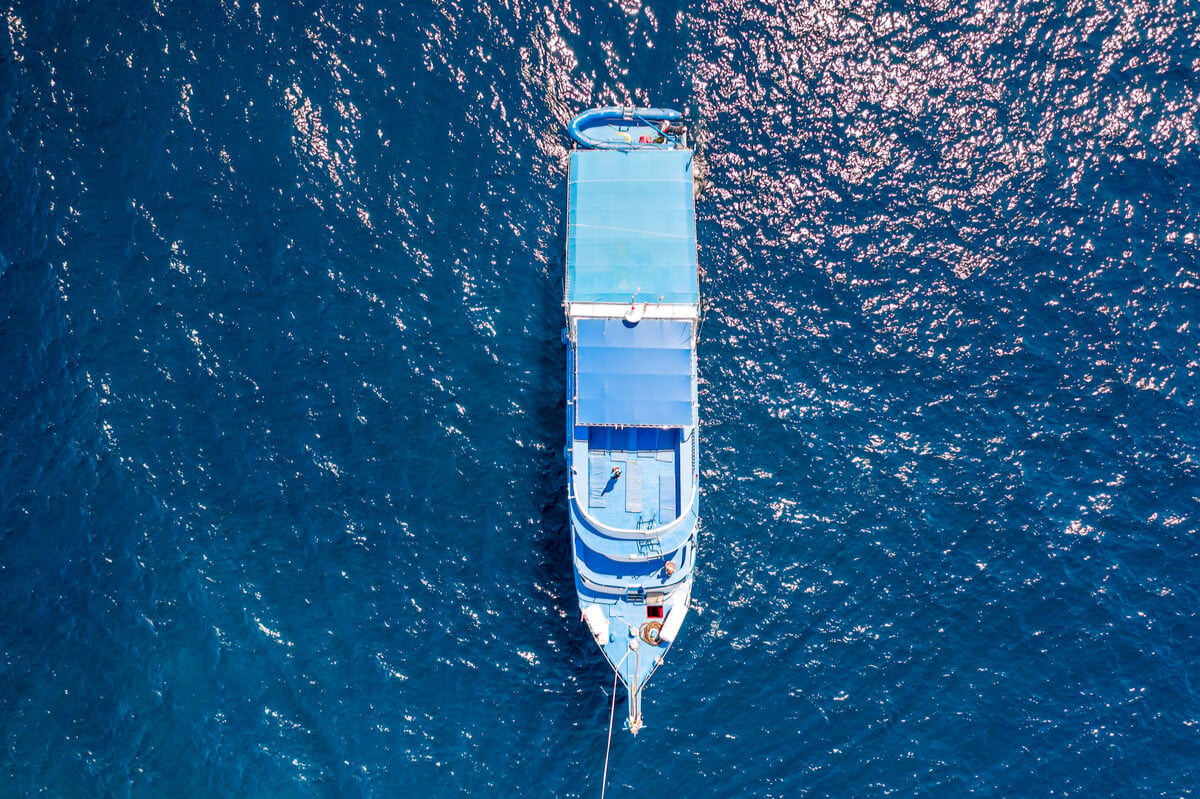
The focus of the liveaboards is the epic diving experiences in destinations that just aren’t as accessible when travelling in other ways. Also, it’s a great inspiration for you to hustle your way onto your own boat so that diving amongst reef sharks becomes as normal as your morning coffee.
Now the controversial stuff.
I’ve had someone say, a little tongue in cheek: damn yachties get the wind for free and now they want everything else for free!

While I think being resourceful and a bargain hunter is the best way to live your life, boat or no boat, it’s just as important to have a bitta respect. So when you hit the seas or the road, I don’t see the point in haggling hard over what amounts to 50 cents.
When it comes to boat stuff, in particular, break it down into your shelter, food, and fuel, and don’t aim to get everything for free .
Aim to sustain your lifestyle for as long as possible in a way that doesn’t compromise it for everyone else. In other words, be ethical about your damn budget travel. The most rewarding consequence of trying to keep costs down is creating a more or less self-sustaining yacht. Better for you and your personal growth; better for this pale blue dot we call home.
Sailboat Cost Cutter #1: Shelter
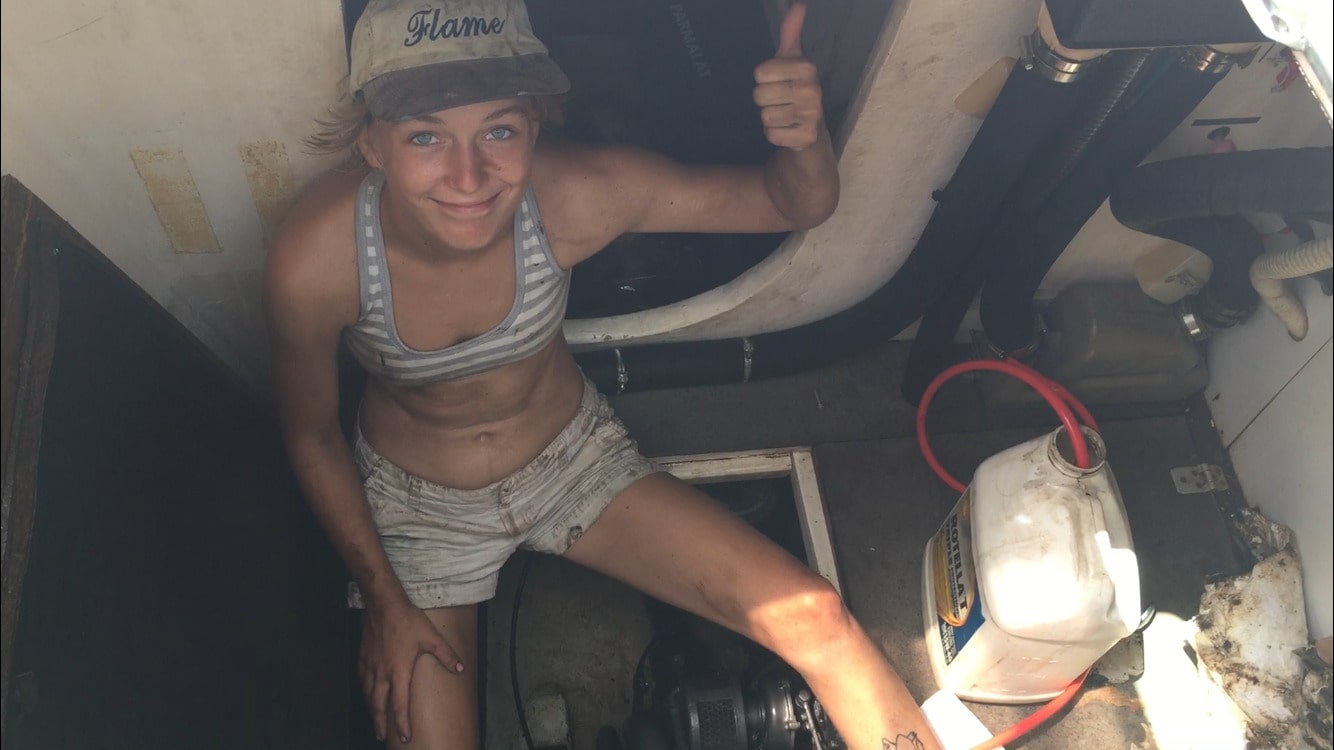
Maintaining your shelter (i.e. your boat) is not going to be a ‘free’ exercise. You will pay with money, or your own labour and time, to maintain it.
It will be an exercise in learning all kinds of systems – both mechanical and electrical – and time management. Do you want to pay for that task with money or your labour? Whatever you land on for each maintenance task that inevitably comes up, you will learn that to sustain this boat bum lifestyle you just gotta take care of your wee home and she will take care of you.
It is always free to sleep on your boat while underway. Well, it doesn’t cost any money anyway. You are investing a lot of time and energy into the passage, but you’re not paying to sleep on your boat!
Once you arrive, you can choose to stay in a marina, on a mooring, or at anchor. Anchoring will always be the cheapest (usually free) and so you don’t have to spend a lot to live in paradise. But don’t be a dick.
- Have the right visa.
- Be respectful of others in the anchorage.
- Don’t dump shit (literal or otherwise) overboard unless you are sure you’re allowed to.
- Be friendly and offer your neighbours a hand if they need one.
This lifestyle can bring out the best in us provided we’re responsible travellers , so lean into that.
Sailboat Cost Cutter #2: Fuel
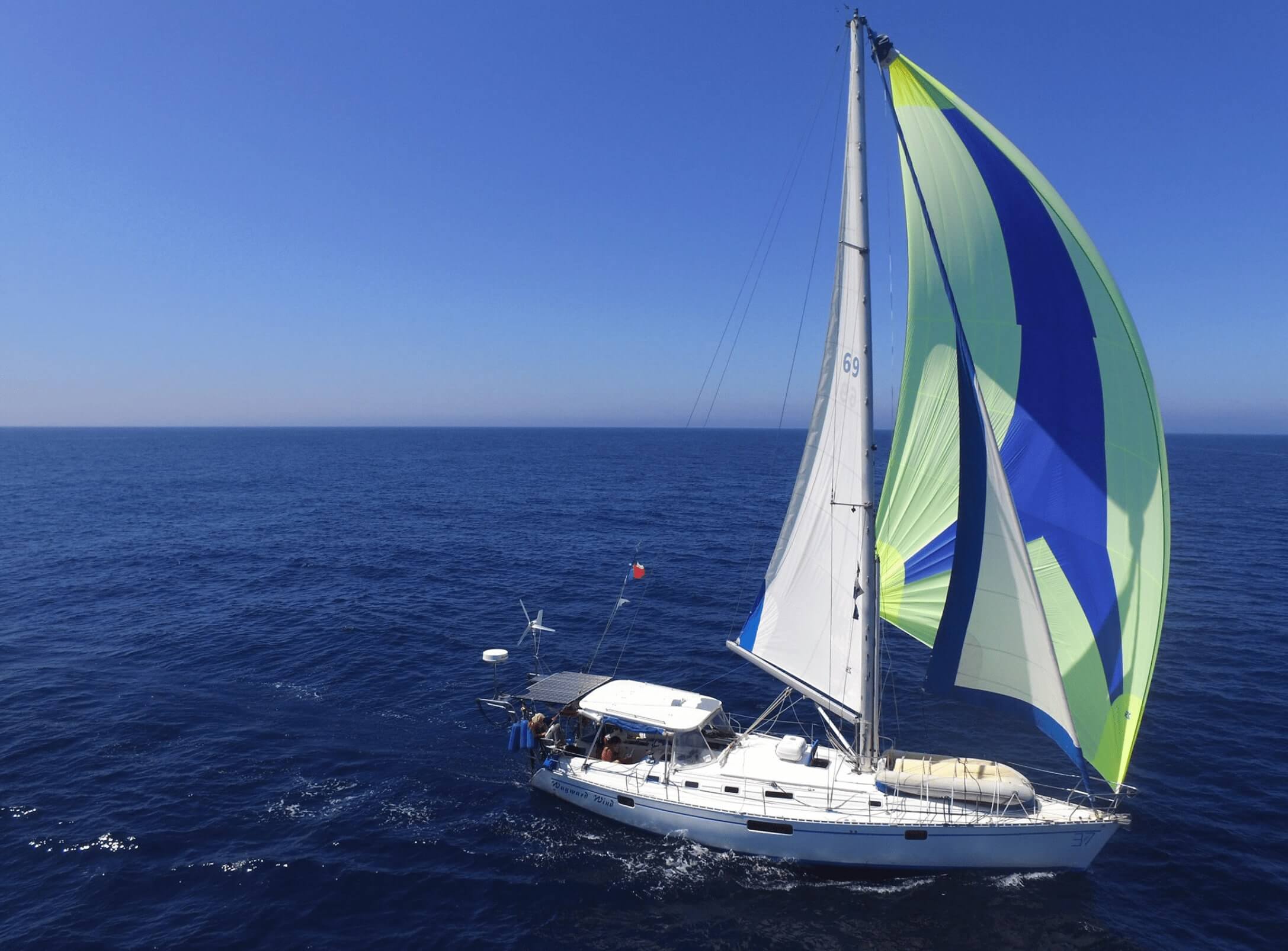
As my friend said, damn yachties get the wind for free! Much of the energy needed to go from A to B is yours for the taking, provided you can harness it efficiently with your sails. But as with DIY vs paying for repairs, sometimes you pay just as dearly with your time as you would have with your money.
If you are becalmed, the engine may be just the thing to help you out. When coming into a marina, you’re not going to want to be under sail. Likewise, in a storm, it is time to put the sail away and turn on the engine for stability. So having a little diesel onboard is necessary.
Compared to land life, people living on a boat can minimise their carbon footprint and live very simply. But it’s difficult to ask the Earth for none of its resources. Just be mindful about the way you live, be eco-friendly , and try your best to not waste resources.
You can recharge your boat batteries for electronics with the sun though – provided you can harness it with solar panels. And a lot of liveaboards will have a wind turbine for extra power on the less sunny days. This stops you from needing to use the engine so much. Yay for money, yay for the environment.
It’s never going to be completely free. You either pay with time or money. But you can certainly save a lot of money on fuel while living on a boat. This is a rewarding way to sustain your lifestyle and be kinder to the planet.
Sailboat Cost Cutter #3: Food
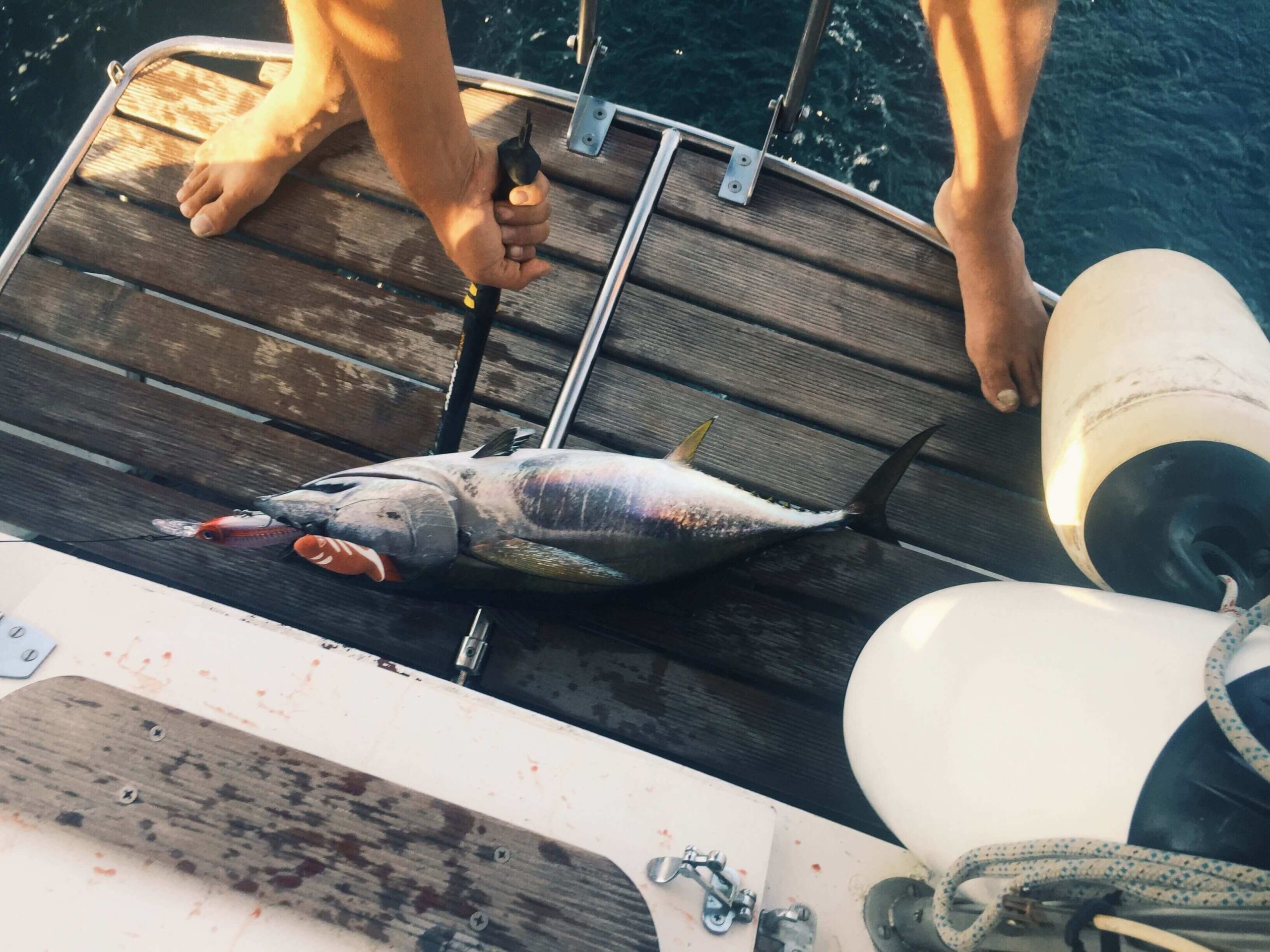
I apply the same principles to food as I do to food and shelter: you pay with money or you pay with time and labour. Also, don’t be a dick, and be good to the environment. What comes around goes around.
This means, when it’s available, I will spearfish and I will hunt. This is me paying for my food with my time and labour rather than money. But I would also argue that it’s fulfilling my other principles of:
- Not being a dick and…
- Being good to the planet.
Hear me out: I think vegans and hunters alike would agree that factory farming and the industrial scale of meat production are fucked up. It’s a waste of our water, arable land, and produces poorer quality meat. Furthermore, the animals suffer tremendously.
But if I’m kicking it in Kiribati, there is no way I’m going to be a vegetarian and still believe I’m doing a solid for the planet. The carbon footprint required to get my strictly vegetarian tofu to the remote islands is greater than the carbon footprint of me harvesting a fish every few days.

That fish has swum about its whole life having a good time doing cool fish stuff. And then, like all of us will, it died. I have immense gratitude toward this being for providing me with sustenance. I feel like I am part of a cycle of life that predates my puny existence.
In the same vein, to bring tofu to the Caribbean has required a process that is on the whole less ethical than going for a shoot and getting a feral goat for dinner.
The land cleared to grow the soybeans + the production of soybeans into tofu + the carbon cost of flying the tofu product into the island = YIKES.
The feral goats that destabilize delicate island ecosystems? They had a good goat-y life and then they became a good goat-y curry that fed 12 people.
Ok, I’m done. Eat meat or don’t; ethical animal tourism and all that jazz, however, morality is complicated. There are ways to reduce the money you spend on food and your carbon footprint without being a dick.
I’d also say that in the process of harvesting your own food, you gain a greater appreciation for life on this planet. And get a sense of urgency around stepping up to protect it. Give it a try; you might be surprised.
Epic Tips for Broke Boatpackers
- Know your knots. Apart from knots being fascinating in their own right (knots were probably invented alongside stone tools?! ), they are the foundation of boat life. Knowing a couple of basics , like a bowline, will give you a good leg up when joining a boat.
- Be able to cook at least two decent meals, also be clean. You aren’t only working, but living on this boat with someone. Take care of your space and bring some good food to the table and you will go a long way as a crew member.
- Go to docks and ask around. This is a good way to meet people – even if you just end up crew for a day sail. Be friendly, make yourself known, and find you’ll find yourself on a boat in no time.
- Facebook can be your friend. When walking the docks fails, there is a multitude of Facebook and other social media groups dedicated to connecting wannabe crew with boats!
- Know how to write about yourself on your Facebook adverts. But you’ve got to know how to sell yourself! If you can cook a bomb-ass puttanesca and can tie a reef knot – mention it! Don’t sell yourself short! That being said, don’t exaggerate and tell fibs about the sailing experience you (don’t) have. The truth will come out painfully during the first bit of real sailing you do, so be honest. There’s usually captains willing to teach the basics for a bit of company and a good meal.
- Knowing how to fillet a fish is handy. Sailors know how to sail. They don’t necessarily know how to fish. So if you can bring this skill to the table, you’re going to be a beloved crew member in no time!

Drink water from ANYWHERE. The Grayl Geopress is the worlds leading filtered water bottle protecting you from all manner of waterborne nasties.
Single-use plastic bottles are a MASSIVE threat to marine life. Be a part of the solution and travel with a filter water bottle. Save money and the environment!
We’ve tested the Geopress rigorously from the icy heights of Pakistan to the tropical jungles of Bali, and can confirm: it’s the best water bottle you’ll ever buy!
Sweet, glorious tips from a pro-pirate to a soon-to-be, the seas are calling, so go sail them!
Stay Safe, Boat Bums!
One thing that many intrepid little sailors are not good at? Estimating danger and the likelihood of death.
Maybe this is a good thing because you do have to be the right sort of mad to get into a sailboat and cross an ocean.
Maybe, just maybe, you should consider purchasing travel insurance before shit hits the fan though. But enough from me, hear it from a fellow adventurer.
ALWAYS sort out your backpacker insurance before your trip. There’s plenty to choose from in that department, but a good place to start is Safety Wing .
They offer month-to-month payments, no lock-in contracts, and require absolutely no itineraries: that’s the exact kind of insurance long-term travellers and digital nomads need.

SafetyWing is cheap, easy, and admin-free: just sign up lickety-split so you can get back to it!
Click the button below to learn more about SafetyWing’s setup or read our insider review for the full tasty scoop.
FAQs About Life on a Boat
Here’s what I know you want to know about living on a boat!
What is the cheapest place in the world to live on a boat?
This will depend on your spending habits, of course. If you give yourself a budget of $3000 per month, you will spend $3000 per month. That being said, travelling around Southeast Asia and South America is an exquisite choice. They have superb cruising and a low cost of living. The Philippines stands out as a paradise to explore while on a budget.
Can you live on a boat in a marina?
You absolutely can! Now, call me biased, but the point of living on a boat is to go adventuring so I’d keep marina stays strategic . Only stay as long as it takes to get repaired, or get provisions, and then take off into the sunset!
Can I sail around the world?
It doesn’t take much to put the sails out and follow a bearing. It also doesn’t take much to lose your mast in a surprise squall. Of course, you can sail a boat around the world, but you need to be organised. Provisions, finances, weather. The trip of a lifetime is not for the faint-hearted. Not that that should stop the intrepid adventurer!
SOMETHING REALLY IMPORTANT NOT TO FORGET
Follow instructions and ACTUALLY LISTEN. Put that ego aside, mate. The Captain ALWAYS has the final say, and if they say duck, you DUCK. The boat life can be real unforgiving. Oh, and learn how to handle your rum! It’s a pirate’s life and, well, nobody wants to be at sea with that guy…
Do sea monsters really exist?
Oh yes. Without a doubt. You just won’t meet the monster until you’ve been at sea for more than 25 days straight. The crew are tired of each other. The boat keeps breaking. There’s a storm on the horizon. It’s night watch again and the clouds are hiding the stars. You wonder if your mother is worried for you and when you might be able to call her again. Briefly, you lean over the side of the boat and wonder what it would be like to just walk off. Would you sink or swim? The sea monsters don’t live in the sea.
Fair Winds, Sailor!
Living on a boat will challenge you.
There is no other lifestyle that forces you to be attuned to weather patterns, engine maintenance, personal dynamics, ethical dilemmas at every mealtime; to consider watermakers and wind turbines; to completely surrender while also stepping up and getting shit done.
The nitty-gritty of how to live on a sailboat will not be fully revealed to you until you step onto one and do it. But, if you can poop and provision you’re halfway there!
You gotta lick your finger and hold it up to the wind. Ah yes, the trades blow west. Rum and a seriously sexy sunset await.
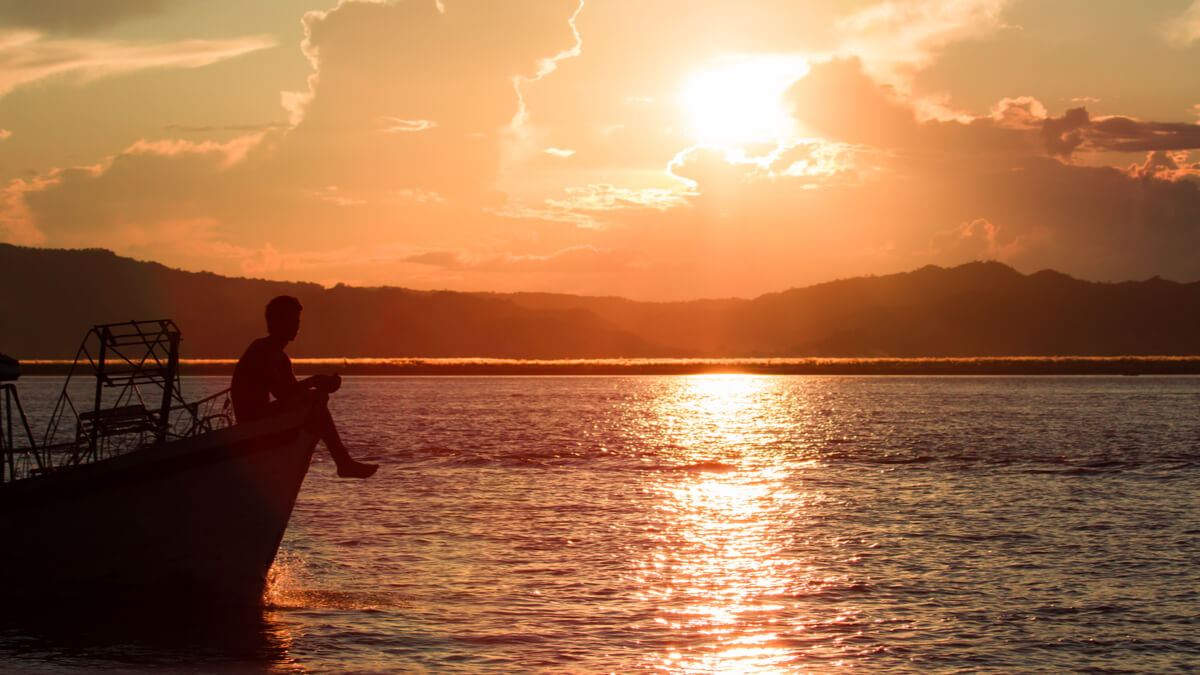
Buy Us a Coffee !
A couple of you lovely readers suggested we set up a tip jar for direct support as an alternative to booking through our links. So we created one!
You can now buy The Broke Backpacker a coffee . If you like and use our content to plan your trips, it’s a much appreciated way to show appreciation 🙂

Indigo Blue

Share or save this post

I truly enjoyed this read. I am under a government contract for the next while, but have a plan to retire and become a full timer somewhere warmer than Canada. I have been making my own notes and your writing gave me plenty more tips. Please feel free to email and keep me in the loop. Thanks so much and happy sailing!
Amazing read, thank you so much! I’m planning to get on with my own boat living dream and was curious if you (and fellow readers ) could share your thoughts on some of the big issues of boat living you have experienced? Much obliged 🙂 Keep up the good work!
First of all, welcome to the boat life! Biggest issues: Realistically the biggest issue is usually finances. The ocean is constantly wearing away at your boat and trying to sink it. Buying and maintaining a boat is expensive. That’s why so many boat lifers end up in the charter or delivery business – either as crew or as owner/operators – because it pays well.
Once you have your cruising kitty sorted, the next biggest issue is crew dynamics. Sailing alone is demanding, lonely, enthralling, and incredible all at once. Having crew on board and stepping up as captain is a trip in itself. Managing a team is always challenging – let alone when your team lives on a tiny sailboat and is constantly fighting the elements and can never take a break from each other.
The actual sailing and reading of the weather – that stuff becomes easy! This is why you should make yourself stop every so often and remind yourself how wild and wonderful it is that you’re getting around using the freaking wind! Also, the stars, man. If there’s one reason I’d cross the Pacific again for, it’s the stars.
Good luck and fair winds!
That is a f*cking great 101 boat guide! ahah Thank you Indigo for it and welcome to the writer’s team 🙂
Leave a Reply Cancel reply
Your email address will not be published. Required fields are marked *
Save my name, email, and website in this browser for the next time I comment.
Notify me of followup comments via e-mail.
Every product is independently selected by editors. Things you buy through our links may earn Vox Media a commission.
What Life Might Look Like on the World’s Biggest Yacht

On a Tuesday morning in September, a six-foot-long plastic model of a boat sat on the second floor of the Explorers Club, looking a little like a beached Orca, sleek and out of place in the tweedy boardroom. The tiny yacht had traveled to East 70th Street from Los Angeles and, before that, made stops in Monaco and Zurich, Cannes, and West Palm Beach — a prop to entice buyers who can spend $10 million on a cabin in the world’s biggest yacht. If it gets made. The boat will be called the Ulyssia and it’s the passion project of Frank Binder, a billionaire from the Merck clan with a thing for boats (he once owned a shipyard in Monaco). Lenny Kravitz, his friend, is onboard to help design interiors. (“He’s a genius.”)
Binder has been doing a world tour to find other buyers — who might be hard to meet. Maintenance hovers around 3 percent a year, or $300,000 for that $10 million one-bedroom. It’s a big ask, especially for a boat that, if he does get recruits, won’t launch until 2028. To help, Binder brought on two former executives from the World , the luxury liner that was the first — and only — to prove rich people want to live … at sea, all year. (It launched in 2002, is still sold out, and has yet to snag on an iceberg or go bankrupt.)
Renato Chizzola , a senior vice-president for the Ulyssia who worked as the general manager of the World for five years, spoke to Curbed about the terrors of elephant seals and why he once hired Israeli snipers to come onboard.
This interview has been condensed and edited for clarity.
What did your job on the World look like??
I was in charge of lifestyle, expedition, everything — even the kitchen. You have a captain who’s the master of the vessel, and he ultimately will have the last word on safety, security, where we go, where we can’t go. But then you also need to have somebody who has grown up in a galley carrying luggage. I’m 60 in October. When I was 27, I said, “Okay, how can I see the world without having money?” So in 1993, I was hired on the Queen Elizabeth II , then went to hotels, cruises, and in 46 years I traveled to 186 countries. I was allowed to live onboard and basically extend any service, any dream that a resident had.

What’s the difference between this superyacht and the World ?
The World is now 23 years old. She was created in the late ’80s. She looks like a cruise ship. And the Ulyssia is a yacht — the designer says this is his masterpiece.
We never had many amenities on the World . Here, we have a deli. We have a library with a card and games room. We have a table-tennis room. We have two paddle-tennis courts all inside, a multipurpose sports deck up there where the helicopters are, two hangers, two submarines to go down to the ocean, seven restaurants.
Then, we have this inflatable marina off the back of the boat. Imagine we’re near Bermuda. It’s a beautiful day. The sea is calm. We stop and we inflate this — it takes an hour — and we have tenders. You can go diving right there off the ship. The sea is yours. This marina is something the World could never ever have done, because there’s no space in the boat to keep that. The World was more elderly, a bit elderly retired. This is way younger. Why? Because we have so many amenities and offer adventure. Here, we are offering fewer apartments with more space. The balconies are huge. Luxury, for them, means space, time and getting whatever they wish, whenever, wherever. Freedom.

Freedom , in a contained location —
Yes, and in a safe environment, completely protected against any danger. If a resident says, “I want to bring my family there, I want to be safe, I want to have no worries,” safety needs to be core to us. They want the freedom to do what they do at home — to run around with suits, jewelry. And if they are smart enough to say, “I want to go and see real scenarios, not luxury hotels,” they can go places where there’s no luxury and see how the world really works. That’s what this community wants.
Sounds like a security nightmare.
We will hire ex-Mossad physically, to be on the ship. On the World , we partnered with Marine Guard, one of the world’s best safety and security companies . It provides technical and physical support. And whenever we went to critical places — for example, when we went through the Gulf of Aden, I brought in Israeli snipers to come on the boat. Nobody, no pirate on earth can come in past them. Then on shore excursions, we have every form of security that you can imagine. Satellite images. Images underwater, over water. When we went to Antarctica, to the Northwest Passage — meeting with the Inuits, the Aborigines — you need people who know them. You need people who safeguard you. In the Antarctic, you are only allowed to go with Zodiacs to the beaches. You need people who know that, who know the sea lions, the penguins. We bring them onboard — 20 or 25 people who know everything about every area. And when we do expeditions, we bring on EYOS, one of the greatest expedition leaders in the world, which goes to places like the Titanic .
Is this, like the Titanic , experimental in any way?
No, there are similar yachts. But in four years, when she will hopefully leave port, she will be the greenest yacht of this size ever built. And at that time, we may build for whatever is available in terms of fuel, whether it’s methanol or nuclear. There are vessels already going nuclear, military vessels.
But isn’t this all risky?
It’s the opposite. You will see more and more environments like this at sea. Why? Because you can escape anything! If there’s an outbreak in New York, a big virus, you just won’t go there. If there’s a war there, you just don’t go there. If there’s a storm, you don’t go there.
So this will be a way for the global elite, basically, to pay to avoid any problem.
Is it going to be a one percent community? Yes, obviously, but they need to do good around the world, otherwise they cannot come to the community.
Imagine the following. We will have a medical center onboard. We have MRI machines. We have a dentistry. Our doctors, when we go to the west coast of Africa, to Senegal, we can have our doctors go out and help. And as we go around the world, we will help to map the ocean floor. We’ll have tools available to measure and send these to oceanic institutions that then take this data. So we are helping to make the world a better place. And that’s the legacy.
How are you going to gauge whether the people who want to live here also want to do good?
There’s a very tough background check before being allowed to buy. So can it be that a Colombian drug lord or a Russian weapons dealer comes and says, “Oh, I’m going to take ten?” No, that can’t happen. We’re not a community for people from mainland China who don’t speak English and want to spit around. Or aggressive Russians. We are not a community for sheikhs from any Arab countries. And I have nothing against the Chinese and Russians. I love everybody. I’ve been everywhere. But they just don’t fit here, and they won’t come. We want like-minded golf players, tennis players, joggers, bikers, F1 drivers.
We will have roughly 30 to 35 percent Europeans, 30 to 35 percent North Americans, including from Canada, possibly a few from Mexico City, a few from São Paulo. Then we have about 20 percent from Australia, South Africa, Singapore, Hong Kong, Japan. Then we expect to have about 10 percent of people from all over, we don’t know where. It could be anywhere.
They’ll need a certain amount of money to get into this boat and I assume, therefore, that you can’t be that picky.
No, we can’t. But we try to be. It’s a balance. We meet them three, four, five, six times. We invite them, show them something, then they say, “Oh, I trust these people. I believe in them.” It’s a slow process.
Can a buyer get kicked off?
Oh, absolutely.
What’s the justice system?
There’s a board that’s voted in and we have our chairman on the board. Almost all of the members are people who have either been on yachts, have their own yacht, or have led organizations.
If people have their own yachts, why would they sign up for this?
They might have a beautiful yacht of a hundred meters, but they can’t hire all these education guides, explorers all the time. We have 22 guest suites. Imagine we’re coming to Japan. Blossom season. We bring an ex Japanese prime minister onboard, maybe a three-star Michelin chef. We bring them on, let’s say, three weeks before. And they lecture. We can have experts speak about anything. Volcanoes, health and wellness, food and beverage, politics, archeology.
And they have you, who’s been to 186 countries.
Exactly. So when I do speak to people who want to buy and invite them for lunch or a coffee, they listen because they know, Oh, this guy has been there. You don’t need to tell them something that you think can happen. You can actually tell them a story. When I went to Antarctica the last time, in 2009, on the way back to the Zodiac, I am walking and these big elephant seals — those are the big guys, like three tons and ten feet long — and all of a sudden, out of nowhere, there’s a big sound like MWUGHOWUGH and a big one came up, out of the sand. I stood there frozen. These are moments when you think, Is this really happening to me? How fortunate, how lucky am I to be able to experience moments like this? And all the wealthy people say the same.
- rich people
- the global elite
Most Viewed Stories
- In the Shack With Robert Caro
- How The Penguin ’s Production Designer Created Her Gotham
- Everyone Knew About the A-Team
- A Frank Lloyd Wright Homage in Chappaqua
- Ikea’s New Secondhand Shop Looks a Lot Like Facebook Marketplace
- An Abandoned Red Hook Building Redesigned for a Cookbook Author
- The Summer When the New York Post Chased Son of Sam
Editor’s Picks

Most Popular
What is your email.
This email will be used to sign into all New York sites. By submitting your email, you agree to our Terms and Privacy Policy and to receive email correspondence from us.
Sign In To Continue Reading
Create your free account.
Password must be at least 8 characters and contain:
- Lower case letters (a-z)
- Upper case letters (A-Z)
- Numbers (0-9)
- Special Characters (!@#$%^&*)
As part of your account, you’ll receive occasional updates and offers from New York , which you can opt out of anytime.
- Today's news
- Reviews and deals
- Climate change
- 2024 election
- Newsletters
- Fall allergies
- Health news
- Mental health
- Sexual health
- Family health
- So mini ways
- Unapologetically
- Buying guides
Entertainment
- How to Watch
- My watchlist
- Stock market
- Biden economy
- Personal finance
- Stocks: most active
- Stocks: gainers
- Stocks: losers
- Trending tickers
- World indices
- US Treasury bonds
- Top mutual funds
- Highest open interest
- Highest implied volatility
- Currency converter
- Basic materials
- Communication services
- Consumer cyclical
- Consumer defensive
- Financial services
- Industrials
- Real estate
- Mutual funds
- Credit cards
- Balance transfer cards
- Cash back cards
- Rewards cards
- Travel cards
- Online checking
- High-yield savings
- Money market
- Home equity loan
- Personal loans
- Student loans
- Options pit
- Fantasy football
- Pro Pick 'Em
- College Pick 'Em
- Fantasy baseball
- Fantasy hockey
- Fantasy basketball
- Download the app
- Daily fantasy
- Scores and schedules
- GameChannel
- World Baseball Classic
- Premier League
- CONCACAF League
- Champions League
- Motorsports
- Horse racing
New on Yahoo
- Privacy Dashboard
- Buying Guides
Tech Buying Advice
- Best noise-cancelling wireless headphones
- Best outdoor speakers
- Best tablets
- Best wireless earbuds
Ready to ride the waves with this electric wake boat?
If you’re a boat lover, enjoy being on the water and are searching for the perfect mix of performance, sustainability and cutting-edge technology , this electric wake boat might just be the thing you've been looking for.
With its innovative features and eco-friendly design, it's a whole new way to experience life on the water.
Let’s dive into why this new watercraft is making waves in the boating community.
GET SECURITY ALERTS, EXPERT TIPS - SIGN UP FOR KURT’S NEWSLETTER - THE CYBERGUY REPORT HERE
Imagine gliding across the water with more than double the torque of most premium gas-powered wake boats. That’s the Arc Sport for you. Powered by a massive 226 kWh battery pack driving a 570-horsepower motor, this beauty offers 5-6 hours of pure, unadulterated fun on the water.
And the best part? No more yelling over engine noise. You can actually have a conversation while zipping along at top speed.
READ ON THE FOX NEWS APP
A CAR-BOAT COMBO THAT CAN HIT THE ROAD OR THE WATER WITH THE SAME VEHICLE
Here’s where it gets really cool. The Arc Sport’s design is a game-changer. That 2,500-pound battery pack? It’s not just for power. It’s strategically placed in the transom, working with a computer-controlled ballast system to create customizable waves. Whether you’re a pro or just starting out, this boat’s got your back.
Oh, and did I mention the auto-retracting hardtop tower? It’s a first for wake boats and just another way the Arc Sport is redefining what’s possible on the water .
HOW TO REMOVE YOUR PRIVATE DATA FROM THE INTERNET
BOATS ARE LEARNING TO FLY ABOVE THE WATER: HERE'S HOW
Remember how exciting it was when your phone got better with each update? Now imagine that for your boat. The Arc Sport comes with over-the-air updates, meaning it actually gets smarter and more performant over time. It’s like having a boat from the future that keeps evolving. Plus, with its user-friendly interface, you don’t need to be a tech whiz to harness all this power.
AUTONOMOUS TRASH-GOBBLING ROBO BOAT WAGES WAR ON WATERWAY WASTE
This isn’t just another boat company. We’re talking about a $100 million venture backed by former rocket scientists , EV experts and SpaceX engineers. They’ve taken aerospace design and married it with marine craftsmanship. The result? A whisper-quiet, emission-free boat that’s pushing the boundaries of what’s possible on the water.
Forget about winterization headaches and constant maintenance. The Arc Sport’s electric powertrain means fewer moving parts and less hassle. Charging is a breeze. Just plug it in after a day on the water, and you’re good to go for tomorrow’s adventure. And with premium features like JL Audio speakers and wireless phone chargers, comfort and entertainment are always at your fingertips.
CLICK HERE FOR MORE U.S. NEWS
Now, I know what you’re thinking. "This sounds amazing, but what’s the damage?" The Arc Sport starts at $258,000. Yes, it’s a premium price, but consider what you’re getting — unparalleled performance, cutting-edge technology and a boating experience that’s cleaner and smarter than anything else out there.
SUBSCRIBE TO KURT’S YOUTUBE CHANNEL FOR QUICK VIDEO TIPS ON HOW TO WORK ALL OF YOUR TECH DEVICES
It’s clear that this electric wake boat is changing the game on the water. With its impressive blend of power, innovative technology and eco-friendly design, it offers a fresh way to enjoy your time on the water. While the starting price of $258,000 might seem steep, the long-term savings on fuel and maintenance could make it worthwhile.
What innovations in boating technology are you most excited about, and how do you think they will change the way we enjoy the water? Let us know by writing us at Cyberguy.com/Contact
For more of my tech tips and security alerts, subscribe to my free CyberGuy Report Newsletter by heading to Cyberguy.com/Newsletter
Ask Kurt a question or let us know what stories you'd like us to cover
Follow Kurt on his social channels
Answers to the most asked CyberGuy questions:
What is the best way to protect your Mac, Windows, iPhone and Android devices from getting hacked?
What is the best way to stay private, secure and anonymous while browsing the web?
How can I get rid of robocalls with apps and data removal services?
How do I remove my private data from the internet?
New from Kurt:
Try CyberGuy's new games (crosswords, word searches, trivia and more!)
Get Kurt’s early Labor Day deals
Copyright 2024 CyberGuy.com. All rights reserved.
Original article source: Ready to ride the waves with this electric wake boat?
Recommended Stories
Cincinnati reds fire manager david bell after 6 seasons.
The Reds are set to miss the playoffs for the fifth time under David Bell's tenure this fall.
WNBA playoffs: Caitlin Clark uncharacteristically struggles in Game 1 — 'I felt like we just played a crappy game'
The Fever couldn’t get into rhythm Sunday against the Sun’s league-leading defense, and Clark’s shooting struggles on the road in Connecticut continued.
Today's best sales: 25% off an iPad, 45% off Martha Stewart's Dutch oven and more
You can also save on a Ninja Foodi Pressure Cooker, cozy sweaters, closet-organizing tools and more.
Chiefs vs. Falcons Sunday Night Football live updates: Patrick Mahomes, Kirk Cousins face off in Atlanta
The Chiefs held off two AFC contenders in the first two weeks and hit the road for the first time in 2024
Chicago White Sox lose 120th game of the season, tying modern MLB record
The 1962 Mets and the 2024 White Sox are the only teams that lost 120 games.
Parker Meadows saves Tigers' 4–3 win with leaping catch, Detroit moves into AL's 2nd wild-card spot
The Detroit Tigers moved into one of the American League's three wild-card playoff spots after beating the Baltimore Orioles on Sunday, coupled with the Minnesota Twins losing to the Boston Red Sox.
Is airplane food safe to eat? What you need to know before your next flight.
Experts share tips on how to minimize the risk of food illness during your next flight.
See the iPhone 16’s game-changing battery removal process in new iFixit teardown
A teardown by iFixit now shows the new battery removal process in action, and it looks easier than ever.
Amazon Prime Day 2024: Early deals to shop now and everything we know about the October Big Deal Days sale
The biggest shopping event of the fall kicks off next month. Here are all the details, along with stellar sales you can score right now.
WNBA playoff takeaways: Liberty alter starting lineup in easy win over Dream; Lynx toughen up down the stretch
New York was dominant from start to finish, outscoring Atlanta 29-16 in the first quarter. Here’s how the Liberty won Game 1.
Week 4 Overreaction: Michigan grinds down USC & Tennessee's defense looks nasty
Week 4 managed to be much messier than anyone anticipated. On this week's overreaction show, Dan Wetzel, Ross Dellenger and SI's Pat Forde revel in Michigan's overpowering win over USC and Tennessee's defensive domination of Oklahoma. And of course, they give another pitch for why Colorado's Travis Hunter should win the Heisman.
Boob sweat, begone: This wireless cooling bra from Playtex is over 50% off
No poking, no seams — just chilled-out comfort, thanks to cushioned straps and a support system that lifts, shapes and smooths.
Formula 1: Daniel Ricciardo reflective after Singapore Grand Prix and what could be his final F1 race
Ricciardo could be replaced by Liam Lawson ahead of the United States Grand Prix.
AP Top 25: Tennessee moves to No. 5, Missouri drops out of top 10
The Volunteers won on the road at Oklahoma on Saturday.
U.S. works to prevent 'all-out war' in Middle East amid escalating conflict between Israel and Hezbollah
As U.S. tries to broker a ceasefire, Hezbollah's latest attacks against Israel have only escalated tensions.
This super-suctioning robovac, down to $110, may become your BFF: 'I named it Rosie'
Dust bunnies beware: This whisper-quiet, high-capacity floor cleaner easily glides under sofas and runs for up to two hours. And it's 45% off.
Why Wall Street is on board with bigger rate cuts in Q4
Wall Street is embracing the Fed's 50 basis point cut, and traders are betting on even more aggressive easing before the end of the year.
Pedego’s Cargo e-bike: Sporty, stylish and powerful for $4,000
The Pedego’s Cargo e-bike is marketed as a powerful and sporty ride that’s geared towards parents toting kids around town and anyone who needs to schlep heavy gear. Pedego, a California-based company, has been around since 2009, so customers can benefit from a robust network of more than 200 stores throughout the country. Pricing is between $3,995 to $4,295, which puts it on the mid-higher end of the Cargo bike price spectrum.
This top-rated air fryer saves an 'enormous amount of time' — and it's down to $90
The compact cooker promises 'lightning-fast cooking' and amped-up crunch factor, thanks to its Advanced TurboBlaze Technology.
WNBA playoffs: Caitlin Clark starts slowly in 1st career postseason game as Sun rout Fever
Clark started 0-for-7 from 3 and didn't hit her first from distance until halfway through the third quarter.
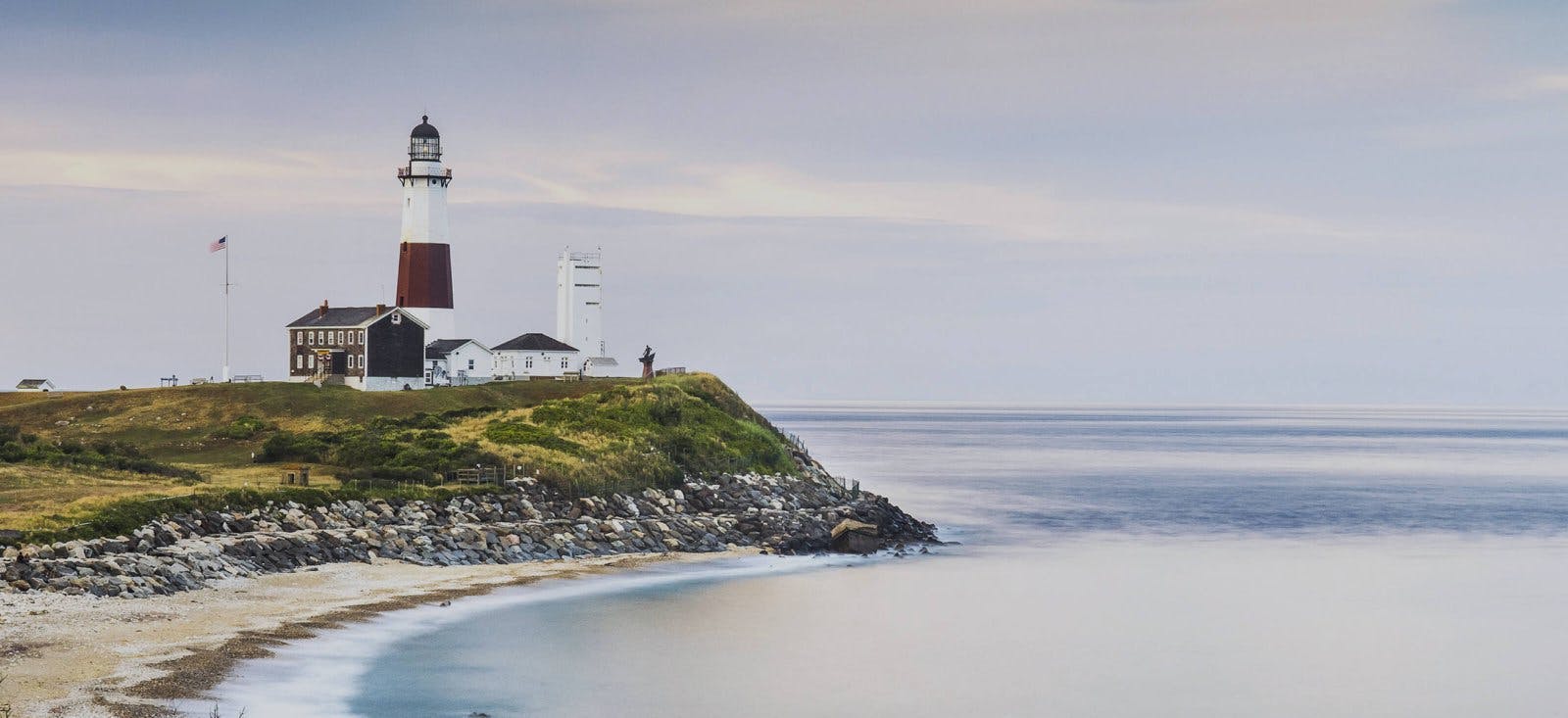
.css-7gvbs7{max-width:var(--chakra-sizes-full);}@media screen and (min-width: 48em){.css-7gvbs7{max-width:600px;}} The Ultimate Experience: A Yacht Charter in New England
7 Day Itinerary
Block Island
Martha's vineyard.
New England Essentials
Restaurants
Summer is upon us, which for many New Yorkers and Bostonians means preparing for their Hamptons or Nantucket beach vacations. Just mentioning The Hamptons or Nantucket conjures thoughts of Americana, pristine coastline, lighthouses, and celebrities and titans of industry rubbing shoulders at summer time galas. But no matter how many times you have been to these summer retreats, you haven’t truly experienced this area until you have explored it by water on your own private yacht.
Yachting in New England and throughout the Hamptons is unlike anywhere else in the world: golden sand beaches and lighthouses; upscale boutiques in picture perfect towns; and stunning mansions on imposing cliffs. Sailing through this region, you will soon see that this coastline has more to offer than purely natural beauty – it possesses a wealth of history and culture dating back to the American colonial past and set against some of the most expensive and desirable real estate in the United States.
Itinerary for a Luxury Yacht Charter in New England
Here is a sample seven-day itinerary that will take you and your guests to some of the most well-known sites in New England. Check out our yachts in The Hamptons and plan your journey.

Embark on your yacht from Sag Harbor and take a short cruise to Shelter Island, where a tender can rendezvous with your yacht to bring you onshore for lunch at Sunset Beach. This East End staple feels more like St. Tropez than Long Island with its yellow-and-white parasols and Mediterranean vibe. After a relaxing post-lunch swim or a jet ski ride, take a sunset cruise back to Sag Harbor to dine aboard your yacht or head into town and to enjoy farm-to-table fare.

After breakfast onboard, head to the North Fork of Long Island, home to dozens of vineyards and charming small towns. Make sure to pay a visit to the lavender fields at Lavender by the Bay before heading into town for lunch at the Frisky Oyster in Greenport. After embarking on your yacht, head to the surf town of Montauk. Cruise to the famous Montauk Lighthouse and then drop anchor at Navy Beach, where you can take in the breathtaking sunset before heading back to Montauk for dinner at the Crow’s Nest where you’ll have some of the freshest local food with a view.

Known for its protected beaches, Block Island was named by the Nature Conservancy as one of the sites in the list of “last great places” in the Western Hemisphere. Visit the Mohegan Bluffs, and take the staircase to the bottom of the clay cliffs, and make sure to try a bowl of New England clam chowder at the National Hotel.
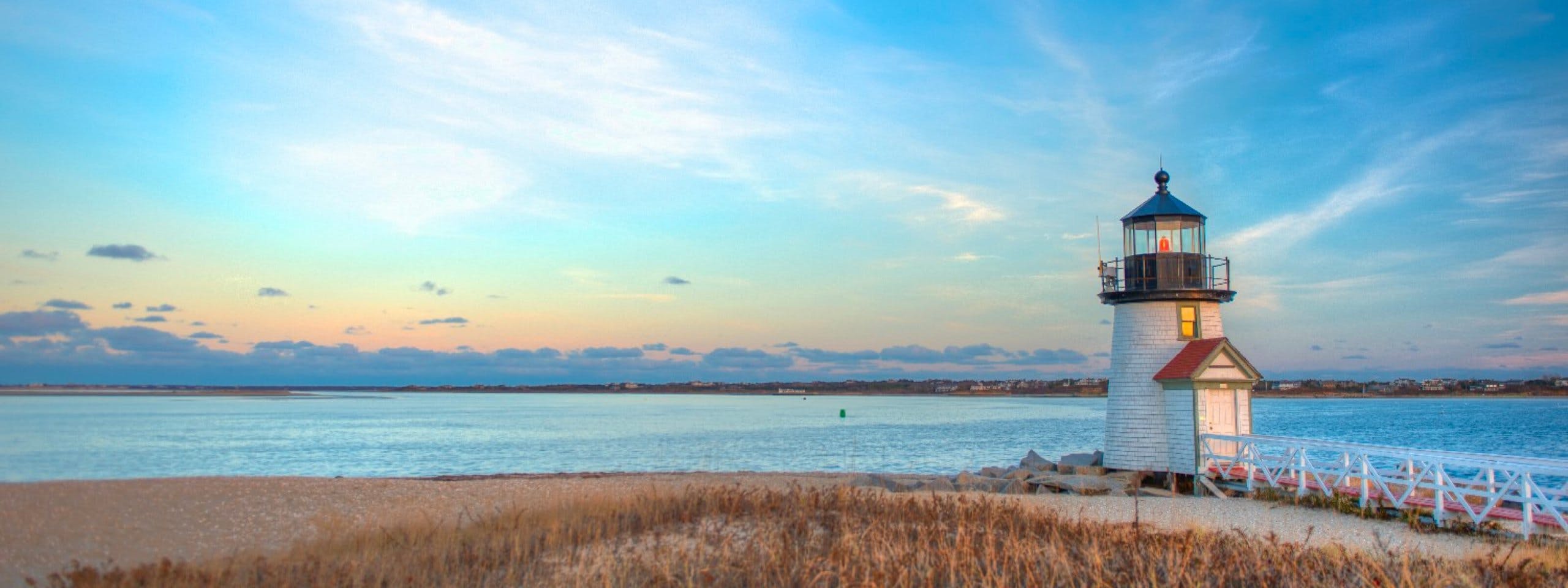
From Block Island take a morning cruise to Nantucket, made famous by the Kennedy family for their family compound in Hyannis Port. Originally a whaling port, Nantucket has been named a National Historic District, where little has changed since the 17th century — old-fashioned lamps still line the streets. Nantucket is better known for its dune-backed beaches and cobblestone streets and is famous for its 4th of July fireworks.
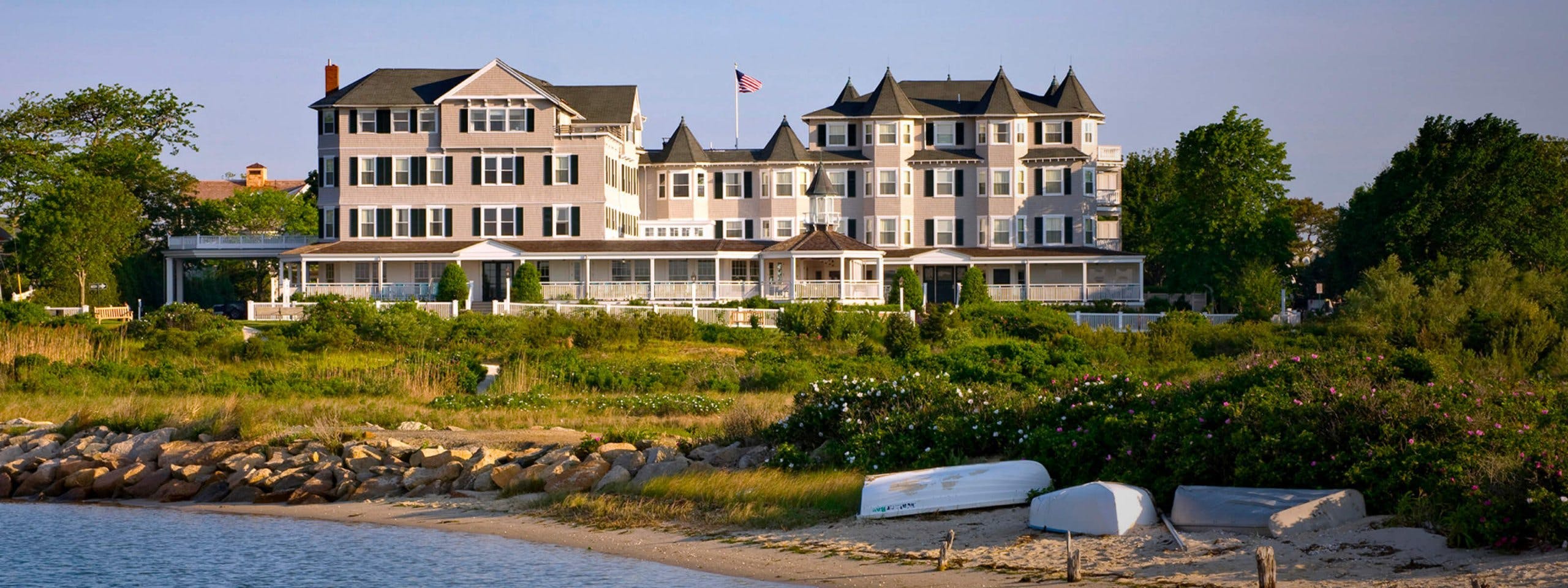
From Nantucket, take a short cruise to the storied island of Martha’s Vineyard, a summertime favorite of sitting U.S. presidents. Martha’s Vineyard boasts the oldest working carousel in the country and, if you’re traveling with children, you might consider taking a tour of the Farm Institute, where you can see livestock and explore lush vegetable and flower gardens. And no trip to the Vineyard is complete without some Murdick’s fudge. Have dinner in town before heading back to your yacht for a well-deserved night’s rest.

Wake up to breakfast aboard while you take a leisurely cruise to the yachting capital of the U.S. — Newport, Rhode Island. Home to the prestigious New York Yacht Club and some of the nation’s most impressive and historic mansions, this quintessential New England town is also known for its museums and art and jazz festivals. In Newport you will be able to stroll down the famous Cliff Walk and pay a visit to The Breakers, the former summer cottage of the Vanderbilt family. If admiring the mansions were not enough, you will also have the opportunity to dine at the historic Castle Inn, which was built in 1875.

After a breakfast in Newport town, take a restful cruise back to The Hamptons with lunch onboard. This morning cruise will get you back into Sag Harbor just in time for a late lunch in town followed by a lively dinner at Le Bilboquet restaurant overlooking the marina.
This one-week luxury yacht charter in New England brings you to some of the region’s most iconic towns on a journey covering just over 270 nautical miles. It’s an experience not to be missed and will make for lifelong memories for you and your guests. Enjoy this historic part of the world as it was meant to be seen — by the water.

Topping Rose House
Topping Rose House is a luxury haven in the heart of The Hamptons, where old and new come together in the spirit of this legendary area of eastern Long Island.

Gurney's Montauk Resort
Situated on Montauk’s most pristine stretch of oceanfront real estate, Gurney’s is a Hamptons icon and the only year-round resort in Montauk.

American Hotel
The American Hotel was built in 1846 at the height of the whaling era. The hotel is an elegant and professionally run establishment with a distinctive edge and character.

National Hotel
The National Hotel is the flagship victorian hotel on Block Island. It stands in the center of downtown in Old Harbor across from the ferry landing and New England’s best beaches.
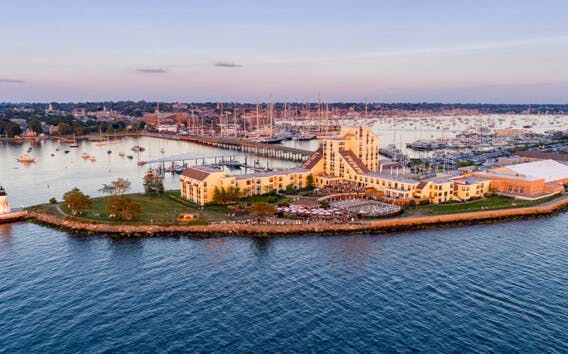
Gurney's Newport Resort
Situated on Goat Island and surrounded by Narragansett Bay, the Newport Harbor Island Resort offers the seclusion of a private island yet is just a jaunt from the shops and eateries of downtown Newport.
Restaurants:

Sunset Beach
With Edi Cungu’s menu that celebrates the healthy and delicious summertime food of the French Riviera and coastal Italy, Sunset Beach is a seaside bar and cafe and summer hotspot where you can enjoy an afternoon.
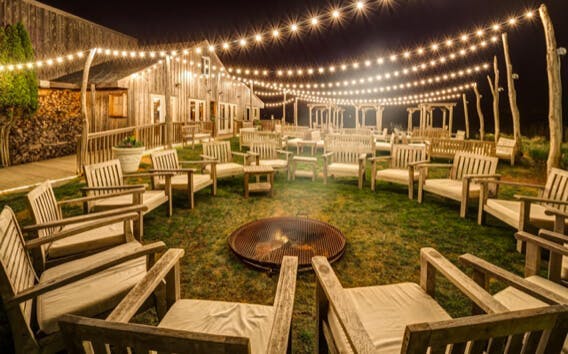
The Crow's Nest
Removed from the crowds in Montauk, this rustic Mediterranean restaurant is well worth a visit. Enjoy its variety of dishes, from fresh whipped ricotta to blue crab claw tagliatelle. Spend the evening hanging out on the lounge chairs overlooking Montauk Harbour, and at nightfall, don’t miss the fire pit s’mores.
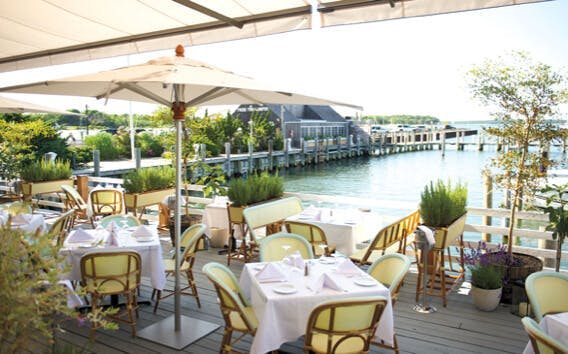
Le Bilboquet
This hot French bistro is one of the places to be and be seen in the summer. Go for the moules-frites, niçoise salad, or the best cajun chicken you have ever tasted (it’s what Le Bilboquet is known for).
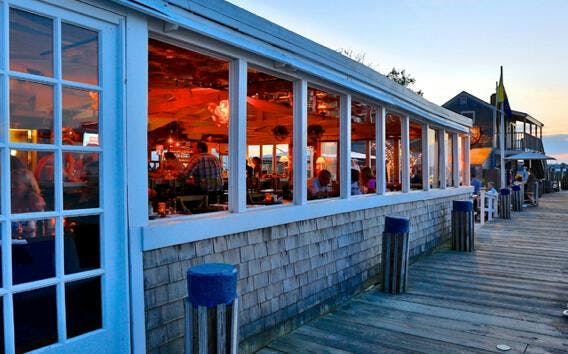
With an envious waterfront location in the heart of Nantucket Harbor, Cru offers an ideal environment any time of day. This casually elegant venue offers an experience unlike any other, where you can enjoy a glass of champagne, indulge in caviar and perfectly-shucked oysters or sip on a glass of rosé at sunset.

L’etoile is a modern restaurant in a restored historic whaling captain’s house on Martha’s Vineyard. It has a menu that is inventive, fresh, and seasonally driven. If the weather permits, sip the local “startini” in the charming bar-l’étoile-lounge.
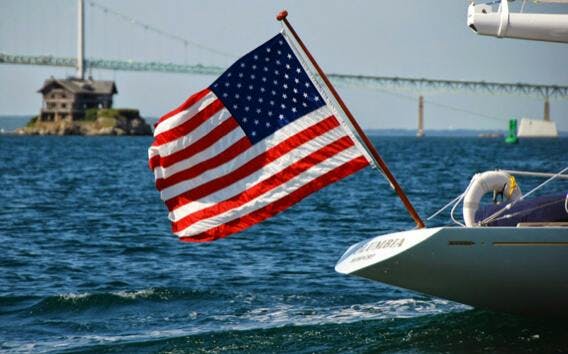
4th of July
The oldest continuous 4th of July celebration in the country is in Newport, Rhode Island. The city puts on a majestic fireworks show accompanied by numerous Independence Day-related activities, such as a 21-gun salute and an annual reading of the Declaration of Independence.

Newport Jazz Festival
One of the must-attend jazz festivals in the country, the Newport Jazz Festival is held every August in Newport, Rhode Island.

Hamptons Polo
At the most exclusive polo event in The Hamptons, guests enjoy the thrill of the polo match with preferred seating and a VIP cocktail party. This year’s event will be held July 20 and 27, 2024, and the number of available tickets is limited.

Nantucket Film Festival
Packed with celebrities and glamor, the Nantucket Film Festival, founded in 1996, focuses on screenwriting. This year’s festival will take place June 19 through 24.

Navigation menu

IMAGES
VIDEO
COMMENTS
Yacht Private Luxury Experiences. Enjoy an unparalleled experience on board with our unlimited premium bar and the expertise of our onboard chef and host. Our a-la-carte menu is designed to surprise your tastes. Have fun with our water toys, while our top-notch crew ensures that your every need is met with exceptional service.
A cockpit enclosure to keep the cockpit dry: $7,000. New sails: $8,000. A dinghy and an electric outboard [engine for the dinghy]: $5,000. A water maker to make freshwater from seawater: $2,000 ...
The Perfect Yacht for Any Occasion. Thousands of yachts for charter and purchase around the world. Charter. ... Here's what our clients have been saying. Cannot say enough good things about my clients experiences with Anthony and the YachtLife team. His boats and crew are... Mike M. AmEx Centurion Travel and Leisure. Our time on the 42' Wider ...
Currently, we live aboard a 2013 Lagoon 450f sailing catamaran. Our life seems like a dream, since it was only two years ago when we embarked upon the journey of a lifetime. By whittling down a thirty year plan to one year, we made the decision that life should not wait! We didn't let our lack of experience or time on a sailboat stop us.
Brian Trautman's 14-year sailing adventure aboard SV Delos has grown to include a family and a livelihood. Trautman initially thought his cruising adventure would be for less than two years ...
These people learned a lot when they gave up terra firma for boat life. ... The family had no sailing experience. But thanks to the G.I. Bill, Steve, a veteran, was able to take free American ...
Owners' Experiences. We'll take you on board some of the world's finest superyachts as we sneak inside their luxury vessels and chat to the superyacht owners. We'll keep you informed on who's who in the yachting world as you share in their experiences both portside and at sea, and take heed of their advice.
Living on a sailboat full-time is a journey that encompasses the full spectrum of human experience, blending moments of sheer joy and beauty with times of challenge and adversity. It's a lifestyle that demands resilience, adaptability, and a willingness to embrace the unknown. While the romantic allure of sailing the high seas is undeniable ...
A Comfy Bed, Mini Fridge, WiFi, Smart TV, Air Conditioning (or space heater), Microwave+, Running Water, clean, cute Linens & decor, Marine Toilet* …. All the essentials for a rustic glamping experience on the water. Perfect for a single or couple, each of these boats can also comfortably sleep a little kiddo or two, or your favorite furry ...
The co-founder of Super Yachting South Africa on why crew training is so close to his heart. The yacht captain who doubles as a musician on life at sea and the joy of serenading his guests. Tech entrepreneur and former chief engineer, Aaron Fidler, swapped crew life for superyacht ownership with his striking boat - AK Royalty.
A superyacht requires never ending upkeep. The yacht needs to be kept in immaculate condition, as do the crew, and the crew always need to be prepared for any situation. Working on a superyacht is very hard work; you have to be at the beck and call of guests who have some quite particular requests that are almost impossible to fulfill.
As for chartering a boat, you can expect to pay anywhere from 1,000 per night all the way up to well over $50,000 per week for larger ultra-luxury yachts. There are two options when chartering a yacht, all-inclusive or "plus expenses.". The all-inclusive options means you'll be getting nearly everything you'll need including a crew to ...
This one-week luxury yacht charter in New England brings you to some of the region's most iconic towns on a journey covering just over 270 nautical miles. It's an experience not to be missed and will make for lifelong memories for you and your guests. Enjoy this historic part of the world as it was meant to be seen — by the water.
You might also like the challenges and rewards of living on a boat. 3. You need to be diligent with cleaning. Living in a marine environment requires a substantial commitment to cleaning. Before living aboard, I remember thinking - cleaning will be a breeze in such a small living space. Well, not really.
There's lots you might not realize about boat life. Living on a boat is a dream for many people. You might imagine tropical anchorages with darting fish, solitude deep in nature, or evening cocktails on the stern as oranges and pinks splash across the horizon. Boat life is often romanticized, and when I tell people I've been living on a ...
Yacht life offers a unique set of experiences and freedoms that traditional homeownership cannot provide. While the financial aspect is crucial, the decision to live on a yacht often goes beyond mere economics. Living on a boat full-time can also mean a shift in priorities and lifestyle choices. For some, this means downsizing and simplifying ...
Boat Life 101: How to Live on a Boat and Travel the World! (2024) Waves lap at the hull of the boat. Your feet are in the glassy water, a glass of rum in your hand, and a glorious sunset in front of you. Of course, the weather is perrrfect. Just another day in the life of living on a boat.
What's the difference between this superyacht and the World?. The World is now 23 years old. She was created in the late '80s. She looks like a cruise ship. And the Ulyssia is a yacht — the ...
An electric wake boat provides a new way to experience life on the water. It glides across water with more than double the torque of most gas-powered wake boats.
The walls of the cuvuklia are painted with frescoes illustrating these events. You experience the same sensations as in the original temple, which was what they wanted to achieve during the construction - to give the opportunity to see these places to those who cannot make a pilgrimage to the Holy Land. ... Boat Tours & Water Sports in Istra ...
If you are booking for a multi-day charter and your reservation is confirmed more than 30 days in advance, a deposit of 50% of the cost of the yacht is processed immediately in order to hold the yacht. Once your embarkation date is 30 days away, the other 50% is collected for the price of the yacht, plus the APA, plus the taxes due.
Istra (Russian: И́стра) is a town and the administrative center of Istrinsky District in Moscow Oblast, Russia, located on the Istra River, 40 kilometers (25 mi) west of Moscow, on the Moscow-Riga railway. Population: 35,111 (2010 Census); [2] 33,652 (2002 Census); [6] 35,046 (1989 Soviet census). [7] It was previously known as Voskresenskoye, Voskresensk (until 1930).
Remember, YachtLife is here to help you find the perfect yacht for any occasion but whenever booking a yacht charter, work with your broker ahead of time to ensure everything is ready for your once you embark. Once aboard your yacht, the captain and crew will be there to make sure you are safe and have an unforgettable experience.
You can walk about 2 km from either Istra or New Ierusalem stations to the monastery. If you want to take bus - №4 will take you there from both stations, otherwise the scheme of buses is a bit confusing. You can take №№26,32,33,34,40,46,48 from Istra station to museum as well, and from New Ierusalem station every bus bound either to ...
2. New Jerusalem State Museum Of History And Art. 325. Art Museums. New Jerusalem State Museum of History and Art (also known as the New Jerusalem Museum) is one of the largest regional museums associated with the unique monument of the Moscow region - Resurrection…. 3. NOVAYA RIGA Outlet Village. 26.